Travel Reservation Hotline
Call and book your hotel now.
Domestic Toll-Free for US and Canada: 1-800-997-1438
Worldwide: +1-817-983-0682
- Parks and Wildlife
- Sightseeing
- Theatre and Dance
- Restaurants
- Exhibitions
- Travel Tips
- Feature Your Business
- Top Things To Do
- Hot Sellers
- Outdoor Activities
- Walking & Biking Tours

How About Visiting Oslo in the Month of July
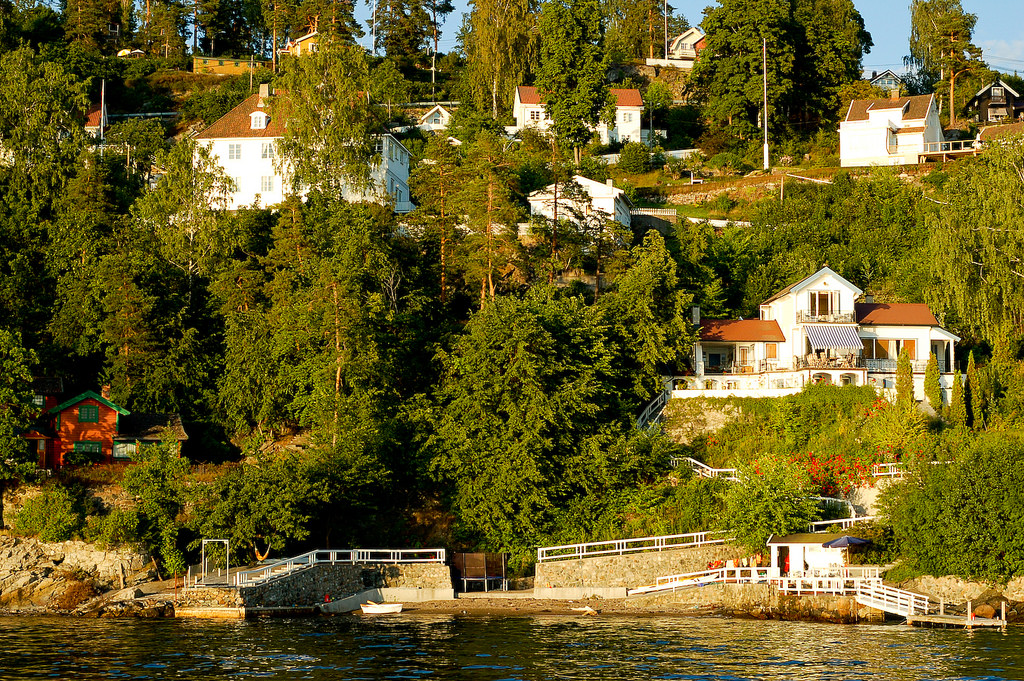
Credit: Flickr / Levent Ali / CC BY-ND 2.0
How about planning a visit to Oslo in July? If wondering, why you should arrive during the summer months then keep reading as we have rounded up the most exciting things to do in Oslo in July.
In the month of July, the average temperature in Oslo is around20°C (68°F). Occasionally, the temperature could reach 33°C (90°F). Also, expect rains and the average rainfall in July is 82mm. The summer months are just perfect to enjoy beach activities, swimming, and some other super cool activities .
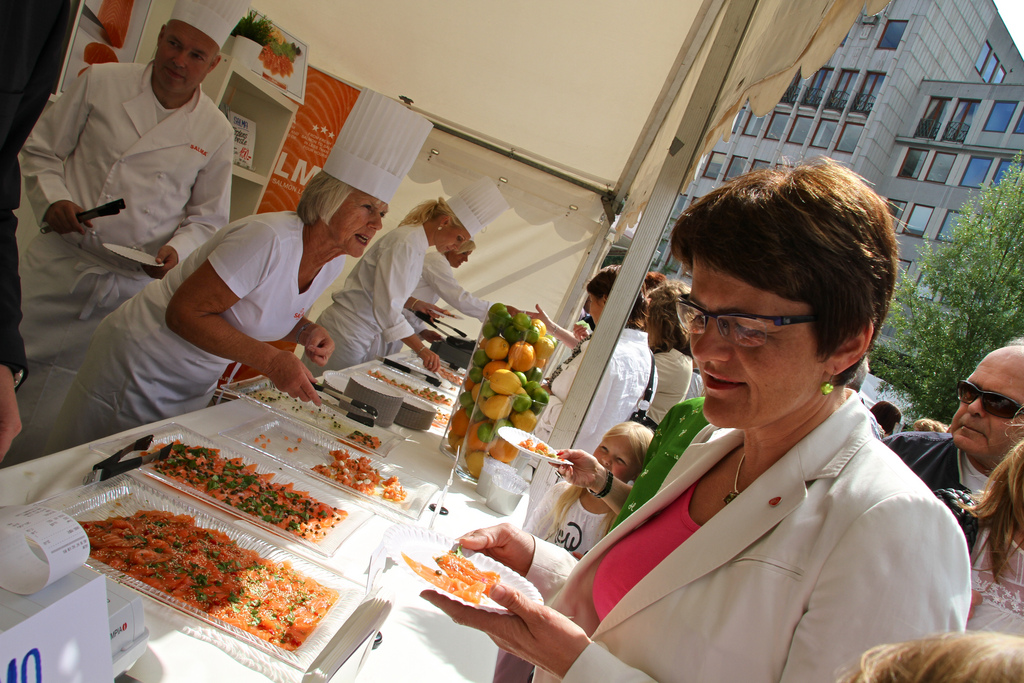
Credit: Flickr / ARKIV: Fiskeri- og kystdep / CC BY 2.0
In July, you can celebrate a food festival and will be spoilt for choice at Norway's biggest food festival, the Gladmat 2017. The food festival is a wonderful platform for over 250,000 foodies, chefs, and families from all over the globe coming together for a celebration of global gastronomy and Norwegian cuisine. So, whether it is Asian-style herring tempura or a king crab taco, one can experience the food magic at this food festival.
After a hearty gastronomic treat, take out time to treat your soul with some stunning art exhibitions at the Astrup Fearnley Museet (Astrup Fearnley Museum of Modern Art). In July, you can admire the artworks at 'The World is Made of Stories' and the 'Chinese Summer' exhibitions.
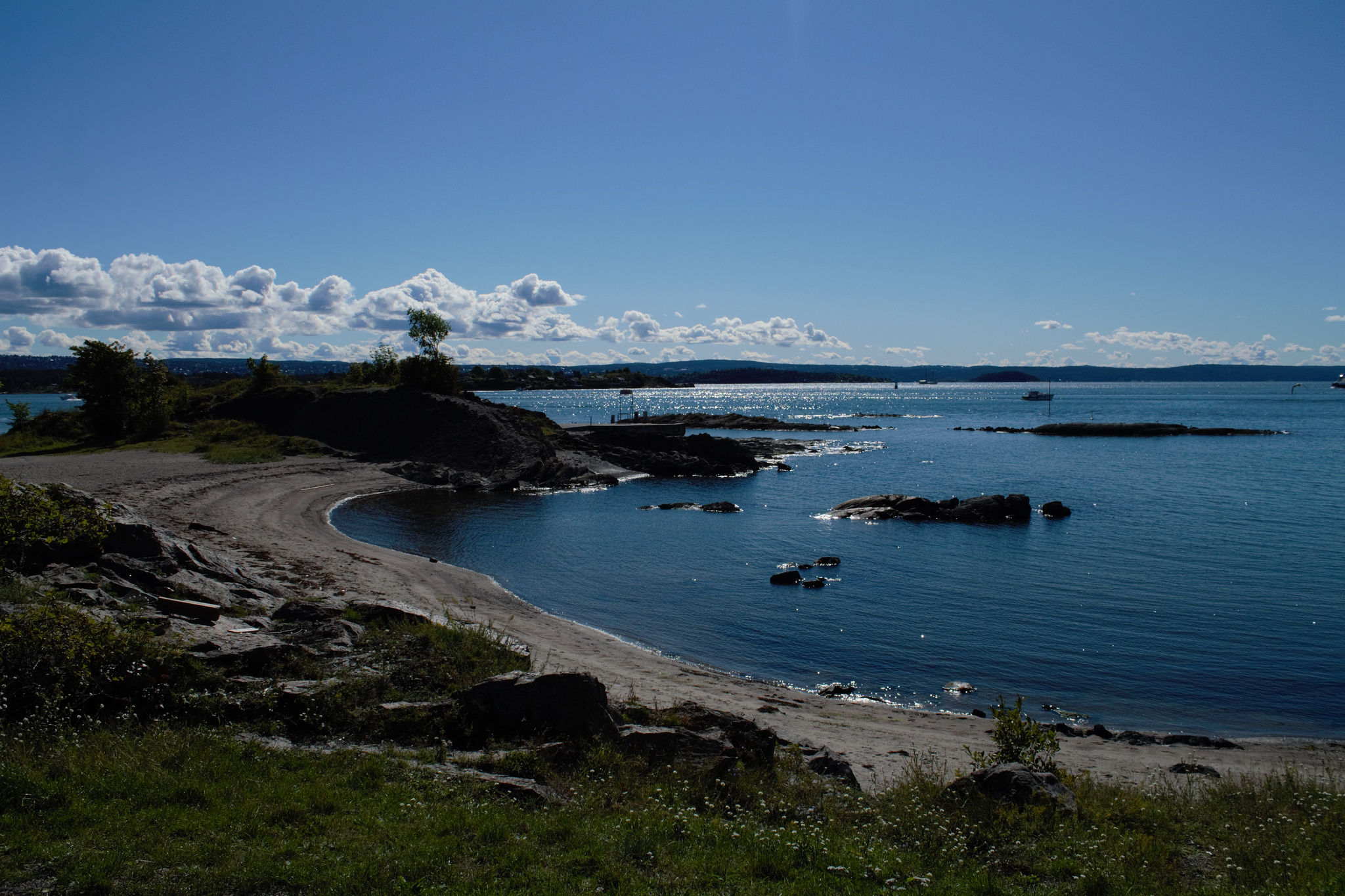
Credit: Flickr / Elisabetta Stringhi / CC BY 2.0
Get ready for some city sightseeing tours and visit the Bygdoy Peninsula, a popular recreation spot to enjoy the beaches, play volleyball, and also go biking. Take out some time to explore the Oslo Fjord and top sites like the Holmenkollen Ski Museum, one of the oldest ski museums in the world.
Leave a Reply
Oslo Travel Guide
Courtesy of william87 | iStock

Best Times To Visit Oslo
The best time to visit Oslo is from May to August when the temperatures rise and there are surprisingly affordable room rates available, though these options often fill up fast. Daytime temps generally hover in the 60s and 70s, but evenings can get chilly at times, so remember to bring a coat. Like Stockholm and Reykjavik , Oslo can experience nearly 24 hours of daylight in the summer, with the famous midnight sun usually appearing in June or July. On the flip side, there are winter days of near total darkness. This is matched with frigid weather and temperatures diving into the 20s.
Weather in Oslo
Data sourced from the National Climatic Data Center
Find Flight and Hotel Deals
Navigate forward to interact with the calendar and select a date. Press the question mark key to get the keyboard shortcuts for changing dates.
Navigate backward to interact with the calendar and select a date. Press the question mark key to get the keyboard shortcuts for changing dates.
Popular Times to Visit Oslo
Tourism volume is estimated based on in-market destination search query interest from Google and on travel.usnews.com in 2015-2016. Hotel prices are sourced from a sample of U.S. News Best Hotels rates through 2015-2016.
Explore More of Oslo

Things To Do
Best hotels.

You might also like

# 9 in Best Places to Visit in June

# 9 in Best Family Vacations in Europe

# 18 in Best Christmas Vacations
If you make a purchase from our site, we may earn a commission. This does not affect the quality or independence of our editorial content.
Recommended
The 26 Best Beach Resorts in the World
Marisa Méndez|Erin Vasta|Rachael Hood|Catriona Kendall September 5, 2024

30 Fun Fall Weekend Getaways for 2024
Holly Johnson August 29, 2024

The 19 Best Fall Family Vacations for 2024
Amanda Norcross August 27, 2024

The 28 Best Water Parks in the U.S. for 2024
Holly Johnson|Timothy J. Forster May 8, 2024

The 18 Best Napa Valley Wineries to Visit in 2024
Lyn Mettler|Sharael Kolberg April 23, 2024

The 25 Best Beaches on the East Coast for 2024
Timothy J. Forster|Sharael Kolberg April 19, 2024

The 50 Best Hotels in the USA 2024
Christina Maggitas February 6, 2024

The 32 Most Famous Landmarks in the World
Gwen Pratesi|Timothy J. Forster February 1, 2024

9 Top All-Inclusive Resorts in Florida for 2024
Gwen Pratesi|Amanda Norcross January 5, 2024

24 Top All-Inclusive Resorts in the U.S. for 2024
Erin Evans January 4, 2024


- What to do in Oslo in July 2024
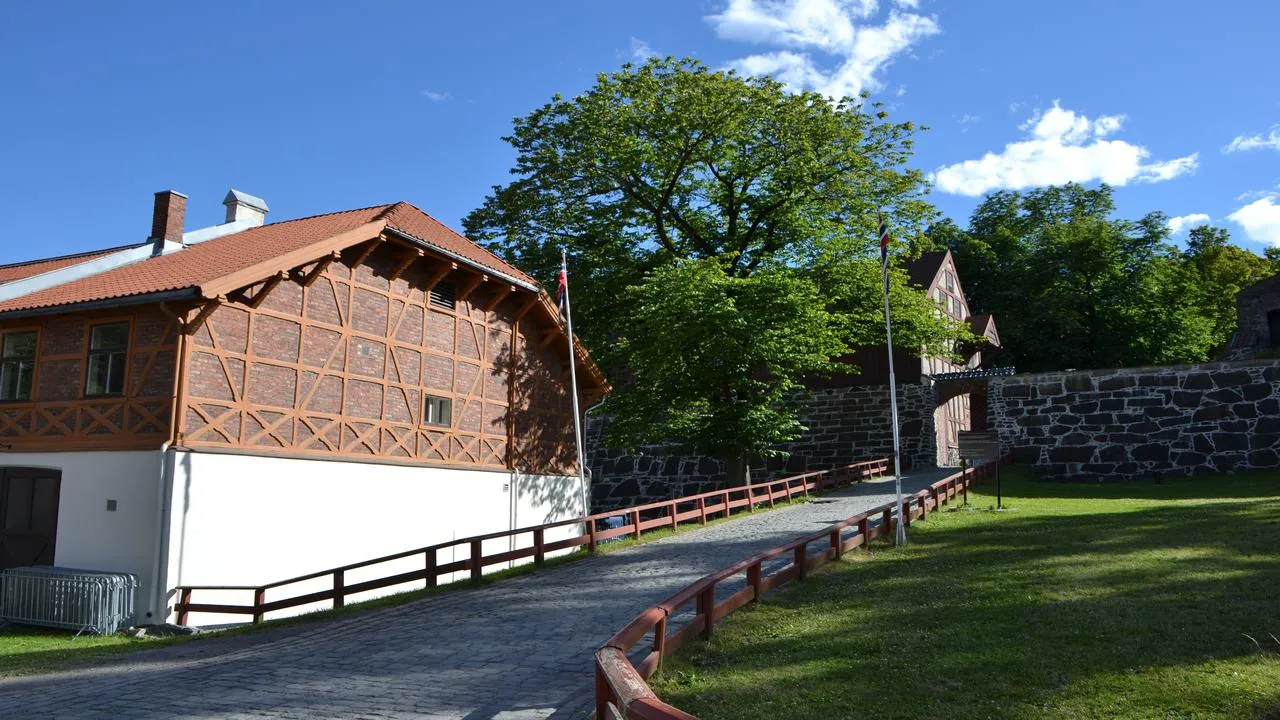
Why you should visit Oslo in July
Oslo weather in july, oslo events in july.
- Oslo's top places to visit in July
Flights, tours, and hotels in Oslo
Video guide.
July is the perfect time to visit Oslo , with long days and pleasant weather. The city comes alive with a variety of outdoor events, festivals, and activities, making it an ideal destination for travelers seeking a vibrant cultural experience. From exploring the natural beauty of the surrounding fjords to immersing yourself in the local art and music scene, Oslo has something to offer for everyone in July.
In July, Oslo experiences average temperatures ranging from 13°C (55°F) to 20°C (68°F), making it a delightful time to explore the city and its outdoor attractions. Additionally, the extended daylight hours provide ample time for sightseeing and outdoor activities, creating a wonderful atmosphere for travelers to enjoy their visit to the Norwegian capital.
Oslo Jazz Festival
The Oslo Jazz Festival is a highlight of July, attracting renowned musicians and jazz enthusiasts from around the world. The festival showcases a diverse range of performances, including outdoor concerts, club gigs, and jam sessions, creating an electric atmosphere throughout the city.
Oslo Pride is a lively and inclusive celebration that takes place in July, featuring a colorful parade, concerts, parties, and various events advocating for equality and diversity. The city embraces the LGBTQ+ community, making it a vibrant and welcoming environment for all visitors.
VG-Lista Topp 20
VG-Lista Topp 20 is a large-scale free outdoor concert held in Oslo , showcasing some of the biggest names in Norwegian and international music. The event draws a massive crowd, creating an unforgettable musical experience amidst the picturesque setting of the city.
Oslo’s top places to visit in July
Vigeland sculpture park.
Vigeland Sculpture Park is a must-visit destination, featuring over 200 sculptures created by Gustav Vigeland. The park’s lush greenery and captivating artwork make it a serene and enchanting place to explore on a summer day.
Holmenkollen Ski Museum and Tower
For panoramic views of Oslo and its surrounding fjords, a visit to the Holmenkollen Ski Museum and Tower is highly recommended. In addition to its historical exhibits, the tower offers an unparalleled vantage point for capturing breathtaking vistas of the city.
Oslo Opera House
The Oslo Opera House, with its modern architecture and stunning waterfront location, is a cultural gem worth exploring. Visitors can enjoy a guided tour, watch a performance, or simply admire the building’s design while taking a leisurely stroll along its marble rooftop.
Akershus Fortress
Akershus Fortress, steeped in history and offering spectacular views of the harbor and the city, provides a fascinating glimpse into Oslo ‘s past. Exploring the fortress and its grounds, including medieval buildings and exhibitions, offers a captivating experience for history buffs and curious travelers alike.
Be sure to check the event schedules and opening hours of attractions in advance, as they may be subject to change.
Tours in Oslo
On our website you can compare prices at 120 of the most popular travel agencies
Hotels in Oslo
On our website you can find and book hotels with a discount of up to 60% off
Flights in Oslo
On our website you can compare prices on 728 airlines to find the most suitable tickets
More articles on this topic
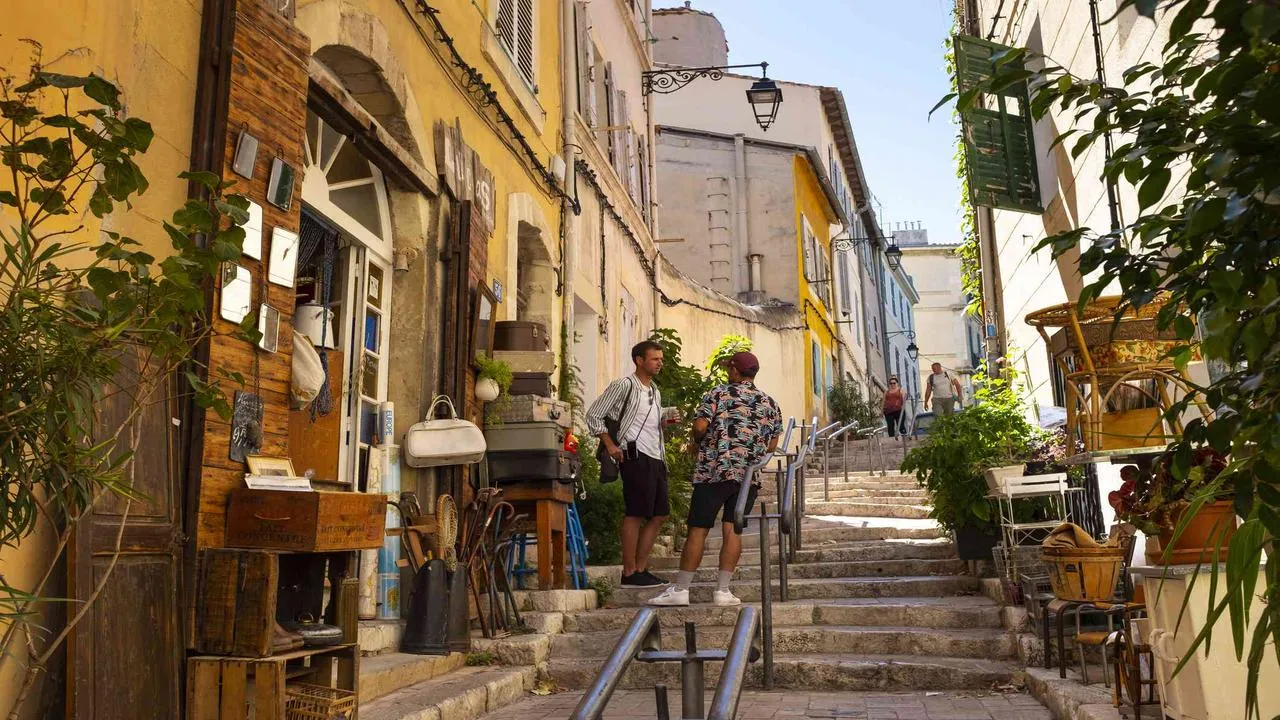
What to do in Marseille in October 2024
Why you should visit Marseille in October October is a fantastic time to visit Marseille, as the summer crowds have dispersed, and the weather is still pleasant. The city's vibrant...

What to do in Lucerne in May 2024

What to do in Bologna in July 2024
Why you should visit Bologna in July July is a fantastic time to explore Bologna, as the city comes alive with vibrant events, pleasant weather, and an energetic atmosphere. The...
- Search Please fill out this field.
- Manage Your Subscription
- Give a Gift Subscription
- Newsletters
- Sweepstakes
- Where to Go in 2024 Overview: Where to Go in 2024
- The 50 Best Places to Travel in 2024
- An Insider's Guide to Paris — Luxury Hotels, Vintage Shops, and the City's Best Restaurants Included
- This Southern U.S. City Was Named One of the Best Places to Travel in 2024
- 5 Coastal Towns in Alaska That Are Adorable in Any Weather
- T+L's Review of Regent Seven Seas Cruises’ Seven Seas Grandeur
- This Exclusive Helicopter Dining Experience Is the Best Way to See the 'Grand Canyon of Mallorca’
- Belmond Brought Back Its Most Thrilling Trains Through Asia – Here's What to Expect
- How to Plan the Perfect Trip to Montreal
- Georgia May Be Getting Its First National Park Soon — and It Has More Than Just Scenic Trails
- How to Plan the Perfect Trip to Costa Rica
- How to Plan a Trip to Italy's Amalfi Coast
- This Stunning Region in Portugal Is a Wine Lover's Dream
How to Visit Oslo, According to Someone Who Spent 6 Years in Scandinavia
- This South American City Is One of the Best Places to Travel in 2024
- The Caribbean's 'Nature Island' Has Rain Forests, Luxury Hotels, and a Rich Creole Culture
- This Midwestern Gem Is Home to Barbecue, Music, and a Flourishing Womens’ Sports Scene
- I've Lived in Las Vegas for 8 Years — Here's My Ultimate Guide to Sin City
- Australia's Newest National Park Is Home to Dramatic Scenery and the Oldest Fossils in the World
- This Might Be Japan's Most Beautiful National Park
- How to Plan the Perfect Trip to New Zealand
- This California Destination Has Charming Small Towns, Incredible Wine, and a Stunning Coastline
- Fort Worth Has Great Modern Art, Cool Hotels, and a Vegan Dining Scene
- This Underrated European City Is One of the Best Places to Travel in 2024
- I Took My Kids on Spring Break to Rajasthan, India
- This Hip Eastern European City Is One of the Best Places to Travel This Year
- The Complete Guide to the Island of Hawai‘i
- How to Plan the Perfect Trip to Florida's Anna Maria Island
- This Luxe Colorado Hot Spot Is One of the Best Places to Travel in 2024
- 7 Best Beaches Near Merida, Mexico
- This Small Montana Town Is Built for Adventure Travelers Who Also Love Luxury
- This Classic Cruise Ship Has Everything From Black-tie Galas to Fjord Kayaking Excursions
- Where to Go in 2024 The 50 Best Places to Travel in 2024 An Insider's Guide to Paris — Luxury Hotels, Vintage Shops, and the City's Best Restaurants Included This Southern U.S. City Was Named One of the Best Places to Travel in 2024 5 Coastal Towns in Alaska That Are Adorable in Any Weather T+L's Review of Regent Seven Seas Cruises’ Seven Seas Grandeur This Exclusive Helicopter Dining Experience Is the Best Way to See the 'Grand Canyon of Mallorca’ Belmond Brought Back Its Most Thrilling Trains Through Asia – Here's What to Expect How to Plan the Perfect Trip to Montreal Georgia May Be Getting Its First National Park Soon — and It Has More Than Just Scenic Trails How to Plan the Perfect Trip to Costa Rica How to Plan a Trip to Italy's Amalfi Coast This Stunning Region in Portugal Is a Wine Lover's Dream How to Visit Oslo, According to Someone Who Spent 6 Years in Scandinavia This South American City Is One of the Best Places to Travel in 2024 The Caribbean's 'Nature Island' Has Rain Forests, Luxury Hotels, and a Rich Creole Culture This Midwestern Gem Is Home to Barbecue, Music, and a Flourishing Womens’ Sports Scene I've Lived in Las Vegas for 8 Years — Here's My Ultimate Guide to Sin City Australia's Newest National Park Is Home to Dramatic Scenery and the Oldest Fossils in the World This Might Be Japan's Most Beautiful National Park How to Plan the Perfect Trip to New Zealand This California Destination Has Charming Small Towns, Incredible Wine, and a Stunning Coastline Fort Worth Has Great Modern Art, Cool Hotels, and a Vegan Dining Scene This Underrated European City Is One of the Best Places to Travel in 2024 I Took My Kids on Spring Break to Rajasthan, India This Hip Eastern European City Is One of the Best Places to Travel This Year The Complete Guide to the Island of Hawai‘i How to Plan the Perfect Trip to Florida's Anna Maria Island This Luxe Colorado Hot Spot Is One of the Best Places to Travel in 2024 7 Best Beaches Near Merida, Mexico This Small Montana Town Is Built for Adventure Travelers Who Also Love Luxury This Classic Cruise Ship Has Everything From Black-tie Galas to Fjord Kayaking Excursions CLOSE Part of Where to Go in 2024
Oslo, Norway, is a year-round destination — with saunas, fjord cruises, and fascinating museums.
Best Hotels and Resorts
Best things to do, best restaurants, best time to visit, how to get there, best neighborhoods.
The mere idea of a summer day in a place like Oslo — home to subzero waters and black-metal music — might seem like a mirage. But the summers here are famously light and hot, with the Norwegian capital being an ideal playground for sunbathing, swimming, fishing, and hiking, replacing the darker months’ skiing, ice bathing, and roaring fireplaces.
Beyond its outdoor pursuits, Oslo 's eco-conscious efforts exceed most cities. In 2016, it introduced a “climate budget” with a goal of reducing emissions by 95 percent by 2030; two years later, 1,000 trees were planted for the Future Library project ; and in 2019, the city was crowned the European Green Capital .
Oslo’s young professionals and creatives may scatter themselves among the hip, diverse neighborhoods of Grünerløkka and Tøyen, or the more upscale Frogner and St. Hanshaugen (picture Parisian-like facades and tree-lined streets with mansions), but the main thing this city’s dwellers have in common is their commitment to time spent in nature. Visitors will find eco-friendly hotels committed to eliminating waste and championing reusable materials, restaurants that support third-world communities, and spas and saunas dispersed between the city’s central harbor and the dense surrounding forest.
Christopher Larson/Travel + Leisure
At a time when travelers are becoming aware of how their leisure choices impact the environment, it’s interesting to see Oslo’s dedication to learning about and introducing the bigger ideas behind eco work. September’s Oslo Innovation Week, for example, is largely digital, with the aim of solving real global challenges through entrepreneurship, innovation, and green tech — the subjects of its panels include energy, circular economy, and life-science investment. For anyone interested in such, its panels and events make it a good time to visit.
For me, having spent six years in Scandinavia, and long summers and winters in Norway , Oslo became a base for months at a time. Most favor Danish and Swedish coastal cities for their accessibility. Like any capital, the Norwegian city is fast-changing and home to global diasporas that help shape the identity of this fjord-laden delight.
Top 5 Can’t Miss
- Any trip to Oslo calls for a bracing ice dip and sauna session.
- History buffs might note the elaborate original fixtures of Sommerro, a former electricity factory
- Restaurant Alex is the newest place to see and be seen, yet it's ultra-welcoming.
- Marvel at Vigeland, a park displaying nude sculptures.
- Go cross-country skiing or hiking, or simply enjoy the view from the top, at Nordmarka.
Francisco Nogueira
Not long after Sommerro's fall 2022 opening, the hotel and spa made its way on Travel + Leisure' s list of the 100 best new hotels in the world . Its electricity factory history is felt while the mid-century interior design and moody lighting offer a polished feel. The 231 rooms of various sizes include annexes, sloped ceilings, and exquisite upholstery, plus top-tier amenities and service. Don't miss the newly opened Izakaya, which serves a Nordic-Japanese menu.
Villa Inkognito
The next-door sibling property of Sommerro, Villa Inkognito is housed in a former private residence dating back to 1870. It was transformed into offices for the city’s first electrical company, and later served as the Algerian embassy. The 11-room retreat is also available on a full buyout basis for an ultra-special trip, and each room is meant to feel like a home away from home.
Amerikalinjen
This revved-up former Norwegian America Line headquarters toots its own stylish horn. The cheery staff resurrects the bustling energy of the storied spot , which is decked out in snappy tailoring from Norwegian fashion favorite Holzweiler. Guests can also expect a chic library, original elevators, and ceiling stuccos that remain across the rooms.
The Well Spa & Hotel
The Well Spa & Hotel provides a holistic approach to health — meaning uniform bathing suits and gowns, a zero-digital policy in restaurants and communal areas, excellent menus, relaxing treatments, and a decidedly tranquil feel in the stunning sculpture garden. Located in Sofiemyr, about 20 minutes from Oslo's city center via its own shuttle, the impressively vast property makes for a divine solo sojourn or a social spa trip.
Clarion Hotel The Hub
Located close to Oslo Central Station, Clarion Hotel The Hub stands out with its magnificent lobby showcasing marble features, a sumptuous bar, and refurbished rooms.
Taylor McIntyre/Travel + Leisure
With rugged natural terrain skirting the entire city, it’s no wonder most extra-curricular activities here revolve around getting outdoors. A winding, 20-minute tram ride up Nordmarka takes visitors to the place where the trees for Future Library are planted. Take the lift to ski jump Holmenkollen, then stop by Holmenkollen Restaurant for tartare, a hot toddy, and mountaintop views.
Sauna and Swim
In the winter, the adrenaline rush is rewarding, and come summer, the waters are refreshing. At Badstuforening , it's $25 for a two-hour communal seat; enjoy the peaceful camaraderie (and views) of this sweet setup. Just make sure to bring a towel. Alternatively, try Salt , a sauna and art space that's set opposite the Snøhetta-designed opera house and hosts concerts, plays, and exhibitions.
Museum Hopping
Explore the intricate history of explorer life at the Fram , which contains the reconstructed remnants of the ship that raced to the South Pole, headed by Norwegian adventurer Roald Amundsen. In the center of town, check out the Nobel Peace Center for its permanent and roving collections of significant human rights accomplishments. An unsung gem is the Emanuel Vigeland Museum , complete with frescoes and gong bath concerts. Tip: Plan in advance planning due to the location's unusual opening hours.
Silent Fjord Cruise
Take a silent electric fjord tour on the Brim Explorer , with multiple options to suit your mood. There’s yoga on the deck, an elegant brunch, or a dinner cruise. Other perks of this slick and small liner include less crowds and an intimate setting for your crew.
Courtesy of Restaurant Alex
Restaurant Alex
An overnight success with everyone from students to billionaires, this restaurant calls for advance reservations. Emerging chef Alexandra Ek guides a well-priced brasserie-style menu, while the resident DJs don’t frown upon dancing on tables after hours.
Sabi Omakase
Japanese cuisine this far from East Asia has a terrific head start thanks to the abundance of cold sea. At Sabi Omakase , guests can expect a carefully composed seasonal menu that's served in a harmonious, low-lit space. Interestingly, the chef used to be a surgeon — the locale and its offerings are not remiss of precision, and, yes, you’re safe in his hands.
Solsiden Restaurant
Solsiden is a fail-safe institution for seafood on the water, dapper and light-filled with its glass structure. Put on a pretty dress or shirt and enjoy the harbor breeze at this summer-only restaurant. Order the renowned shellfish tower and the Champagne.
It’s no secret Norway can whip the wallet. This fresh and lovely Asian noodle joint is a way of preserving splurges for another day while still giving you the opportunity to eat well. Plus, every purchase feeds a child in Africa, where founder André Evju spent lots of time.
Plant-filled with kitschy white tiles and pink lighting, Njokobok offers Senegal-style community dining. Order the jollof rice, grilled dorada, or whole lamb and indulge in the location's famous onion sauce three ways. Oslo has a sizable African diaspora, so you'll find good Ethiopian, Eritrean, Moroccan, and Somali restaurants throughout the city.
While winter is for snow and snuggles, summer in Oslo is all about swimming and seafood.
Spring (or shoulder season), meanwhile, is ideal for soaking up art, history, opera, and the boutique shops. June through September sees music festivals such as By:Larm and Øya , and winter is prime time for ski tournaments, cozying up in a cabin, and cold-weather rituals like ice bathing and relaxing in a sauna.
The main thing to consider is winter's darkness — there are nearly 20 hours under cover, compared to summer’s two-hour nights.
Flying into Gardermoen is ideal for easy access into the city — it's about 20 minutes via speed train. Arriving at another airport means a long bus ride to the city, so don't be duped by the cheaper inter-European flights to Torp Sandefjord Airport. Another way to arrive is by cruise — check out eco operators such as Hurtigruten. You might also consider the spectacular, nearly eight-hour, cross-country Bergen Line route — often dubbed one of the most beautiful train rides in the world. If you're arriving from elsewhere in the country, domestic airline Widerøe is a great option.
Andrea Pistolesi/Getty Images
This east-of-central pocket is having a resurgence, thanks to the introduction of some trendy bars and restaurants, but its leafy, suburban feel is enduring. In addition to its waterside location, there are gorgeous local bistros, Frogner Church, grand foreign embassies, and lots of indie cinemas here. Plus, you're still a stone's throw from the theaters, palace, Litteraturhuset (House of Literature), and Vigelandsparken (Vigeland sculpture park).
The peninsula of Bygdøy has not only amassed some of the capital’s best museums and relics, but it’s also home to idyllic beaches — Huk, Paradisbukta, and Bygdøy Sjøbad — for swimming and picnicking. For something a bit more cultural, browse the collections at the Fram, Norwegian Maritime Museum, Oscarshall, or Norwegian Museum of Cultural History. The Gol Stave church is also a must-see.
Day Trip to Drøbak
The wider area of Oslofjord is full of small towns, and picturesque-as-they-come Drøbak is a wonderful jaunt for the day. Just a 40-minute drive (or 90-minute scenic ferry ride) outside of Oslo, Drøbak is home to the dramatic Oscarsborg Fortress , great shellfish in cute old buildings, a summertime opera, and even a quirky year-round Christmas shop.
How to Get Around
Once you arrive in Oslo via the Flytoget airport transfer, walking is doable and preferable to most. An Oslo Pass is handy for riding the tram, train, bus, and ferry. E-scooters can be less arduous than biking if you need to dash somewhere, but locals prefer a more relaxed and measured approach to getting around.
Where to Go in 2024
Related articles.

Things to do in Oslo in July
Navigate forward to interact with the calendar and select a date. Press the question mark key to get the keyboard shortcuts for changing dates.
Navigate backward to interact with the calendar and select a date. Press the question mark key to get the keyboard shortcuts for changing dates.
Looking for a different month?
July is a good time to visit Oslo . The weather is usually pleasantly warm and breezy, with temperatures ranging from 61—84°F (16—29°C).
Oslo has plenty to offer for visitors of all ages and interests. In this article, we tell you the top things to see and do for your July trip to Oslo. Get inspired by the events, activities, attractions, and experiences unique to July. We’ll let you know where to explore events based on your interests, whether that’s food, culture, art, music, sport or others.
We’ll let you know everything you need to prepare for the weather in Oslo in July. Learn about what to wear and pack for your trip, the average temperatures throughout July, temperature changes from morning to evening and much more.
Table of contents
- Experiences
- Weather and what to wear
- Attractions

Best events and things to do in Oslo in July
Top experiences in july, holidays in oslo in july.
There are no holidays in Oslo in July
Other notable holidays
- Flag Day ( June 14 )
- Father's Day ( June 15 )
- Juneteenth ( June 19 )
- Weather in Oslo in July
Temperatures on an average day in Oslo in July
The average temperature in Oslo in July for a typical day ranges from a high of 84°F (29°C) to a low of 61°F (16°C). Some would describe the temperature to be pleasantly warm. The general area may also feel breezy.
For comparison, the hottest month in Oslo , July, has days with highs of 84°F (29°C) and lows of 61°F (16°C). The coldest month, January has days with highs of 16°F (-9°C) and lows of -2°F (-19°C). This graph shows how an average day looks like in Oslo in July based on historical data.
Visiting Oslo? See our Oslo Trip Planner.
Historical temperature average in July
General weather summary, what to wear in july, best attractions for oslo in july, what's the weather like in oslo.
It depends on when you visit! We've compiled data from NASA on what the weather is like in Oslo for each month of the year: see the links below for more information.
- Weather in Oslo in January
- Weather in Oslo in February
- Weather in Oslo in March
- Weather in Oslo in April
- Weather in Oslo in May
- Weather in Oslo in June
- Weather in Oslo in August
- Weather in Oslo in September
- Weather in Oslo in October
- Weather in Oslo in November
- Weather in Oslo in December
Explore nearby places
- East Grand Forks
- Grand Forks
- Strandquist
- Lake Bronson
- Thief River Falls
- Red Lake Falls
All related maps of Oslo
- Map of Oslo
- Map of Minto
- Map of Warren
- Map of Argyle
- Map of East Grand Forks
- Map of Grand Forks
- Map of Arvilla
- Map of Pisek
- Map of Larimore
- Map of Reynolds
- Map of Strandquist
- Map of Northwood
- Map of Crookston
- Map of Karlstad
- Map of Edinburg
- Map of Hallock
- Map of Hatton
- Map of Lake Bronson
- Map of Thief River Falls
- Map of Red Lake Falls
- Map of Cavalier
- Map of Mountain
- Map of Lancaster
- Map of Mayville
- Map of Bathgate
- Map of Aneta
- Map of Pembina
- Map of Sharon
- Map of Hillsboro
- Map of Emerson
- Map of Finley
Oslo throughout the year
- Oslo in January
- Oslo in February
- Oslo in March
- Oslo in April
- Oslo in May
- Oslo in June
- Oslo in July
- Oslo in August
- Oslo in September
- Oslo in October
- Oslo in November
- Oslo in December

- Itinerary + map in one view
- Live collaboration
- Auto-import hotels and reservations
- Optimize your route
- Offline access on mobile
- See time and distance between all your places

The 15 Best Things to do in Oslo, Norway
- Pinterest 124
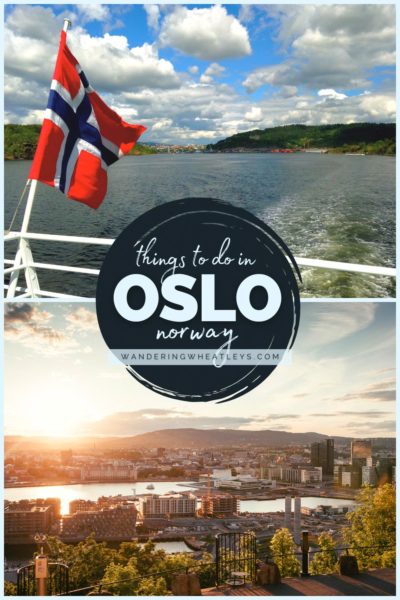
With world-class opera houses, incredible artwork almost everywhere you turn, gorgeous botanical gardens, and some of the best music festivals in Europe, you’ll never be at a loss for what to do in Oslo, no matter when you visit.
Travel in the summer for the chance to chill by the water’s edge, enjoy outdoor movie theaters, or have a go at ziplining. Or visit during the winter to warm up in a steamy floating sauna, ice skate in the center of town, or discover the city’s magical Christmas markets.
With such a huge choice of cool things to see and do, you may not know where to begin. To give you a helping hand, we’ve put together a list of the absolute best things to do in Oslo. Add these fun activities and attractions to your Oslo bucket list, and you’re guaranteed to have a fantastic time exploring “The Tiger City.”
Don’t forget to check out our web story: The 15 Best Things to do in Oslo, Norway
Disclaimer: This post may contain affiliate links. If you make a purchase or booking through one of our links we may earn a small commission (don’t worry, it’s at no extra cost to you).
The Top 15 Things to Do In Oslo
1. walk on the roof of the oslo opera house.
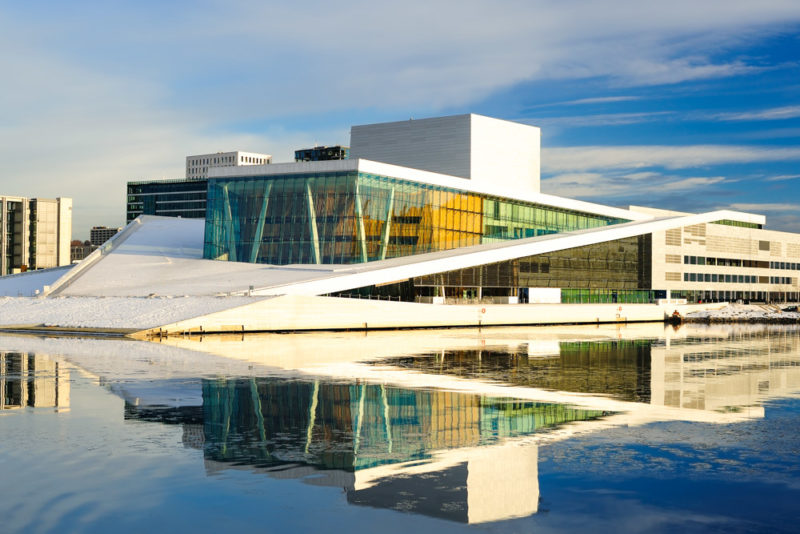
Even if you’re not into classical music, the Oslo Opera House is still home to one of the coolest things to do in Oslo. If you’re not in the mood to go inside, take a walk on the roof instead and enjoy some of the best views of the city.
You don’t have to be sneaky – the roof of the Oslo Opera House was designed to be walked on! The standout building is in the very heart of the city. From here, you can see the fjord archipelago with its tiny brightly-painted wooden houses. You also get great views of the city that stretch all the way up to the rolling hills and towering mountains far away.

The Oslo Opera House hosts many events throughout the year, a number of which are performed outside during the summer. Check the website to see what’s happening when you’re there. It’s magical to watch a ballet display from this unique location!
2. Visit the Kon-Tiki Museum
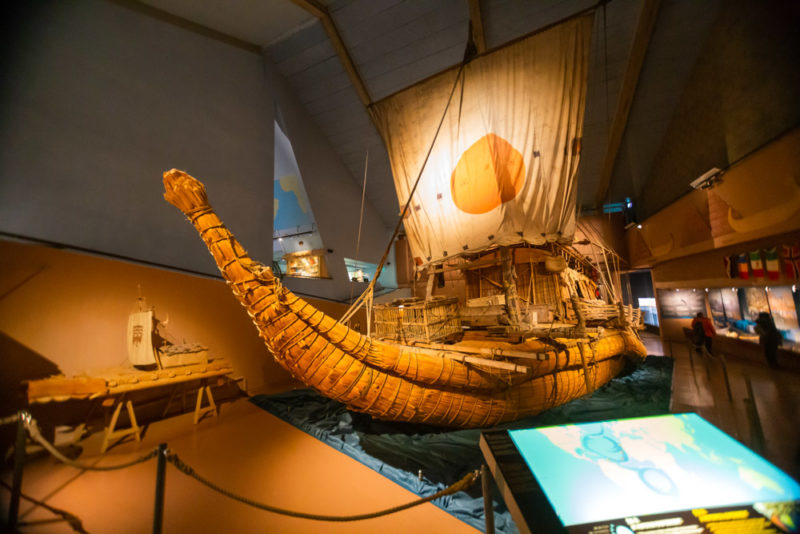
For some of the best things to see in Oslo, check out The Kon-Tiki Museum . This fascinating exhibition focuses on the adventures of Thor Heyerdahl, a 20th-century anthropologist. It’s named after the remarkable wooden boat in which he sailed from Peru to Polynesia in 1947.
The point of his dangerous journey was to prove that Polynesians had the ability to emigrate from South America to the Central and South Pacific. His journey was a success and he proved his point!
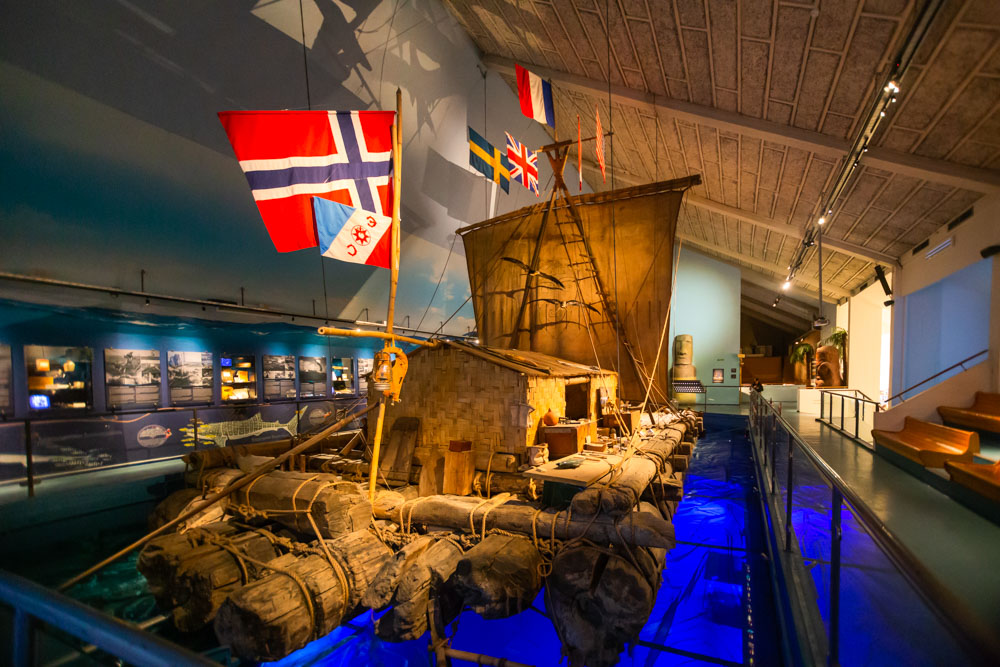
That’s not the only perilous adventure Heyerdahl had. He also sailed from Morocco to Barbados on a papyrus reed boat to show others that ancient Egyptians could have crossed the Atlantic. Again, he was successful and proved his point.
Inside the Kon-Tiki Museum, you’ll get to see the original boats he sailed on. There’s also a replica of the Tigris, on which he sailed from Iraq to Pakistan. An underwater exhibition with models of fish and sharks, a 100-foot replica of an Easter Island cave, and a special display designed to captivate children make up the rest of the museum.
3. Check out the unusual statues at Vigeland Park
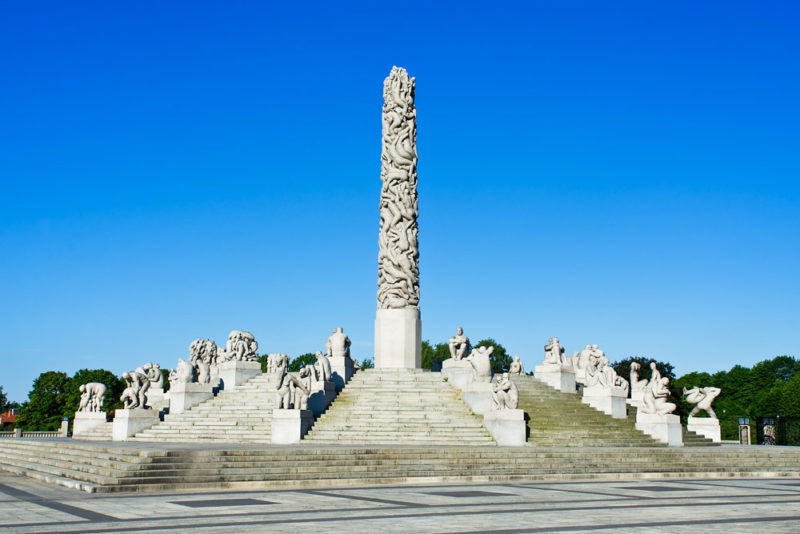
You’ll find one of the most unique things to do in Oslo in Vigeland Park . This park is open 24/7 and it’s free to enter. But the best part is that it’s home to some of the most bizarre statues you’ll ever see.
Vigeland Park boasts more than 200 sculptures created by 20th-century sculptor Gustav Vigeland. The statues are made from bronze and granite and feature the kinds of scenes you’ve probably only ever experienced in wacky dreams!
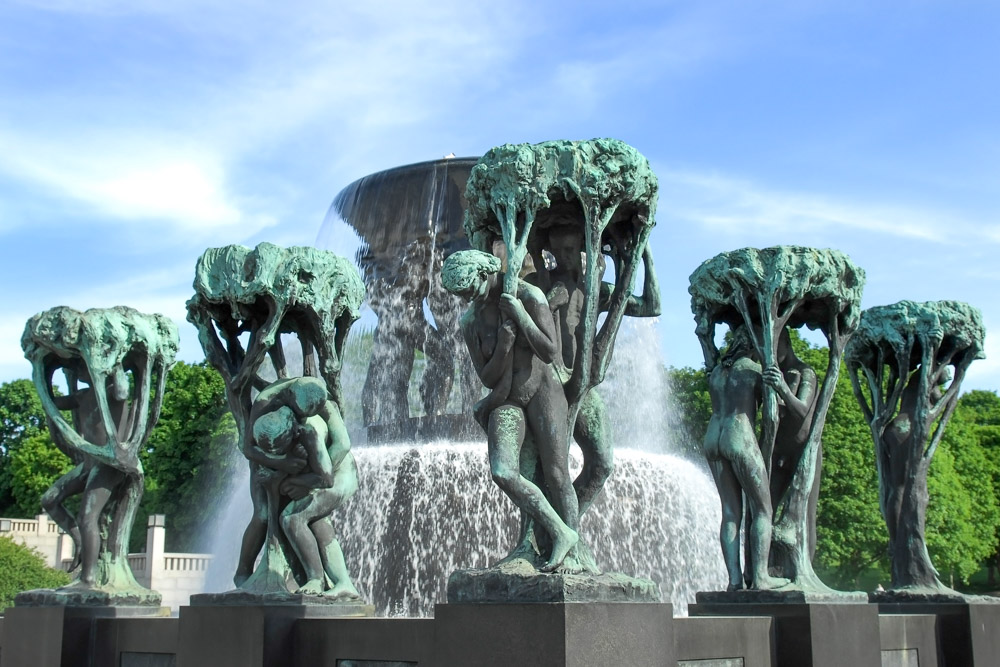
There’s a man fighting off four toddlers, a woman being ridden by a baby using her plaited hair as reins, a giant angry baby having a tantrum, and a man attempting to throw a woman into the water.
One of the most spectacular pieces is the colossal totem. It towers 46 feet into the sky and features 121 naked bodies. It took a staggering 14 years to carve out of a single piece of granite!
4. Walk around the University Botanical Garden
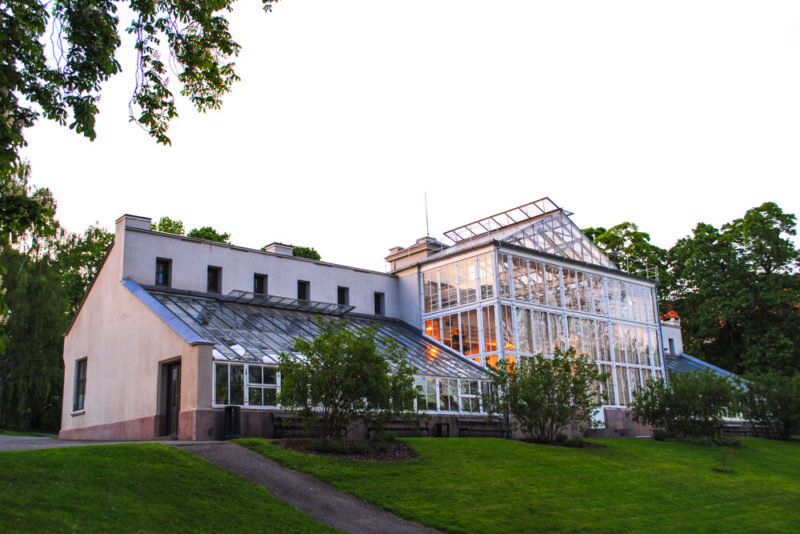
If you visit in summer, one of the best things to do in Oslo is to enjoy a leisurely stroll around the University Botanical Garden . This beautiful garden is the oldest of its kind in Norway and boasts 7,500 different species from all over the world.
The garden was established in Tøyen in 1814 and is a wonderfully peaceful and stunning part of the city. The highlight is the giant arboretum, which takes up most of the garden. Here you can admire 1,800 different plants of all colors, shapes, and sizes.
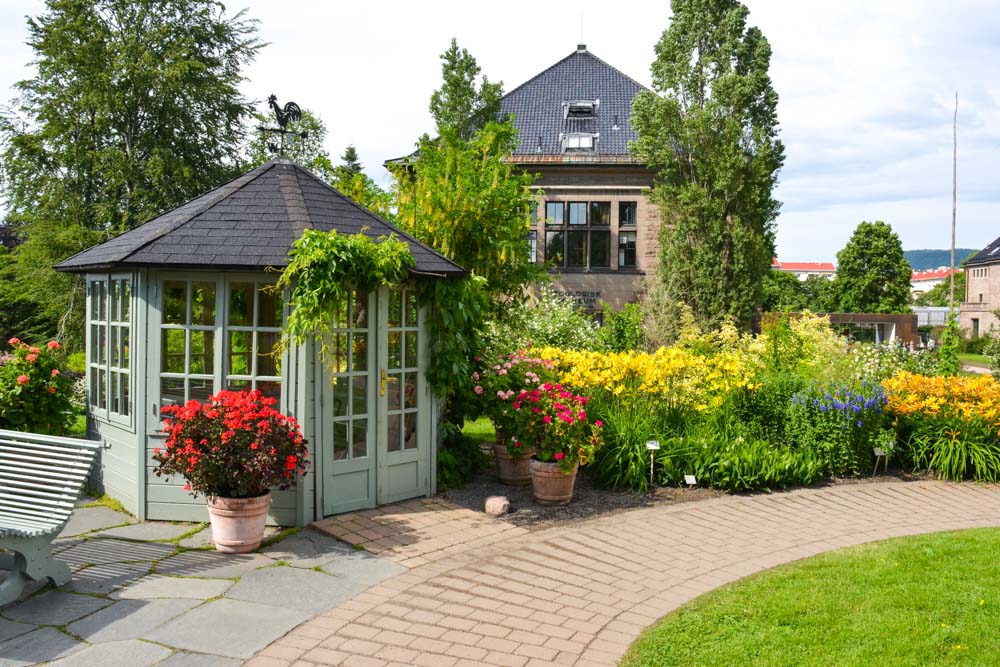
The plants are organized scientifically, and there’s loads of information telling you about them and the places they’re from.
As well as the plants, flowers, and trees, the University Botanical Garden is also dotted with woven sculptures designed and created by artist Tom Hare. Other interesting parts include the 1876 Victoria House (named after the Victoria water lilies in the nearby pond) and the 1868 Palm House.
The Scent Garden is another fascinating place. It was designed for visually-impaired visitors, but it’s something everyone can enjoy.
5. Try smoked salmon

There’s no better way to begin your day in Oslo than with a freshly toasted bagel smothered with rich cream cheese and generously laden with smoked salmon. Norwegian smoked salmon is some of the best in the world, and it can be found all over, from fancy restaurants to simple cafes and grocery stores.
In Norway, smoked salmon is given a long time to mature. This gives it its unique, deep flavor, rich butteriness, and melt-in-your-mouth texture. It’s so good that you can eat it on its own with a tiny squeeze of fresh lemon juice.
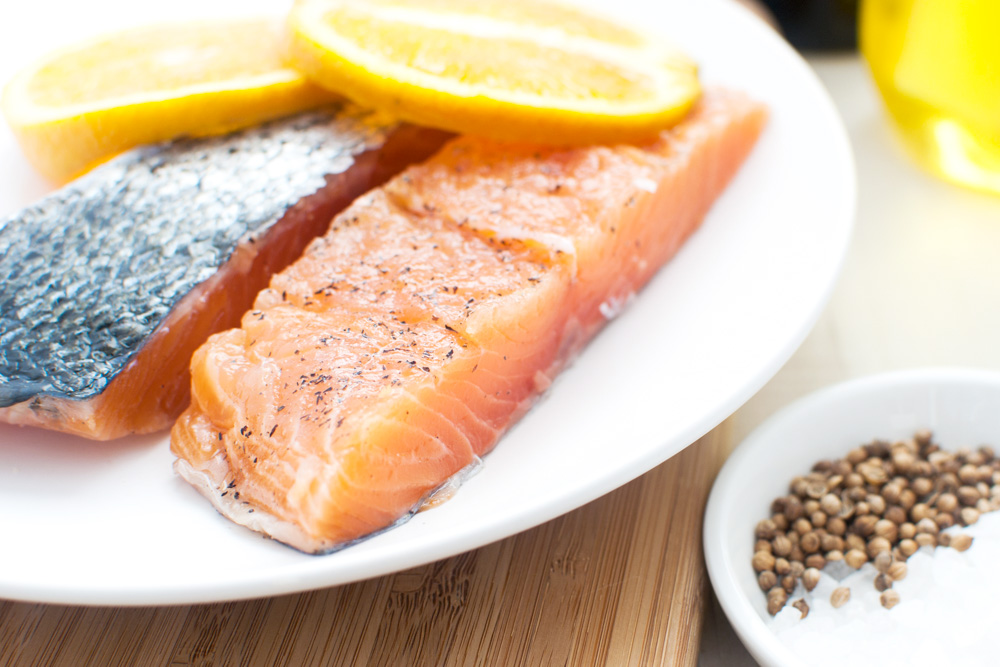
Fiskeriet Youngstorget is one of the best places to buy smoked salmon and loads of other fresh and smoked fish. Here it’s served chilled with mustard-mayonnaise, toasted breadcrumbs, pickled seaweed, and a fresh fennel salad.
For something a little cheaper, buy your own smoked salmon and have a picnic. The brand Jackob’s in the grocery stores Ultra and Meny is incredible.
6. Relax in a floating sauna
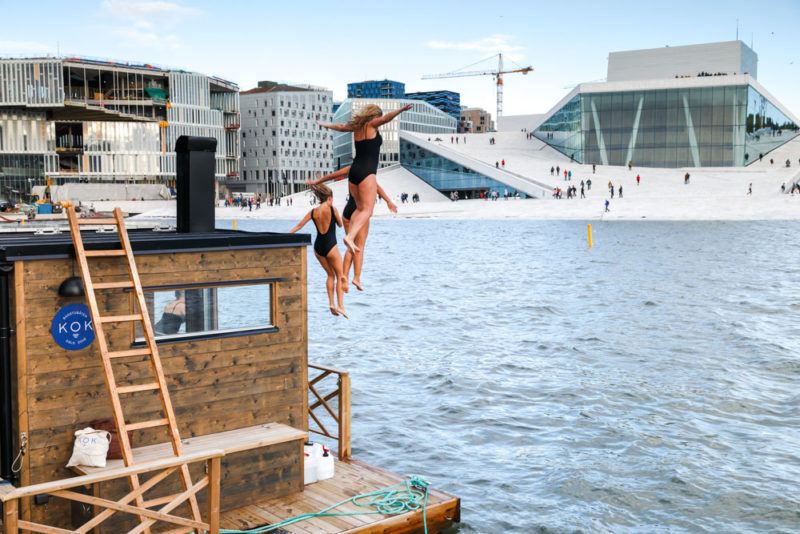
When all the Oslo sightseeing gets to be too much for you, take it easy and spend a few hours in a floating sauna. Opposite the Oslo Opera House, you’ll find KOK , a sauna company that boasts two sauna boats.
The wood-burning saunas can get incredibly hot. When you need to cool off, you can step outside and enjoy the cool air. Or if you’re really brave, you can jump off the sauna and go for a swim in the sea!
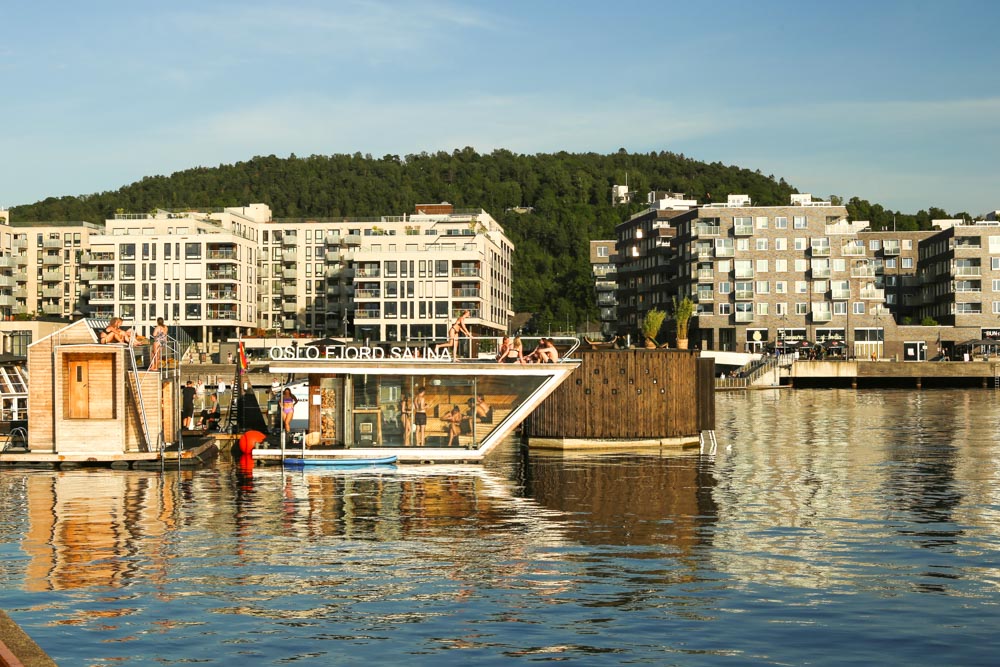
You can’t buy anything in the sauna, so make sure you take enough water with you to avoid dehydration. While you can take a little alcohol with you (up to two units per person), you can’t take anything dark in color (such as Coca-Cola or red wine) which could stain the wood.
If you visit in spring or summer, you can even take a boat trip in one of the floating saunas. Relax and gaze through the floor-to-ceiling windows as your captain takes you past the highlights of the city. The saunas are driven by solar-powered electric motors and are eco-friendly.
7. Party at Oya Festival
One of the top things to do in Oslo is to go to a music festival. The city holds a bunch of amazing music festivals throughout the summer that attract all kinds of big international artists and bands.
Oya Festival began back in 1999 and has since transformed into one of the city’s biggest and most popular outdoor music events. The festival goes on for four spellbinding days in August and always has an incredible lineup. Some past artists include Florence + the Machine, H.E.R., Sonic Youth, and the Arctic Monkeys.
Around 60,000 people attend the festival each year to see the live music performances held on three stages. If you can’t wait for the festival to begin, you can warm up with the Club Night, which takes place the night before. It’s held in a number of small clubs throughout the city and gives you a taste of what’s to come.
As well as the music stages, Oya Festival also features a market where you can grab everything from organic eats to original records and cartoon posters.
8. Explore the Norwegian Folk Museum
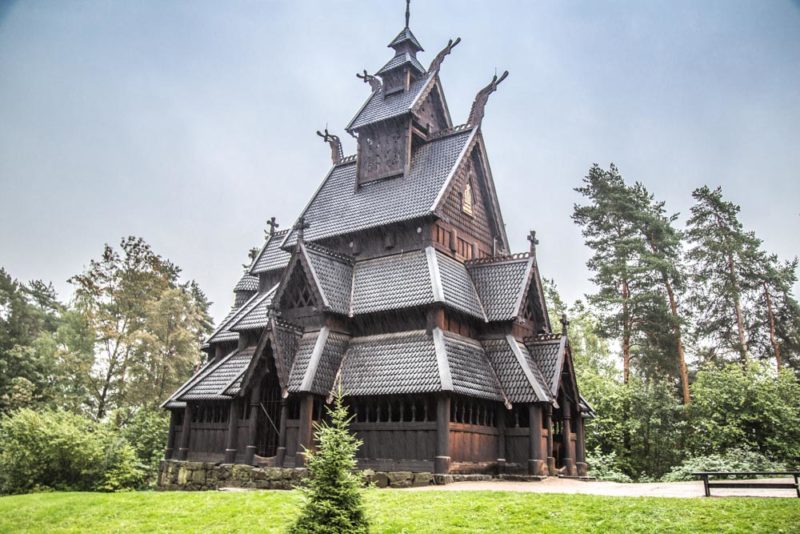
Step back in time with one of the most fun things to do in Oslo and visit the Norwegian Folk Museum . Located on the Bygdøy Peninsula, this spectacular open-air attraction has been going on for more than 115 years!
The Norwegian Folk Museum is less like a typical museum and more like a small village made up of all kinds of urban and rural Norwegian buildings from the Middle Ages all the way up until the 20th century. Here you can see the original Gol Stave Church, which was built in the middle of the 12th century, in addition to over 150 other historical buildings.
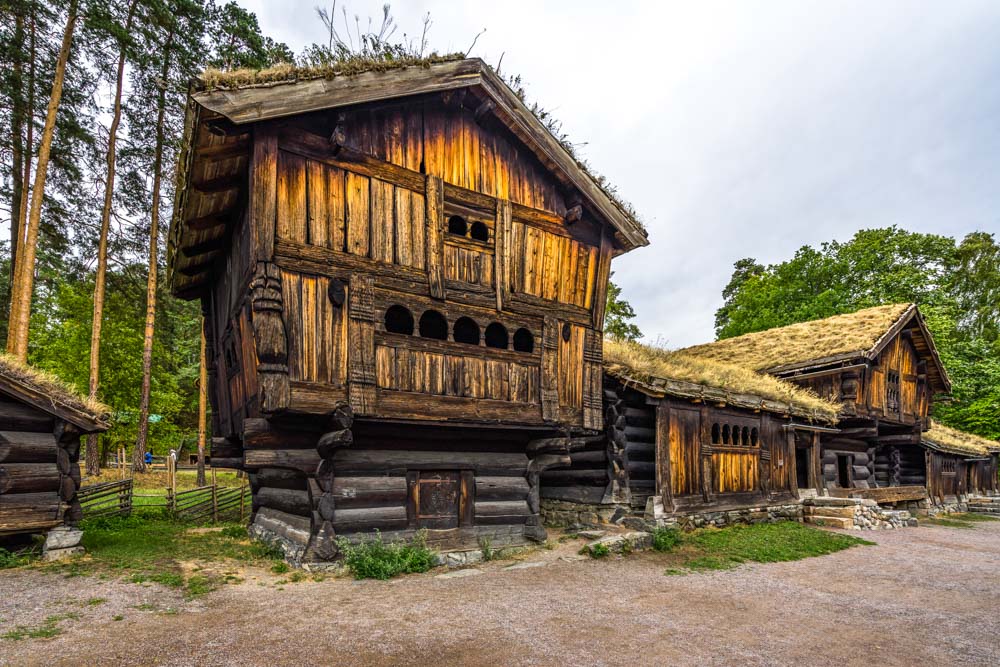
While the village is fun to walk around, you’ll discover even more wonders if you step inside the buildings. Many of the structures feature indoor exhibits that boast traditional Norwegian outfits, medical history displays, and toys children played with centuries ago.
The best time to visit is during the summer months. This is when you can feed the farm animals that call the museum their home, go on romantic horse and carriage rides, and even learn how to make traditional lefse flatbread yourself!
9. Check out the Tjuvholmen Sculpture Park
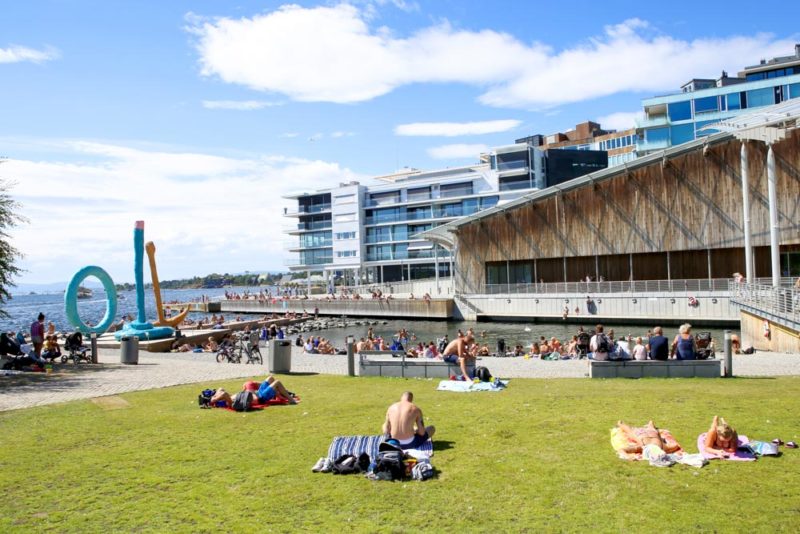
For some of the best sights in Oslo, spend some time at Tjuvholmen Sculpture Park . Designed by Renzo Piano (who also designed the neighboring Astrup Fearnley Museum ), the park is filled with all kinds of sculptures created by renowned contemporary artists from all over the world.
Antony Gormley, Louise Bourgeois, Ellsworth Kelly, and Anish Kapoor are just some of the artists who have their work publicly on display here.
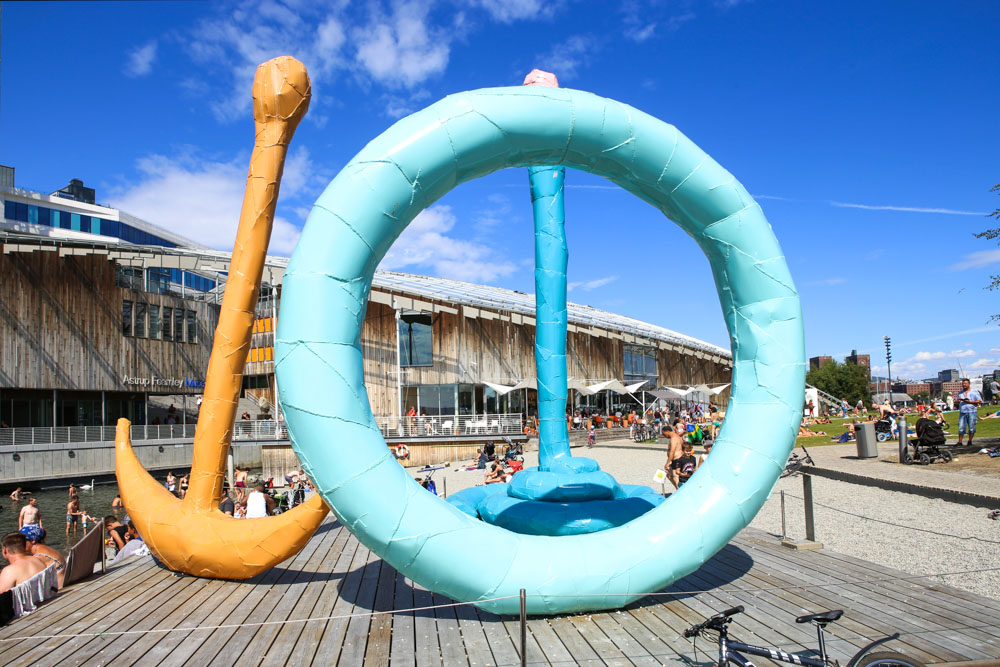
Most of the giant sculptures are exhibited on lush lawns and artificial gravel beaches next to the fjord. They’re all remarkable and entirely unique, from the bright orange anchor by the water and the odd-looking face on some steps to a reindeer made from a motorcycle and a man walking in the water with stilts.
Even without the sculptures, this part of Oslo is a wonderful place to enjoy a walk. There are loads of cafes, bars, and restaurants here where you can have a break before continuing with your sightseeing.
10. Eat a giant plate of meatballs
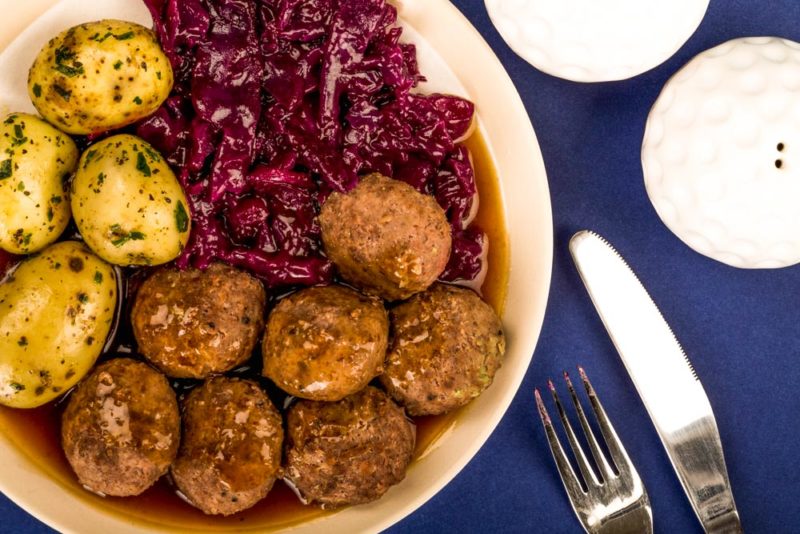
While Italy or Sweden may be the first place that pops into your mind when you think of meatballs, Norway does an amazing version of the classic dish, too. Similar to Swedish meatballs, Norwegian meatballs are smothered in a rich brown sauce and are a traditional comfort food dish you’ll find on practically every restaurant menu.
Norwegian meatballs are typically served alongside potatoes, steamed carrots, and tart cranberries. But some restaurants do their own spin on them and offer them with different accompaniments.

One of the best places to try this comfort food is in Kaffistova . This restaurant specializes in traditional Norwegian cuisine and opened in 1901. You can even see some of the original furnishings in the Norwegian Folk Museum!
Dovrehallen Bar & Restaurant is another fantastic place to dig into meatballs. Here they’re served with stewed cabbage. Because they’re freshly made and super popular, the meatballs aren’t available every day. But don’t be put off – there are plenty of other classic Norwegian dishes to try here, too!
11. Wander around Aker Brygge
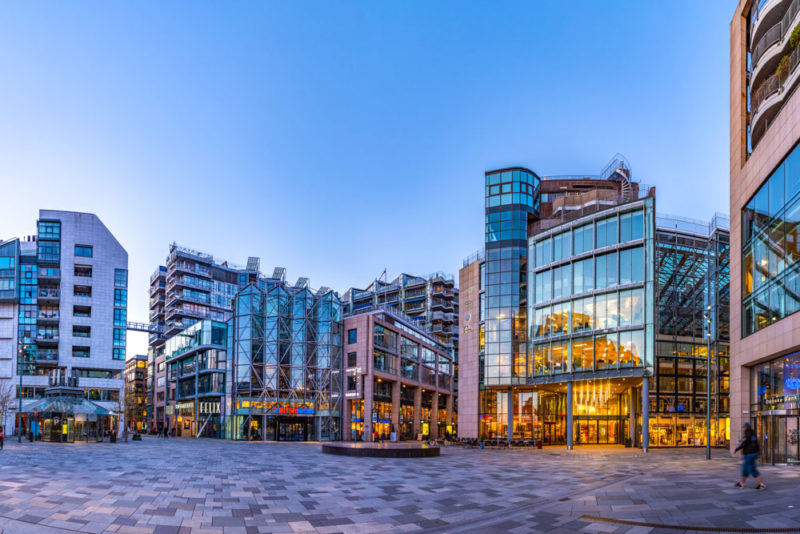
When you’re in the mood for a casual stroll, one of the best things to do in Oslo is to explore Aker Brygge. This cool and trendy neighborhood is one of the most sophisticated parts of the city.
Lining the waterside, Aker Brygge is home to all kinds of chic cafes, glamorous cocktail bars, and high-end restaurants. You’ll also come across a handful of designer fashion stores and gorgeous boutiques here.
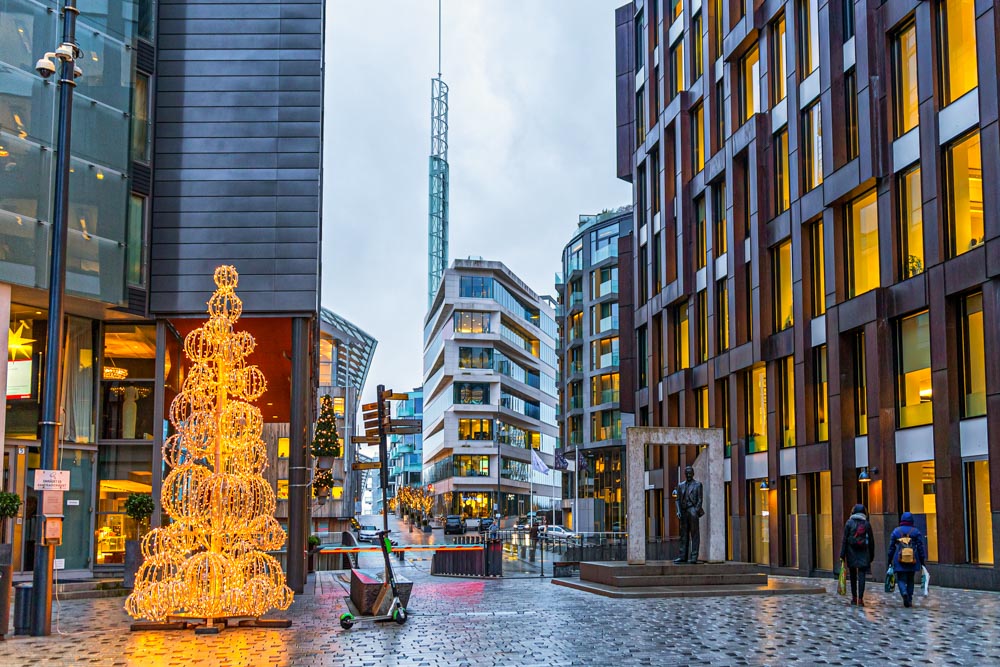
Up until 1928, this neighborhood was a rough shipyard surrounded by brick warehouses and factory buildings. Over time, the up-and-coming neighborhood was revamped, turning it into a place visitors would actually want to be. Today it’s one of the top locations to wine, dine, shop, and simply wander around.
This part of the city can get very pricey. If you’re hungry and don’t want to shell out the money to dine in one of the restaurants, we recommend ordering something from one of the food trucks instead. Sit on the pier, dangle your legs over the water, and enjoy your own budget al fresco dining experience!
12. Visit the Munch Museum
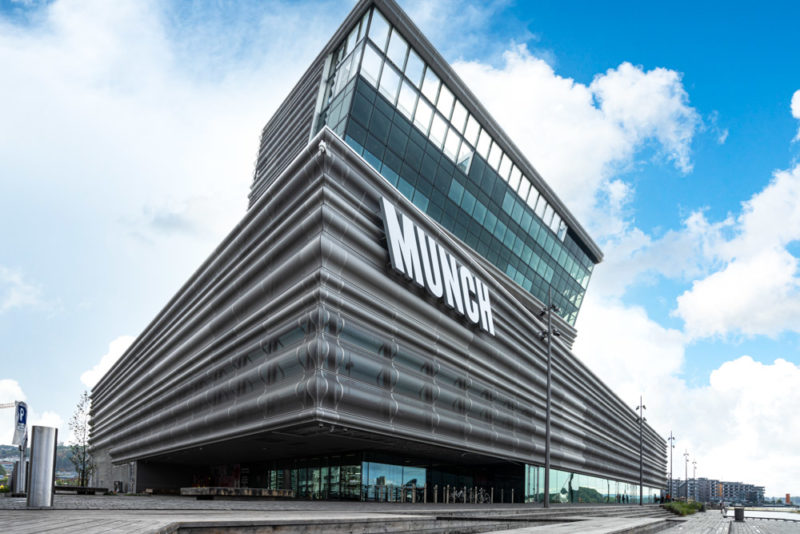
The Munch Museum is one of the most popular Oslo attractions. Here you can admire more than 26,000 works of art created by Edvard Munch, including 1,183 paintings.
As well as the permanent exhibitions, which are taken from Munch’s personal collections, the museum also boasts a busy events program with music, performances, movie screenings, and art lectures. The Scream painting is also on permanent display, and it’s worth visiting the museum to see that famous piece alone!
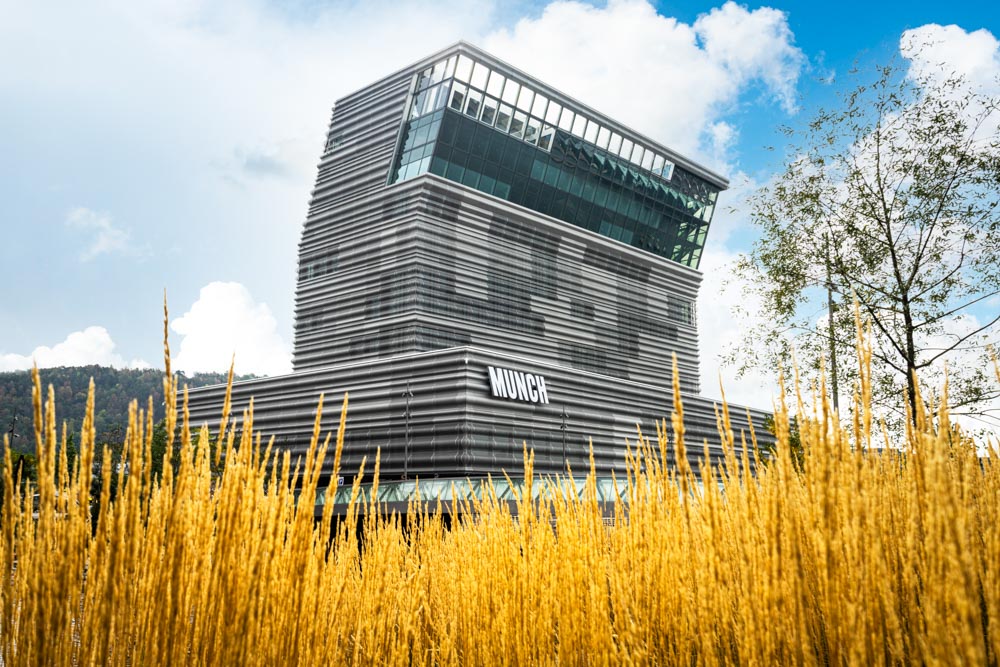
One of the largest single-artist museums in the world, the Munch Museum was created after Munch left all his works of art to Oslo in his will. An architecture competition followed to decide what the building to house the pieces would look like. Spanish architect Juan Herreros won the honor of designing it.
Standing around 200 feet tall in a tower shape, the museum stands out from the rest of the buildings and looks like a work of art itself. The “static zone” has strict conditions to preserve the artwork, while the “dynamic zone” features floor-to-ceiling windows with remarkable views of the city.
13. Have lunch at Mathallen
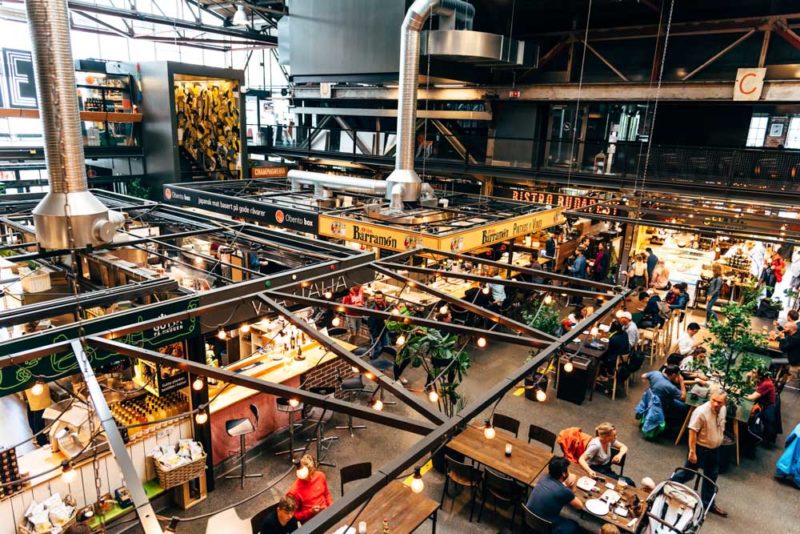
When you’re feeling hungry, one of the must-do things in Oslo is to stop by Mathallen . An incredible food hall that boasts dishes from all over the world, Mathallen is a foodie’s dream come true.
The immense industrial brick building is home to over 30 individual bars, restaurants, street food vendors, and specialty food stores.
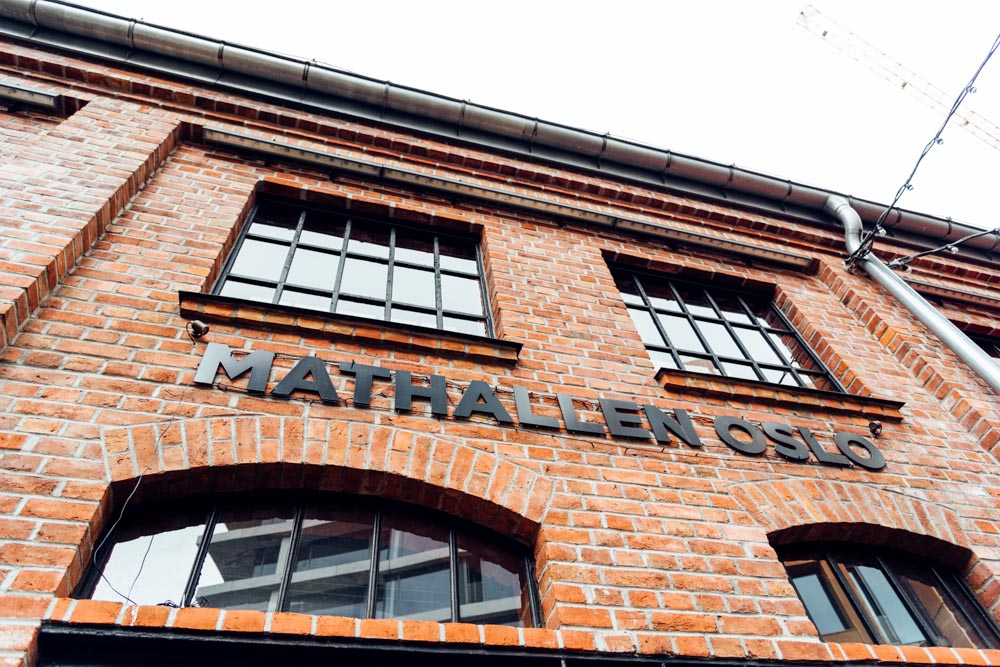
Here you can dig into everything from Norwegian potato dumplings to French duck baguettes, Spanish tapas, Peruvian ceviche, Mexican tacos, Italian pizza, and Hungarian stews. Whatever you’re in the mood for, you’re guaranteed to find it here.
There are plenty of things you can take back home, too. Wine, olive oil, dried herbs and spices, chocolates, and candies are just some of the things you can buy that will be fine on a flight.
When you’re there, look for posters advertising events during your visit. Cookery classes, quiz nights, food festivals, and cooking demonstrations are all held regularly and are great fun to join in on.
14. Join in on the festivities in the run-up to Christmas
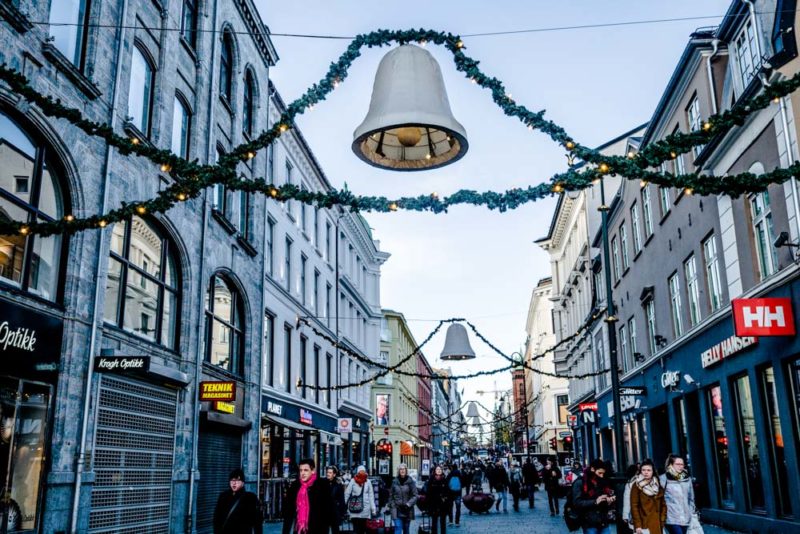
The run-up to Christmas is one of the most magical times of the year to visit Oslo. Known locally as Jul, Christmas is celebrated with all kinds of wonderful things, from traditional Christmas markets to dazzling ice skating rinks.
The Christmas market at the Norwegian Folk Museum is one of our favorites. The place is already whimsical enough, but cover it in a blanket of snow and decorate it with twinkling lights, and it becomes something even more incredible.
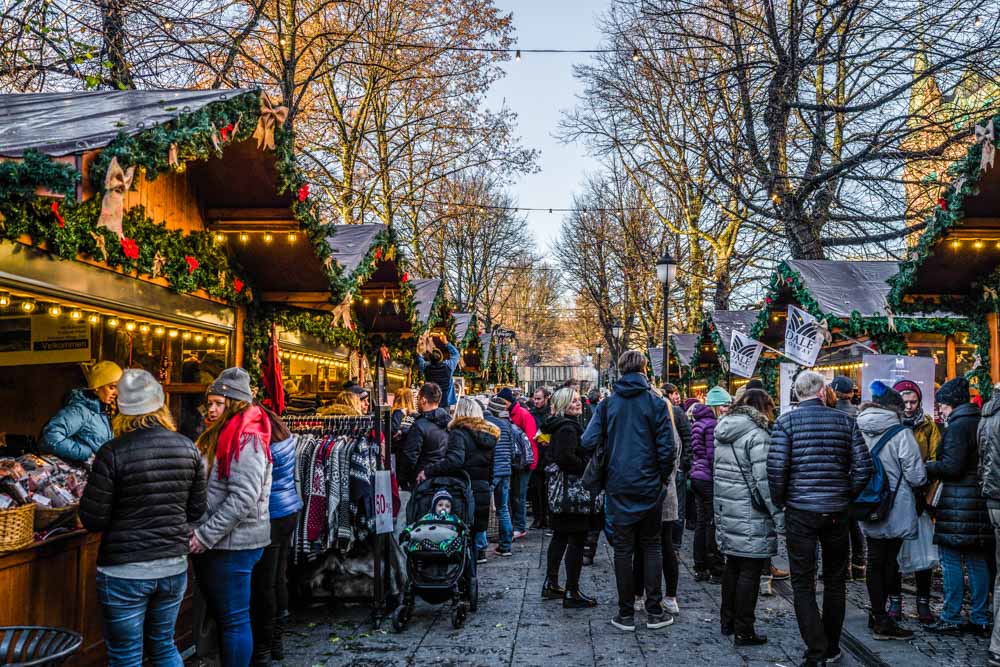
Head to Grünerløkka or Frogner to pick up some fantastic Christmas gifts or souvenirs. And SNØ, the only indoor ski resort in Norway, is an excellent place to go for guaranteed snow, whatever the weather.
Christmas Eve is the big celebration day for locals, so expect most bars and restaurants to be closed from late afternoon onward. Some places will be open, though. So if you fancy digging into a festive Norwegian feast of lamb, ribs, turkey, or fresh fish, look for restaurants advertising special Christmas Eve menus.
15. Get tipsy on aquavit
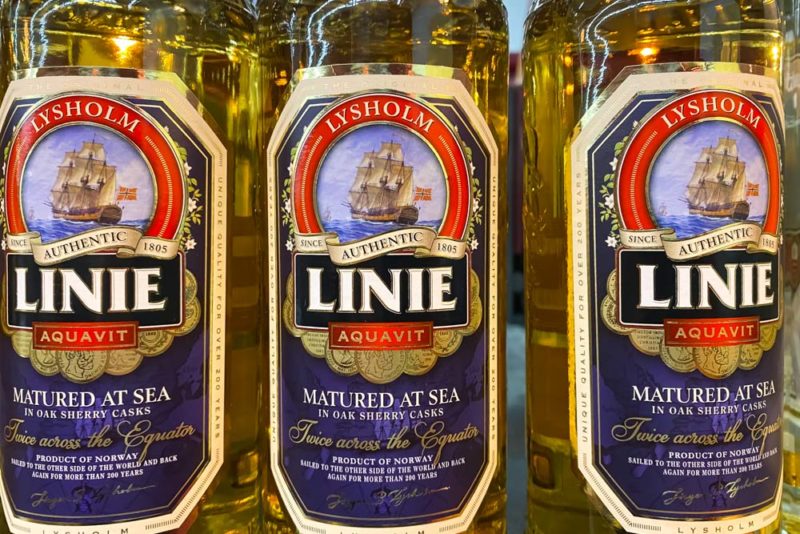
Norwegian aquavit is the most popular type of liquor in Norway. It’s loved so much that you’ll find it on practically every bar and restaurant menu, as well as in all liquor stores.
The one-of-a-kind alcoholic drink is made from distilled potatoes, giving it a vodka-like taste. But while vodka is fairly neutral in flavor, aquavit has a distinctive caraway taste.
For it to be official and genuine Norwegian aquavit, the drink must be made from at least 95% Norwegian potatoes and aged in oak barrels for six months or more. The final requirement is that it must contain dill or caraway seeds for the characteristic taste.
Linie is the biggest brand of aquavit, which you can pick up from any liquor store. If you’re not too keen on drinking the stuff straight, you’ll find all kinds of aquavit cocktails available from bars throughout Oslo.
It tastes amazing when combined with Aperol and sweet vermouth for an intense take on the classic Negroni. Or have it mixed with vanilla vodka, coffee liqueur, and espresso for a delicious dessert drink!
There you have it! The 15 best things to do in Oslo. What’s your favorite thing to do?
Share this on pinterest.
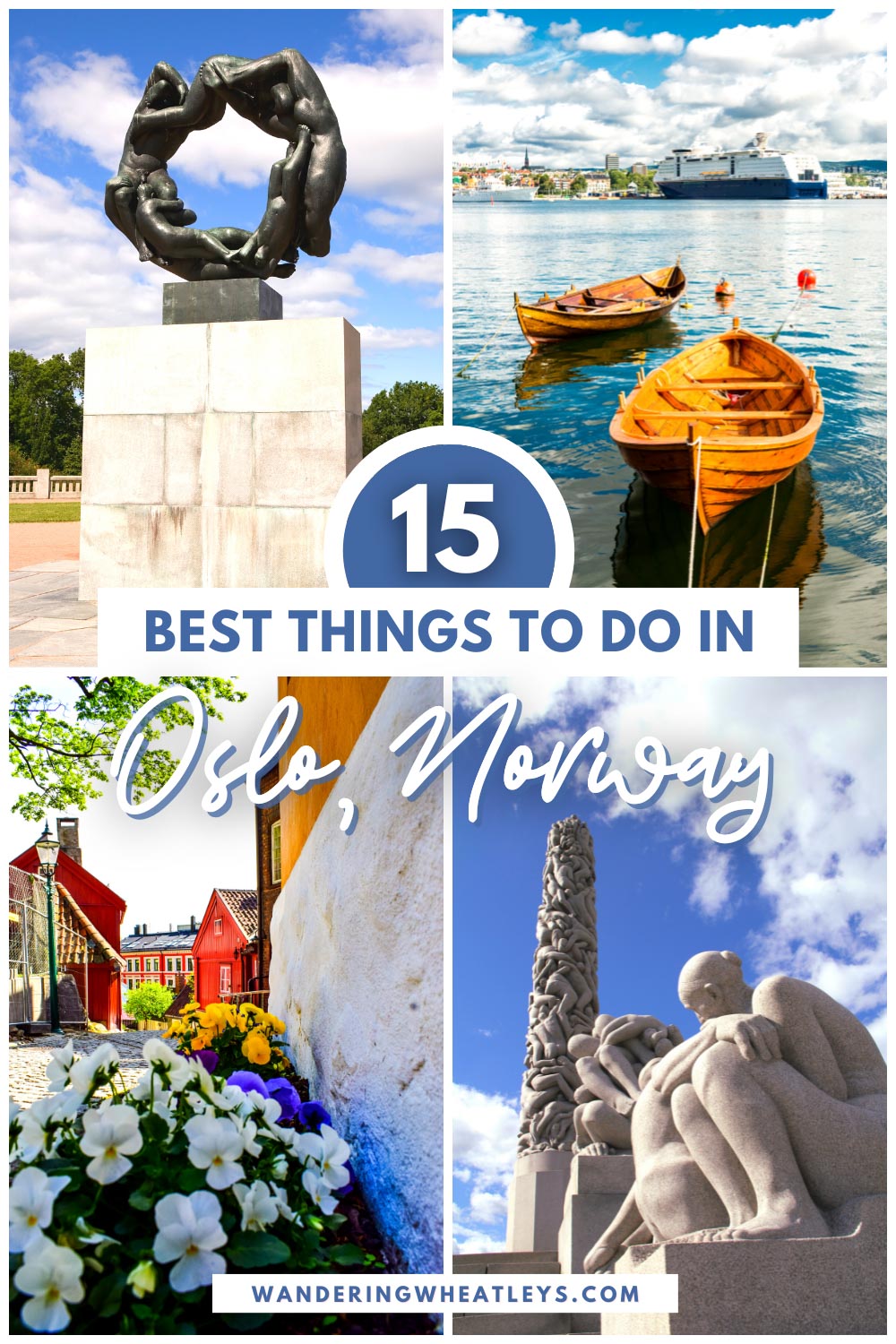
Frequently Asked Questions
You’ll find one of the most unique things to do in Oslo in Vigeland Park. This park is open 24/7 and it’s free to enter. But the best part is that it’s home to some of the most bizarre statues you’ll ever see. Vigeland Park boasts more than 200 sculptures created by 20th-century sculptor Gustav Vigeland.
There’s no better way to begin your day in Oslo than with a freshly toasted bagel smothered with rich cream cheese and generously laden with smoked salmon. Norwegian smoked salmon is some of the best in the world, and it can be found all over, from fancy restaurants to simple cafes and grocery stores. In Norway, smoked salmon is given a long time to mature. This gives it its unique, deep flavor, rich butteriness, and melt-in-your-mouth texture.
When all the Oslo sightseeing gets to be too much for you, take it easy and spend a few hours in a floating sauna. Opposite the Oslo Opera House, you’ll find KOK, a sauna company that boasts two sauna boats. If you visit in spring or summer, you can even take a boat trip in one of the floating saunas.
One of the top things to do in Oslo is to go to a music festival. The city holds a bunch of amazing music festivals throughout the summer that attract all kinds of big international artists and bands.Oya Festival began back in 1999 and has since transformed into one of the city’s biggest and most popular outdoor music events.
The Munch Museum is one of the most popular Oslo attractions. Here you can admire more than 26,000 works of art created by Edvard Munch, including 1,183 paintings. As well as the permanent exhibitions, which are taken from Munch’s personal collections, the museum also boasts a busy events program with music, performances, movie screenings, and art lectures.
Norwegian aquavit is the most popular type of liquor in Norway. It’s loved so much that you’ll find it on practically every bar and restaurant menu, as well as in all liquor stores. The one-of-a-kind alcoholic drink is made from distilled potatoes, giving it a vodka-like taste. Linie is the biggest brand of aquavit, which you can pick up from any liquor store.

Nicola is a freelance writer with an insatiable hunger for travel. She swapped her home in the UK for the sunny Canary Islands when she was just 11 and she has been based there ever since. From crawling on her hands and knees inside pyramids in Egypt to swimming with baby sharks in Bali and searching (fruitlessly!) for the Northern Lights in Iceland, Nicola takes every chance she gets to explore new places. The incredible experiences she has around the world fuels her writing and inspires her to plan even more adventures for the future.
Related Posts
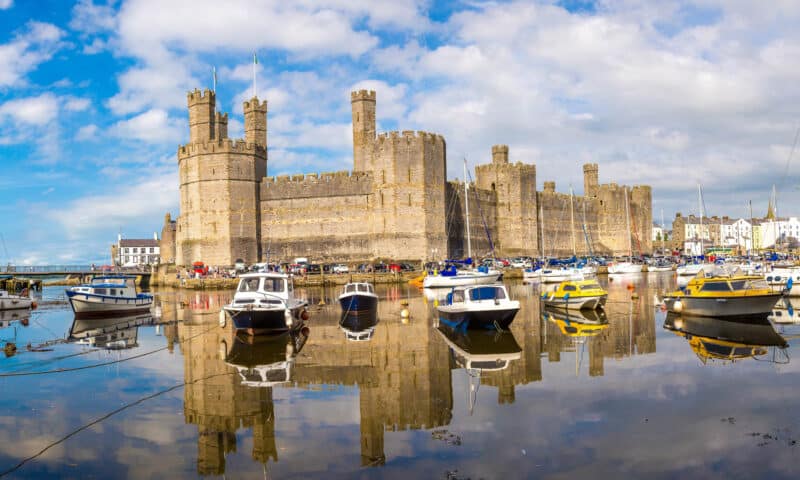
The Perfect 2-Week Wales Itinerary
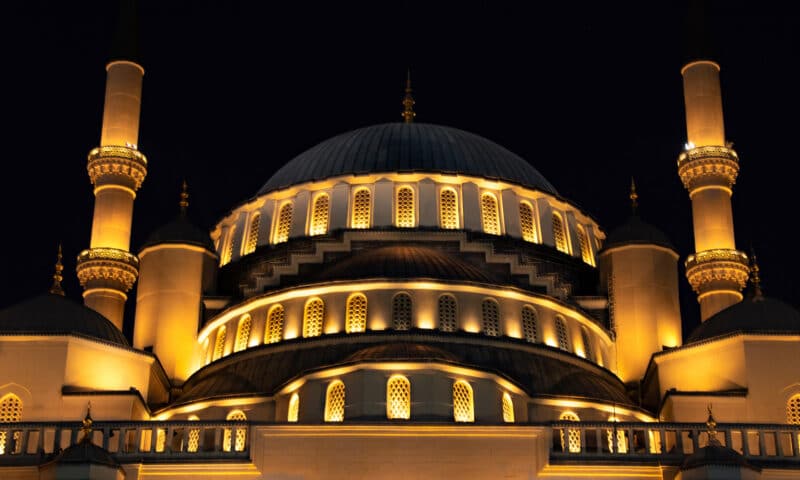
The 10 Best Luxury Hotels in Ankara, Turkey
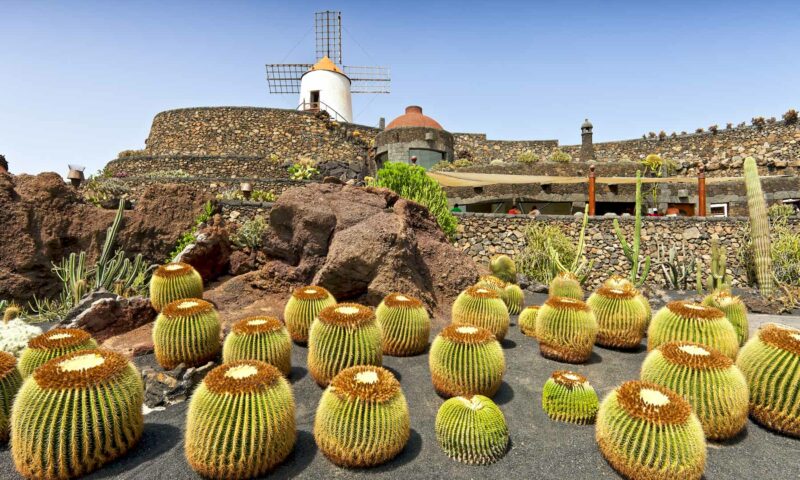
The 12 Best Boutique Hotels in Lanzarote, Spain
Leave a comment cancel reply.
Your email address will not be published. Required fields are marked *
- 10 Top Things To Do...
10 Top Things to Do in Oslo During Summer

Oslo is great in winter, when skiing and tobogganing opportunities are just a tube ride away and the Christmas market opens up by the National Theatre. It really comes alive in the summer, however, when the city’s many green places become Meccas for one-use BBQ grills and lounging about with friends and family and the good weather (with any luck) allows you to take in the city by foot. Below is a range of great activities to partake in during the summer in Oslo.
Visit the open-air museum.
Oslo’s Folk Museum is one of the city’s very best. It is at its most entertaining during the summer season, when the museum’s old houses and farms come alive with costume-clad inhabitants, farm animals and even schoolchildren who visit the olden days for a week at a time. Though the museum is popular with tourists and Norwegians alike, it never feels overly crowded thanks to its size. Be sure not to miss the folk dancing (on every hour), the Stave Church and the old-fashioned sweet shop.
Walk up to Ekebergparken
The Ekeberg Park lies on top of the elevation to the south-east of the city centre. The park is full of modern sculptures and art pieces, but the park’s most captivating features are the view of Oslo and the Oslo Fjord as you stride up the hillside and the 5000-year-old Stone Age carvings that you’ll find on a cliff close to the tram stop. You can also take the tram up here if you don’t fancy the rather steep walk, though you’ll lose out on some of the best views. If hunger strikes while you’re up at Ekeberg, the restaurant provides spectacular views of its own and outdoor seating.

Enjoy Sørenga
Sørenga is the newest apartment complex/mini district being built in central Oslo. It is the home of a new all-year open-air bathing facility which includes a beach, showers, lounging chairs and marked lanes to accommodate all types of swimming. You’ll find Sørenga next to Bjørvika, which includes those cool Barcode buildings on the waterfront.

Rooftop Concerts at the Opera
In the last two weeks of July, the Norwegian Opera and Ballet are hosting rooftop concerts on top of the beautiful Opera House for just 70 NOK (£6.70/$8.70). This tradition sees one or two of the House’s opera singers perform alongside a piano player in this great setting with a view of both the city centre and the Oslo Fjord.

Enjoy the Islands and the Fjord
Oslo’s magnificent fjord and its many islands are popular destinations with the locals in summer too. You’ll find lots of boats – touristy and non-touristy – at Aker Brygge, which is also the departure point for the islands. You can read our guide to enjoying Oslo’s water and waterfront here.

Walk along the Akerselva
The Akerselva is the large river cutting through Oslo from north to south. It used to be the focal point of Oslo’s industry, when the river’s immense energy was used to power the factories and mills you can still see on its shores. Now, these buildings have mostly been converted to chic offices and recreational facilities, but they still provide a stark and interesting contrast to their nature surroundings. The river begins all the way back at the Maridalsvannet lake and ends, unsurprisingly, in the fjord. You can follow it from the north and head south or go northwards from the city centre for a more challenging uphill walk.

Become a Culture Tripper!
Sign up to our newsletter to save up to $1,200 on our unique trips..
See privacy policy .

Go Hiking like a Viking
First rule of Norwegian club: Norwegians love to hike and to be out and about in nature. Understandable, really, considering just how lovely and close by Norway’s nature is, no matter where you head. On those Goldilocks days which aren’t too hot nor too rainy, head up to places like the Sognsvann lake, or Holmenkollen or Vettakollen, two of the little mountaintops to the north-west of the centre (all are reachable on the metro). You can usually spot Holmenkollen from anywhere in Oslo – it is the proud owner of the huge Holmenkollen ski slope, which is also worth a visit.

Vigeland Park and Recreation
One of the most popular attractions in Oslo is the Vigeland Park (also known as Frogner Park), the largest sculpture park in the world. The sculptor worked on the park for decades and kept expanding on the project, though he also took the time to make busts of most of Norway’s early-1900s elite and to design the Nobel Peace Prize medal. He is one of the best and most famous neoclassic monumentalist artists and was a friend of Edvard Munch (he also befriended a series of teenage girls throughout his life). The park also houses the Vigeland Museum and the Oslo City Museum, two of Oslo’s best museums . The park is also great for lounging about with friends and one of those inevitable one-time BBQ grills.

Walk through History
For those who understand Norwegian, a new type of theatre will be performed at Akerhus Festning in July and August. The performance , which lasts about an hour, takes place during a tour of the ancient fortress. Visitors/spectators will come face to face with prominent figures from Norwegian history, such as Margrethe I, and less famous people including resistance fighters and a maid. Even if Norwegian isn’t quite your forte yet, the fortress is itself a rather lovely setting for a walk on one of those very long Norwegian summer days where the sun only really sets at midnight.

Find the Floating Sauna
If clambering from the delightfully fresh water of the fjord into a swelteringly humid, purgatorial room full of semi-naked bodies is your cup of tea, then say no more. Granted, many people find saunas relaxing and cleansing, and even if you don’t, the Sørenga floating sauna is pretty cool. It was built from driftwood and looks kind of like a pirate sauna ship. Best of all, it is available for hire, so if you have a group of mates, you can rent it for two hours at a time and even enjoy a beer inside of it before taking a cooling dip in the fjord (it is technically illegal to drink beer in public places in Norway, but the sauna is privately rented). Best of all, the sauna is actually available all year, so if you fancy a swim in the frozen fjord before a trip to the sauna, that can be arranged too.

Featured image by Jean-Pierre Dalbéra .

33 Must-See Attractions in Norway You Won't Want to Miss

A Guide to Seeing the Northern Lights in Norway

The Top 10 Things To Do and See in Spectacular Bergen

Northern Lights Forecast: Best Tracking Apps

The Best Holiday Apartments in Norway

The Best Hotels in Norway for Every Traveller

Best Spa and Wellness Hotels in Norway

Things You Can Only Buy in Norway

The Cosiest Log Cabins in Norway

The World's First Energy-Positive Hotel is Coming to Norway

Norwegian Delicacies and Where to Try Them

The 10 Most Beautiful Towns in Norway
Culture Trip Summer Sale
Save up to $1,200 on our unique small-group trips! Limited spots.

- Post ID: 1440922
- Sponsored? No
- View Payload
A first-time guide to Oslo
Jun 12, 2024 • 10 min read

A session in one of Oslo’s floating saunas with a plunge in the Oslofjord to cool off is a quintessential experience © Nowaczyk / Shutterstock
Never been to Oslo before? Now is the perfect time. Norway’s premier city has always had grand architecture, a subversive artistic undercurrent and unfettered access to pristine nature. But a two-decade-long harborfront glow-up has catapulted Oslo from under-the-radar Scandi city to certified culture capital.
Exceptional museums covering art, maritime exploration and ancient and modern history are complemented by award-winning architecture, sprawling sculpture parks and intriguing islands that are all completely free to explore. Add to that a packed cultural calendar and a varied culinary scene, and you’ve settled on a city break that has it all.
Here’s how to make the most of your first trip to Oslo.
When should I go to Oslo?
June, July and August are the peak months for domestic and international travelers. Daylight lingers well into the evenings and temperatures are reliably pleasant, hovering around 20°C (68°F), but don’t be surprised by a run of days exceeding 30°C (86°F). Expect the harbor baths and city beaches to be packed with locals making the most of every last ray of sunshine, and prepare to get to museums early to avoid the worst of the high-season crowds. Summer also sees major festivals and events across the city, including OverOslo and Pride in June, Øya Festival in July and By:Larm in August. Room rates soar as high as Oslo’s vibes over festival dates, so book as far in advance as possible.
Though slightly cooler, the weather is usually still good during May and September and these shoulder months are ideal if you want to snag lower room rates and avoid the masses. The exception to this is May 17, when the whole city turns out in national dress to celebrate Constitution Day, with huge parades, marching bands and bucketloads of ice cream. It’s an especially joyful time to be in Oslo, but attractions and almost all shops will be closed on the day, and dinner reservations are essential.
Days grow short and cold during autumn and winter – commonly -5 to 0°C (23 to 32°F) in January and February – but you’ll find ice-skating rinks in the city center and have the chance to ski the runs at Skimore Oslo , reachable on the T-Bane. Prefer to watch the pros? Visit in March to see elite ski jumpers, biathletes and cross-country skiers competing during the Holmenkollen Ski Festival .

How much time should I spend in Oslo?
With two days, you can comfortably cover some big hitters. Factor in time to see the National Museum for a whistle-stop tour of Norway’s finest artistic treasures; the Munch Museum to understand the man behind The Scream ; the Royal Palace to tour the home of the Norwegian Royals; and Vigelandsparken to see Gustav Vigeland’s expressive sculptures. And don’t miss a stroll on top of the Oslo Opera House . Between the culture, squeeze in some time for vintage shopping in Grünerløkka and to peruse the food vendors at Mathallen Oslo , the city’s original and best food hall, then wind up at Blå for live music.
With four days you can see more of the city’s nature. One day might involve taking the Bygdøy ferry (or the number 30 bus) to the Bygdøy peninsula. You could drop into any of the museums here ( Norsk Folkemuseum , Polarship Fram Museum , Kon-Tiki Museum , and Norwegian Maritime Museum ), or ignore them completely and make a beeline for Huk or Paradisbukta beaches, tucked away along forested trails beyond the neighborhood’s attractive villas. Another day, pack a picnic and take the B1 or B2 public ferry out to discover a few of the islands in the Oslofjord – Hovedøya has a ruined Cistercian monastery, Gressholmen has a nature preserve and rustic cafe, and Langøyene has a beach and campground.
How do I get to Oslo?
Oslo Gardermoen Airport, around 50km north of the city, is served by all major airlines and many budget operators too, including EasyJet and Norwegian. Getting into the city center couldn’t be easier: trains run direct to Oslo S – the city’s main train station – from right outside Gardermoen’s arrivals hall. Choose between the more expensive Flytoget airport express train, which costs 240kr and runs every 10 minutes, or the regular Vy public trains – there are only three an hour but tickets are far cheaper at 124kr. Flytoget is marginally faster, but both options take around 20 minutes. Some budget airlines fly to Torp Sandefjord Airport, over 100km southwest of Oslo, but the slightly lower airfares are rarely worth the inconvenience.
If you want to avoid flying, you can also reach Oslo by DFDS ferry from Copenhagen and Fredrikshavn in Denmark, and by train from Gothenburg in Sweden.

Is it easy to get around Oslo?
Oslo is a compact city and many of its biggest attractions are all within easy walking distance of each other. To get from A to B more quickly, there’s an extensive, easy-to-navigate public transport system with trams, buses, a metro and ferries. The six-line tram service runs from around 5.30am to 1am; tram 12 is especially useful as it stops very close to many major sights, including Vigelandsparken, the National Museum, Rådhus, Akershus Festning and the Oslo Opera House, before gliding on up to ever-popular neighborhood Grünerløkka.
The city’s buses fill in the gaps not covered by trams, and they run 24 hours a day, though there are fewer services overnight. The T-Bane, Oslo's metro system, has five lines that snake out to the suburbs, and all serve Jernbanetorget (for Oslo S) and Nationaltheatret. A fleet of electric ferries zip from Aker Brygge/Rådhusbrygge to the islands in the Oslofjord and beyond; services are most frequent in summertime.
The whole network is operated by Ruter and tickets are valid across all services. Oslo city is covered by a Zone 1 ticket (single/24-hour/seven-day 42/127/352kr). The easiest way to plan your journey and buy tickets is via the Ruter app , but you can buy paper tickets at T-Bane ticket machines, 7-Elevens and Narvesen stores or from the Ruter Customer Service Centre on Jernbanetorget. Note that Ruter tickets aren’t valid on the Bydgøy ferry.
Top things to do in Oslo

See the views from Oslo Opera House
Yes, everyone does it, but climbing up the sloping, iceberg-like Oslo Opera House to gaze across the fjord at sundown is an Oslo rite of passage. Designed by homegrown architects Snøhetta, the white-marble marvel was inaugurated in 2008 and has invited people to stand atop its gleaming roof ever since.
Sweat in a floating sauna
No matter if you’re visiting in the height of summer or the depths of winter, a session in one of Oslo’s floating saunas – including a plunge in the Oslofjord to cool off – is an exhilarating way to spend an hour or so. You’ll see them at Aker Brygge and on Langkaia near the Opera House, but the ones run by Oslo Badstuforening at Sukkerbiten (close to the Munch Museum) are the most secluded.

See larger-than-life sculptures at Vigelandsparken
Hundreds of figurative works by the renowned Norwegian sculptor Gustav Vigeland are laid out in this beautifully landscaped sculpture park inside Frognerparken, on Oslo’s upmarket west side. All works lead towards the 17m-high Monolitten (Monolith), a granite tower of writhing bodies surrounded by 36 clusters of poignantly posed figures.
Walk the Akerselva
This river literally powered Oslo’s textile factories in the 19th century, and strolling along at least some of its 9km-long course will give you an insight into the city’s industrial heritage. Join the river at Grønland and you’ll pass landmarks including a former indigo factory that now hosts the music venue Blå and a makers’ market on Sundays , a one-time sail factory that’s been converted into the Oslo National Academy of the Arts (KHiO) and the Labour Museum , which tells the story of the factory workers.
Read more: The best things to do in Oslo
My favorite thing to do in Oslo
When the sun is shining there’s nothing better than taking the T-Bane line 1 all the way to Frognerseteren and heading out on the well-marked trails through the Nordmarka forest. It’s so close to the city center, yet it’s still mostly locals who head up here to hike; a brisk walk while breathing in the spruce-scented air is the perfect way to relax. Before returning to the center, I’ll stop in at Kafe Seterstua , located inside Frognerseteren (the 19th-century wooden chalet after which the T-Bane stop is named), for a coffee and a wedge of apple cake.

How much money do I need for Oslo?
There are countless reasons to get excited about your trip to Oslo, but one factor could make or break your vacation: the cost. Norway is an expensive country – even compared to its Nordic neighbours – and its capital is no exception. While the standard of accommodations in the city is generally high, be aware that you won’t get as much hotel-room for your money as in other European countries. Aside from accommodations, your greatest expense is likely to be eating out and, if you drink alcohol, the cost of your favorite tipple (yes, it really does cost as much as you’ve heard).
Consider having your main meal at lunchtime – restaurants often offer good-value lunch specials – and, if you want to have a big night out, do as the locals do and stock up at the nearest Vinmonopolet (government-run alcohol store) for forspill (pre-drinks).
If you’re a museum lover and plan to max out on culture during your visit, an Oslo Pass could save you serious cash. As well as giving you free entry to almost every attraction in the city, all public transport is also included for the duration of the pass (including the ferry to the Bygdøy museums). Tally the figures for your itinerary, though – you’d typically have to visit three attractions and make three public transport journeys to make a 24-hour pass (520kr) cost effective; the 72-hour pass offers the greatest value, working out at just under 300kr per day.
But you can actually experience Oslo’s charms without spending any money at all: catch the daily Changing of the Guard outside the Royal Palace; meander along the Harbor Promenade (Havnepromenaden); walk the length of the Akerselva; hike in the forest; swim in the harbor baths; and take yourself on an art trail through one of the city’s world-class sculpture parks, all for free.
Average costs:
Dorm bed: 450kr Midrange hotel room: from 1500kr Self-catering apartment (including Airbnb): from 1300kr Public transport ticket (24 hour): 127kr Museum entry: 150kr Oslo Pass (24/48/72 hours): 520/750/895kr Filter coffee/cafe latte: 40kr/50kr Sandwich: 100–150kr Two-course dinner for two: 1000kr Draft beer at the bar (0.25L/0.5L): 75kr/115kr Harbor sauna session: from 165kr
Read more: A budget-friendly break in (notoriously expensive) Oslo
Is it better to pay by cash or card?
Cash is still widely accepted in Oslo, but shops, restaurants, bars and cafes generally prefer debit or credit card payments, even for small transactions. Paying by card is sometimes the only option: some casual restaurants take a “scan-the-barcode-to-order-and-pay” approach, convenient transport apps will require a payment card, and a small number of places don’t accept cash at all.
You’ll also see some market vendors (and even some vending machines) requesting payment by Vipps, a peer-to-peer payment app. Unfortunately it only works with a Norwegian bank account so, before you buy, you’ll need to ask if they’ll accept an alternative payment method, such as PayPal.
How much should I tip?
Tips will be gratefully accepted, but there isn’t a huge culture of tipping in Norway and it’s never expected. If you’ve received great service in a restaurant or bar and you’d like to show your appreciation, a tip of 5% to 15% is appropriate.
Explore related stories

Tips & Advice
Jun 12, 2024 • 12 min read
There is simply no way to tour Europe and not be awestruck by its natural beauty, epic history and dazzling artistic and culinary diversity.

Mar 18, 2024 • 6 min read

Mar 14, 2024 • 7 min read

Oct 24, 2023 • 8 min read

Jul 28, 2023 • 6 min read

Oct 13, 2022 • 2 min read

Sep 19, 2022 • 8 min read

Sep 3, 2020 • 2 min read

Jan 29, 2020 • 9 min read

Mar 19, 2024 • 9 min read
The Best Time to Visit Oslo, Norway for Weather, Safety, & Tourism
The best times to visit Oslo for ideal weather are

May 21st to September 16th
based on average temperature and humidity from NOAA (the National Oceanic and Atmospheric Administration). Read below for more weather and travel details.
Oslo Travel Guide
Temperature.
- Perceived Temperature
- Rain and snow
- Humidity and wind
- The busiest and least popular months
- Overall travel experience by time of year
Other Oslo Travel Info
Weather in oslo.
Average temperatures in Oslo vary greatly. Considering humidity, temperatures feel cold for about half of the year and otherwise nice with a fair chance of precipitation about half of the year. The area is less temperate than some — in the 29th percentile for pleasant weather — compared to tourist destinations worldwide. Weeks with ideal weather are listed above . If you’re looking for the very warmest time to visit Oslo, the hottest months are July, August, and then June. See average monthly temperatures below. The warmest time of year is generally late July where highs are regularly around 73.9°F (23.3°C) with temperatures rarely dropping below 57.3°F (14.1°C) at night.
Oslo Temperatures (Fahrenheit)
Oslo temperatures (celsius), “feels-like” temperatures.
The way we experience weather isn’t all about temperature. Higher temperatures affect us much more at higher humidity, and colder temperatures feel piercing with high winds. Our perceived temperatures factor in humidity and wind chill to better represent how hot or cold the day feels to a person.
Oslo Perceived Temperature (F)
Oslo perceived temperature (c), average oslo temperatures by month.
Daily highs (averaged for the month) usually give the best indication of the weather. A significantly lower mean and low generally just means it gets colder at night.
Show Fahrenheit
Show celsius, precipitation (rain or snow).
If dry weather is what you’re after, the months with the lowest chance of significant precipitation in Oslo are March, April, and then December. Note that we define “significant precipitation” as .1 inches or more in this section. The lowest chance of rain or snow occurs around early to mid February. For example, on the week of February 12th there are no days of precipitation on average. By contrast, it’s most likely to rain or snow in early to mid August with an average of 3 days of significant precipitation the week of August 6th.
Chance of Precipitation
The graph below shows the % chance of rainy and snowy days in Oslo.
Snow on the Ground
The graph below shows the average snow on the ground in Oslo (in).
Average Rain and Snow by Month
Show inches, show centimeters, humidity and wind.
Oslo has some very humid months, with other comfortably humid months. The least humid month is June (52.1% relative humidity), and the most humid month is December (80.3%).
Wind in Oslo is usually calm . The windiest month is May, followed by June and April. May’s average wind speed of around 6 knots (6.9 MPH or 11.1 KPH) is considered “a light breeze.” Maximum sustained winds (the highest speed for the day lasting more than a few moments) are at their highest in late May to early June where average top sustained speeds reach 11.4 knots, which is considered a moderate breeze.
Relative Humidity (%)
The graph below shows the average % humidity by month in Oslo.
The graph below shows wind speed (max and average) in knots.
Average Wind Speeds
Show wind speeds.
All wind speeds are in knots. 1 knot = 1.15 MPH or 1.85 KPH.
Show Relative Humidity by Month
Is it safe to travel to oslo.
Our best data indicates this area is generally safe. As of Dec 04, 2023 there are no travel advisories or warnings for Norway; exercise normal security precautions. Check this page for any recent changes or regions to avoid: Travel Advice and Advisories . This advisory was last updated on Nov 21, 2023.
The Busiest and Least Crowded Months
The busiest month for tourism in Oslo, Norway is May, followed by July and January. Prices for hotels and flights will be most expensive during these months, though you can save if you purchase well in advance. Tourists are unlikely to visit Oslo in February. Those willing to visit at these times will likely find it the least expensive month.
Estimated Tourism by Month
Most popular months to visit, overall oslo travel experience by season, spring (march through may).
Humidity and temperatures combine to make this season feel moderately cold. Highs range from 68.4°F (20.2°C) and 38.5°F (3.6°C) with warmer temperatures in the later months. Rain is somewhat common with 4 to 5 days of significant precipitation per month. Spring is the busiest for tourism, which makes it a good time for those looking for things to do.
Summer (June through August)
The middle-year months have comfortably cool weather with high temperatures that are comfortable. These months see the most precipitation with 7 to 9 days of precipitation per month. June – August is the second busiest season for tourism in Oslo, so lodging and other accommodations may cost slightly more.
Fall (September through November)
Fall daily highs range from 65.5°F (18.6°C) and 36.6°F (2.6°C), which will feel chilly given the humidity and wind. It rains or snows a significant amount: 5 to 7 days per month. Tourism is fairly slow during these months due to the weather, so hotels may be lower priced.
Winter (December through February)
Weather is far too cold this time of year in Oslo to be enjoyable for warm weather travelers. The average high during this season is between 38.5°F (3.6°C) and 29.4°F (-1.4°C). On average, it rains or snows a fair amount: 5 to 6 times per month. These times of year are the slowest with tourists.
Best Times to Travel › Oslo City Centre, Norway › Oslo, Norway
Similar Destinations
- Central Oslo, Norway
- St Hanshaugen, Norway
- Grunerlokka, Norway
- Bislett, Norway
- Gamle Oslo, Norway
- Frogner, Norway
- Majorstua, Norway
- Skillebekk, Norway
- Sinsen, Norway
- Skoyen, Norway
Popular Destinations
- Mestre, Italy
- Ko Lanta, Thailand
- Chicago, IL, US

Studying in Norway: A Simple Guide for International Students

How to Become a Citizen of Norway: Options for Norwegian Citizenship

The Best Igloo Snow Hotels in Scandinavia and Activities Close to Them

How to Choose Between a Trip to Denmark and Finland

The Best Bike Tours in Copenhagen, Denmark

Everything you ever wanted to know about visiting Oslo
Visiting oslo: the land of fjords, ‘frozen’ and so much more ..
Everything you ever wanted to know about visiting Oslo, Norway and why you should go!
Despite Oslo’s 1000-year history, it’s quite possible that most people’s acquaintance with the capital of Norway has something to do with a little film called Frozen from 2013 .
You may have heard of it.
However, while the initial burst of Frozen -related tourism may have tapered off—just as a wave of little girls named Elsa is hitting kindergarten age—the popularity of visiting Oslo is perennial.
People visit Oslo for its world-famous cuisine, pulsating nightlife, gorgeous forests, icy landscapes, fjords , stunning architecture and world-class museums all year round. Plus, Oslo was named one of Lonely Planet’s Top Ten Cities in 2018, and with good reason.
The Norwegian capital invites visitors to explore the quaint, historic Gamle Oslo, aka old town district, marvel at centuries of fascinating architectural styles on display throughout the city.
You can also enjoy the world-class dining on offer at the six, count ’em, six restaurants mentioned in the Michelin guide, including the only Norwegian restaurant to be awarded three Michelin stars.
Also, a favorite when visiting Oslo is strolling the city’s more down-to-earth food halls and traditional food markets, visiting its coffee houses, and partaking in the city’s booming microbrewery culture.
The 2019 annual World Happiness Report ranked Norway at Number 3 on its list of the world’s happiest countries based on criteria like income, freedom, trust, healthy life expectancy, social support and generosity.
Visiting Oslo and seeing her smiling, incredibly beautiful denizens sunning themselves at the city’s extensive parks and nearby beaches in the summer, it’s easy to see why they’re so happy.
Visiting Oslo in winter of course offers its own kind of glittering, frosty beauty.
But summertime here is a revelation for most people; as they explore the Oslo fjord and the Oslo beach, many travelers are surprised to discover that Oslo weather is plenty warm enough for outdoors-oriented life — even sunbathing in the buff is a popular outdoor activity here!
But how did Norway and its capital get to where they are today: a leader in green technology despite controlling a multi-billion dollar oil-based wealth fund, a tourist hub for people interested in visiting Oslo as well as trekking further north to take in the stunning beauty of the fjord country and the Northern Lights , and home to some of the best cuisine Scandinavia has to offer?
Here’s a brief look at where Oslo and Norway have been, which may give us some insight into where they are today.

Vikings and a ‘hard leader’
Vikings plied the waters off of Norway during their heyday between 700 and 1000 A.D, as they did throughout the rest of Scandinavia and beyond.
But despite today’s Oslo residents having strong connections to their Viking forebears—and a really cool Viking Museum, a must-see when visiting Oslo, with three restored 9th-century Viking ships that were recovered in the area—there’s not a lot of evidence of any kind of permanent Viking settlement there.
Recent archaeological finds have uncovered Christian burials on the site of modern-day Oslo dating back to pre-1000 A.D., but you wouldn’t want to tell that to the first Norwegian king of that era, “hard leader” King Harald Hadrada.
According to Norse sagas, Harald—given the title Hadrada, which roughly translates to “stern counsel” or “hard leader”—founded the city he called Ánslo in 1049 and designated it a trading location or kaupstad.
When Harald wasn’t busy accumulating wealth by fighting in wars as far afield as Constantinople or trying to claim the thrones of England and Denmark, he took his place as a key figure in the history of Oslo.
By consolidating his power at home, creating a plan for the unification of Norway under one governmental structure, introducing a coin-based economy, and greatly enhancing Norway’s foreign trade, Harald cemented not only his place in the history of Oslo, but also in creating a distinct nation of Norway and Oslo culture.
By 1070, only a couple of decades later, there were enough merchants visiting Oslo that the trading post had grown into a village. It soon grew large enough to compel the Catholic Church to name it a diocese or bishopric, and by 1300 it was elevated to the capital of Norway under the reign of King Haakon V.
He was the first Norwegian king to live permanently in the city of Oslo, and he made his own contributions to Oslo culture by initiating construction on Oslo’s famed Akershus Castle and Fortress, the stunning royal compound which served as the model for Elsa and Anna’s castle in Frozen.
The fortress dominates the heart of the old town, overlooking the harbor to this day, and is still one of the top places to visit in Oslo, Norway and Scandinavia as a whole.
Trade and trade-adjacent businesses like shipbuilding have always been an important thread running through the history of Oslo, dating back to its earliest days.
It wasn’t long before word of Harald’s improvements to the economy and strong pro-trade policies connecting Oslo and Norway with much of the rest of the world reached traders from the Hanseatic League.
Merchant guild members of the Hanse confederation had taken up residence in Oslo by the 12 th century, and they quickly grew influential as they plied commerce and trade routes linking Norway to not only the other Scandinavian nations, but also the rest of Europe and across the entirety of the Baltic region.

Fires, Danes and other disasters
However, by the 1350s, Oslo and Norway’s population had been drastically reduced due to the Black Plague.
Some historical estimates place the population loss for the city of Oslo at up to 75 percent, and the relative power of Oslo and the nation of Norway on the world stage was also severely hampered as a result.
By the end of the century, Norway had been reduced to the lesser partner in a “personal union” with Denmark, a governmental structure in which two nations are ruled by one king, but each continues to maintain its own distinct laws, boundaries and culture.
Old King Harald would have been shame-faced to learn that by this point, his beloved city of Oslo, Norway was the capital of the nation he had created in name only. The city was more or less reduced to an administrative center, and Norway itself little more than a province of the mighty Danish empire.
That was the beginning of a dark period for Norway and for the history of Oslo, with the ostensible king actually residing in Copenhagen, Denmark, and the once-proud nation reduced to the vassalage of the Danish king.
The history of Oslo is filled with natural disasters as well as governmental ones, having been wiped out by fire numerous times over the centuries.
Following the the fourteenth time the municipality was more or less razed by a city-wide inferno, then-King Christian IV of Denmark ordered the capital to be rebuilt across the bay, nearer to the Akershus Fortress and Castle.
Not one for humility, King Christian also decreed that the new version of the city should be named Christiania, and citizens were ordered to move their shops and workplaces to the new site to honor him.
Construction on Christiania began in 1624, and Oslo was the name reserved just for the site of the former city prior to the 1624 fire, which became an eastern suburb of the new capital.
Today when visiting Oslo, tourists can see the original area designated for this municipal rebirth in the district locals refer to as Kvadraturen, recognizable for being laid out on a grid.
The city was struck by its final Black Plague outbreak in 1654, and another fire devastated Oslo in 1686, destroying a quarter of the city.
Oslo (which would continue to be called Christiania until 1925) wasn’t restored to an actual governing capital again until 1814 when the union with Denmark was dissolved.

‘The Scream’ heard round the world
A return to power as the nation’s seat of monarchy seems to have agreed with Oslo, and the 19 th century saw something of a renaissance for the capital.
The Oslo University opened in 1813, the Royal Palace began construction in 1825, and the Norwegian Parliament building, aka the Stortinget building was begun in 1861. Other new works constructed during this era include the Stock Exchange, the National Theater, and the Christiania Theater.
The arts blossomed in Oslo during the 19 th century, with playwright Henrik Ibsen (“A Doll’s House”) and Nobel Prize for literature author Knut Hamsen taking up residence there.
Ibsen and Hamsen were the de facto leaders of a flourishing Oslo culture of arts, theater, literature and music that included Norway’s most famous painter, Edvard Munch, the artist behind the iconic painting “The Scream.”
Munch studied in Oslo at the Royal School of Art and Design before he made his mark on the history of Oslo. He reportedly said that he was inspired to compose his famous 1893 painting when he was out for a walk near the Oslo fjord around sunset one evening.
Munch claims that the setting sun turned the sky “blood red” and he could feel “an infinite scream passing through nature.”
Scholars say they have identified the exact location where Munch was walking along the Oslo fjord overlooking the city when he saw that particular sunset, and people visiting Oslo today can walk through the woods of Ekeberg Park to the spot.
Experts have offered numerous explanations for the sky’s unusual color as reported by Munch, including a distant volcanic eruption, or simply Munch’s emotional state due to dealing with his sister having recently been sent to an asylum.
By 1850, Oslo had shot past its neighbor to the north Bergen to become Norway’s most populated city, skyrocketing from just 10,000 in 1814 to 230,000 in 1900.
By 1905 Norway had become fully independent, and given the history of Oslo, there was a popular groundswell calling to return the name of the capital to the original, suggesting that having a capital named after a long-dead Danish king was less than ideal for an independent Norway.
In 1925, the capital was renamed Oslo to reflect that independent spirit, and to restore the name the city previously had 300 years before, prior to the 1624 fire.

Oslo today: Green, clean and great cuisine
Visiting Oslo today, one of the first things you notice is how clean the city is, even by Scandinavian standards. The city of 628,000 residents boasts streets that are pristine and parks that are even more so, as are the trains and most other public transportation.
Oslo is also one of the safest cities in Europe, according to police reports.
All of that bodes well for enjoying the city to the fullest for its vivacious citizens. Oslo has a decidedly young and energetic vibe, a forward-thinking hopefulness that’s reflected in ongoing building projects you can see when visiting Oslo along the waterfront.
Modern architectural masterpieces like the Opera House are sure to impress, with its angular marble and granite facade appearing to rise up from the harbor in dramatic fashion, as well as the wood and glass Museum of Modern Art, a striking pair of connected buildings.
The youthfulness and vitality of Oslo is also evident in the way residents and city leaders pursue environmentally sustainable solutions for the lives of the residents of the city. Oslo was named the European Green Capital for 2019, and boasts one of the lowest carbon footprints on the planet.
Its young and engaged populace demands and has gotten green solutions to the problems of modern living, like a top-notch public transportation system, extensive and respected bicycle lanes, and vast green spaces and parks.
And foodies take note: Oslo culinary culture also leads in supporting sustainable farming and fishing practices.
But, oh, when it comes to food while visiting Oslo, there’s so much more.
While the cuisine that Oslo culture had to offer a few short decades ago was once derided as little more than overpriced hot dogs ( rød pølse, the bright red Vienna-type sausages also favored by the Danes) these days Oslo has taken a respected position on the world stage when it comes to dining out.
The city is at the forefront of the neo-Nordic cuisine that has been evolving in Scandinavian countries since the early 2000s. As the city’s eclectic and innovative chefs continue to explore, some have even taken to labeling Norwegian and particularly Oslo food as “neo-fjordic” cuisine.
Places to visit in Oslo include the northernmost three-Michelin-starred restaurant in the world, along with five other restaurants mentioned in the Michelin guide. But for hardcore foodies eager to immerse themselves in true Oslo culture, nothing beats the food halls.
There’s both the traditional kind and the decidedly non-traditional, where you can stroll through trendy refurbished warehouses or factories and choose from among various stalls offering everything from pho, shawarma, Thai, tacos, and even the traditional lutefisk for the brave, or just flatbread with goat’s cheese and pickled beets.
You can probably even find a pølse, if that’s your thing.

Going hand-in-hand with the rise of neo-Nordic cuisine, inherent to Oslo culture is the coffee shop. While Norwegians don’t have a special word for the long, luxurious afternoon coffee break like the Swedish fika , they nevertheless take their coffee very seriously.
In exploring Oslo, the visitor with weary feet will never find him or herself very far from a coffee shop that may double as a micro-roastery and almost certainly will have homemade pastries and other snacks.
And if you visit in the depths of summer when the weather in Oslo is at its most outdoors-friendly, you can partake in the Norwegian tradition of “white nights, black coffee” and enjoy a late evening coffee brewed over a fire as you watch the last of the daylight finally recede around 11 p.m.
Nowhere is the vibrant youthfulness of Oslo culture more evident than in the city’s booming nightlife scene.
Bars overflow with joyous, sweaty dancers every weekend listening to Europe’s best DJs, local rock and punk acts, and even Norway’s famous black metal music while sipping a locally-brewed beer or a trendy, experimental cocktail.
If something a little more highbrow is more to your taste, the nightlife while visiting Oslo also offers plenty of opportunities to take in jazz, chamber music or opera, as well as offering an impressive array of options for live theater and cabaret.
Oslo culture also heavily favors outdoors-oriented activities, with plentiful urban parks and a number of nearby beaches that draw crowds of sunbathers and volleyball players in summer.
Oslo beach life isn’t confined to the typical summertime activities however, and some of them have naturist sections as well as plentiful hiking and biking trails nearby.
The Oslo fjord itself is a great place to explore Oslo and its surrounding countryside, as boat tours of the nearby islands are endless opportunities for Instagrammable moments.
And with just a 20-minute metro ride out from the city center you can find yourself—or lose yourself—in the Nordmarka Forest, a pristine wilderness area dotted with small lakes, towering pines and great hiking trails. And don’t forget that winter outdoors activities when visiting Oslo are unbeatable.

Studying in Denmark for international students
Cross-country skiing in the Nordmarka is incredible, and there are numerous downhill ski resorts within easy striking distance of the city.
Summing up Oslo
With such an embarrassment of riches for the traveler interested in learning more about Scandinavian culture, visiting Oslo, Norway is an unbeatable trip. The offerings range from wilderness and outdoors activities to top-rated restaurants that draw foodies from around the world.
A young and vibrant nightlife and great club scene as well as traditional Norwegian coffee culture make exploring Oslo and its nightlife well worth the price of admission.
Toss in an incredible history replete with plenty of Viking lore, great beaches in summer and world-class skiing in winter, and its easy to see why visiting Oslo should be on everyone’s bucket list!

There are no stupid questions: Oslo edition
Everything you wanted to know but were afraid to ask!
What is the population of Oslo?
The Oslo population is about 620,000 residents if you count the city proper, while the metro area boasts just over 1 million.
What is Oslo famous for?
Vikings, for starters! Oslo culture is peppered with reminders of Norway’s famous forebears, with plenty of museums featuring restored Viking vessels, sword shops, Viking-inspired signage, and re-enactments.
You’ll even see plenty of everyday people strolling about town when you visit Oslo with the traditional plaited beard and hair braiding you’ve seen on the History Channel.
The city is also famous for its great architecture, the Edvard Munch (“The Scream”) museum, and is at the forefront of the neo-Nordic cuisine movement.
It’s cold in Oslo, right? Will it snow in July?
Possible, but unlikely. While the winters there are certainly a bit on the chilly side—record lows are around -26ºC or -14ºF—summer highs average a balmy 20ºC or 72ºF. With record highs of 34ºC or 94ºF, you probably won’t need your parka in July.
I s Oslo worth visiting?
With its stunning landscapes , incredible mountain trekking, breathtaking fjords , skiing in winter and beaches in summer, the outdoor life in Oslo alone is worth the trip.
Add to that the six Michelin-starred restaurants, a thriving music and microbrewery scene, cutting-edge architecture and some of the best shopping in Scandinavia, and exploring Oslo could be a never-ending story — not necessarily a Frozen one either, if you go in summer!
Is Oslo expensive?
The rumors are true, visiting Oslo can be one of the most expensive trips in all of Scandinavia. However, as with travel anywhere, with diligent research and good planning, more wallet-friendly options are available for dining, accommodations, and even getting there — starting with sub-$25 direct flights from London.
How many days do you need in Oslo?
The Norwegian capital is a compact, easily walkable city, so exploring Oslo can go relatively quickly. However, simply covering the ground isn’t the same as truly visiting Oslo, much less getting to know her. In order to get at least a feel for what the city has to offer, you’ll want to allow for a minimum of five to seven days.
Add more time if you’re interested in exploring Oslo’s surrounding countryside.
What’s the best time to visit Oslo?
People visit Oslo year round, depending on what they want to see. For sunlight, outdoor dining, beaches, boat tours and trekking in the nearby forests, summer might be best.
However, plenty of people visit Oslo during the winter with skis in tow, ready to tackle its world-class ski resorts, enjoy the breathtaking frozen splendor of nearby fjord country, or simply to delight in the fairy-tale vistas of snow-dusted rooftops throughout the city.
Can you see the Northern Lights in Oslo?
First of all, the prime viewing season to see the Aurora Borealis or Northern Lights is when skies are darkest in the northern hemisphere between September and March.
The activity intensifies during the equinox months of September and March. But seeing the northern lights is tricky — the phenomenon has to do with solar activity and the earth’s magnetic fields, for starters, neither of which is nearly as predictable as say, weather.
Then, you need to be at the right latitude, plus you have to have dark, cloudless skies, which are always tough to count on given Oslo’s weather. Long story short, it is possible to see the Northern Lights if you get to a dark, elevated place well outside the lighted parts of Oslo proper, but it really isn’t very likely.
Your best bet is setting aside some time while you’re visiting Oslo to join a tour further north for a couple of days when conditions are right for viewing.
Why visit Oslo?
Heck, after reading all this, why would you not visit Oslo?
For natural beauty, a sparkling clean, incredibly safe city on the cutting edge of architecture yet true to its 1000-year-old history of Vikings and more, home of great cuisine, booming microbrewery culture, music, film, and eco-friendly practices—not to mention a city that is home to some of the happiest people on the planet—you simply can’t top visiting Oslo!
Where are the best places to stay in Oslo?
There are plenty of hotels in Oslo to suit all tastes and budgets. Here’s some to get you started .
Scandification. Discovering Scandinavia.

Scandification explores and celebrates the magic of Scandinavia. Stay tuned and we’ll bring the essence of Scandinavia to you.
Advertising enquiries
Scandification explores and celebrates the magic of Scandinavia. To advertise your brand to a global audience, contact our advertising team below.
[email protected]
Subscribe Now
I consent to the privacy policy and terms and conditions .


17 Top-Rated Attractions & Places to Visit in Oslo
Written by Bryan Dearsley and Lura Seavey Updated Dec 25, 2023 We may earn a commission from affiliate links ( )
Oslo, the beautiful capital city of Norway, is one of the world's largest capitals in terms of area. But interestingly, only 20 percent of this land mass has been developed. The remainder consists of parks, protected forests, hills, and hundreds of lakes. Parks and open spaces are an integral part of Oslo's cityscape and are easily accessible from almost anywhere in the city.
The city center is a joy to explore on foot thanks to the numerous pathways and trails connecting its public spaces. It also has many pedestrian-friendly areas, including the city's main street, Karl Johans gate . Stretching from Oslo Central Station near the waterfront all the way up to the Royal Palace , this wide avenue passes many of Oslo's tourist attractions, including the palace, the National Theatre , the old university buildings, and Oslo Cathedral .
Regularly ranked as one of the best cities in the world in which to live, Oslo boasts a rich cultural scene and numerous fun things to do, and is famous for its theater, museums, and galleries. To learn more about these and other places to visit in Norway's capital, be sure to read through our list of the top attractions and things to do in Oslo.
See also: Where to Stay in Oslo
Explore Vigeland Sculpture Park
See the museums in akershus fortress, norsk folkemuseum (folk museum of norway), get ready for the "new" national museum, visit the munch museum, tour the royal palace, historical museum at the museum of cultural history, explore oslofjord by boat, the fram museum, norwegian maritime museum, kon-tiki museum, holmenkollen ski jump and museum, oslo cathedral, city hall (rådhuset), aker brygge, natural history museum & botanical gardens, oslo opera house and annual music festivals, where to stay in oslo for sightseeing, tips and tours: how to make the most of your visit to oslo, map of attractions & things to do in oslo.
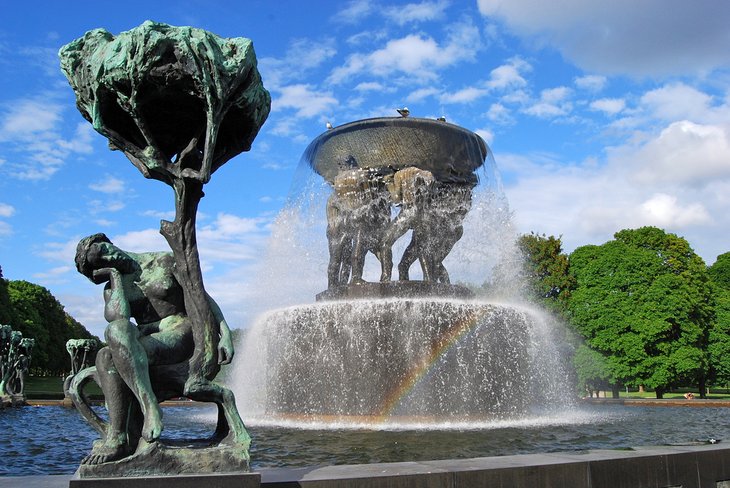
The iconic Vigeland Sculpture Park (Vigelandsanlegget), which sits inside Oslo's famous Frogner Park (Frognerparken), is one of Norway's most famous tourist attractions. Open year-round, this unique sculpture park is Gustav Vigeland's lifework and contains 650 of his dynamic sculptures in bronze, granite, and wrought iron.
The majority of the sculptures are in five themed groups along a 853-meter-long axis. The oldest is the fountain group, depicting the cycle of human life, beyond which can be seen the 16-meter-high Monolith, comprising 121 intertwined human bodies.
Tourists will want to spend time exploring the rest of Frogner Park, where there are ample green spaces for picnics, recreational facilities, an enormous rose garden, and the nation's largest playground. Here, you can also find the Oslo City Museum (Oslo Bymuseum), as well as the Vigeland Museum (Vigelandmuseet), which is just outside the park.
Address: Nobels gate 32, N-0268 Oslo
Official site: https://vigeland.museum.no/en
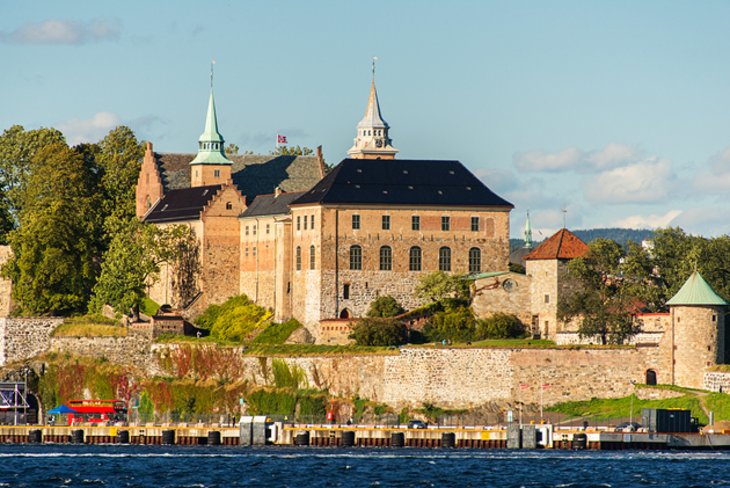
Rising above the Oslofjord , on the promontory of Akernes , sits the majestic Akershus Fortress (Akershus Festning) built by Håkon V at the end of the 13th century. You can easily spend the best part of a day sightseeing here.
Take your time to wander the grounds and ramparts with their wonderful harbor views before exploring the quaint chapel with its tomb of Håkon VII (1872-1957) and the remains of the original medieval castle. Also located in the grounds is the Museum of the Norwegian Resistance , also known as the Norwegian Home Front Museum ( Norges Hjemmefrontmuseum ). Be prepared to spend a few hours here learning about the German occupation of 1940-45.
If you've any energy left, head over to the Norwegian Armed Forces Museum (Forsvarsmuseet) in Oslo's old Arsenal. This fascinating museum features numerous displays of weapons and exhibits illustrating the history of the Norwegian forces and the defense of Norway over the centuries.
Address: Akershus Festning, 0015 Oslo
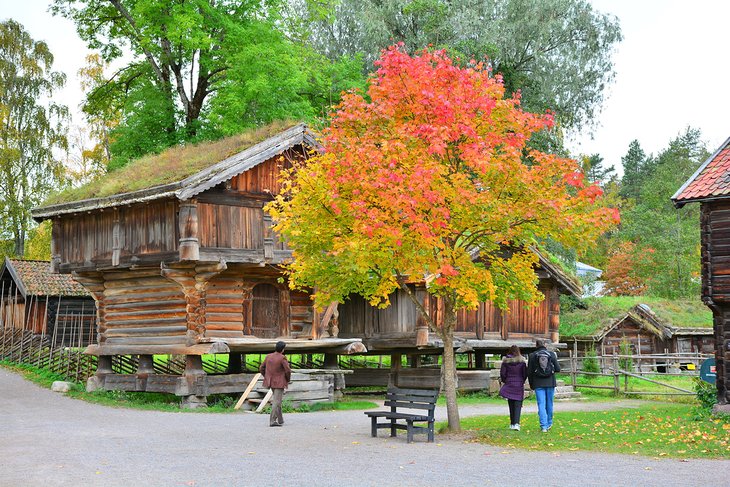
Located in Olslo's Bygdøy area, the Norsk Folkemuseum is an excellent open-air museum that offers a range of permanent exhibits covering 500 years of Norwegian folk culture. The museum's buildings are divided into several areas that highlight various time periods and settings. One of the largest areas is the rural "Countryside" area, which features typical farmhouses from different points in history, including re-creations of goahti , a traditional Sami structure.
The museum also has an "Old Town," largely comprised of historic buildings that were relocated from Christiania, an early 17 th -century settlement. The museum also offers daily programs for all ages, including hands-on folk craft activities, and costumed interpreters can be found throughout the property carrying on with daily life in a bubble of history. While here, be sure to sample the lefse , a traditional cinnamon sugar bakery treat.
Address: Museumsveien 10, Bygdøy, 0287 Oslo, Norway
Official site: www.norskfolkemuseum.no/en
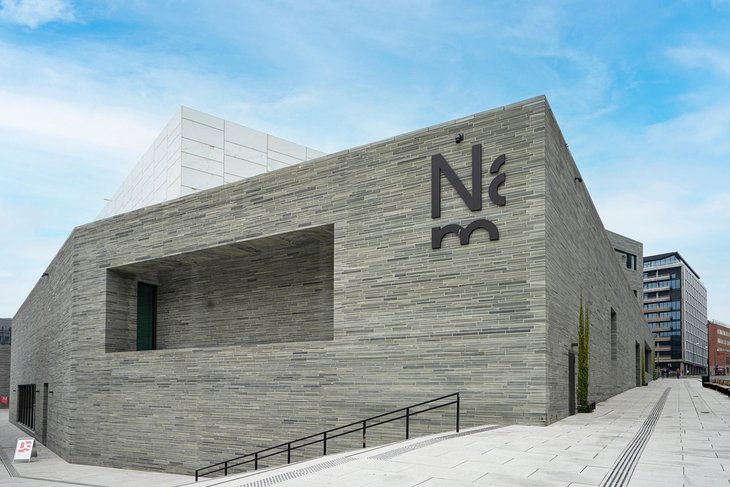
Slated to open in June 2022, Oslo's new National Museum will consist of collections from the National Gallery and the National Museum - Architecture , as well as additional collections of contemporary art and design. The largest such museum in Scandinavia, it will house the country's biggest art collection, featuring the works of Norwegian artists from the 19th century through the present, including J. C. Dahl and several works by Edvard Munch, including his most famous work, The Scream .
The new National Museum will eventually also house collections from the currently closed Museum of Contemporary Art and the Museum of Decorative Arts and Design, and will become the home for the National Gallery collections. Tourists should be aware that various exhibits may not be open during the move, so check the museum website prior to planning a trip.
Address: Universitetsgata 13, Oslo
Official site: www.nasjonalmuseet.no/en/
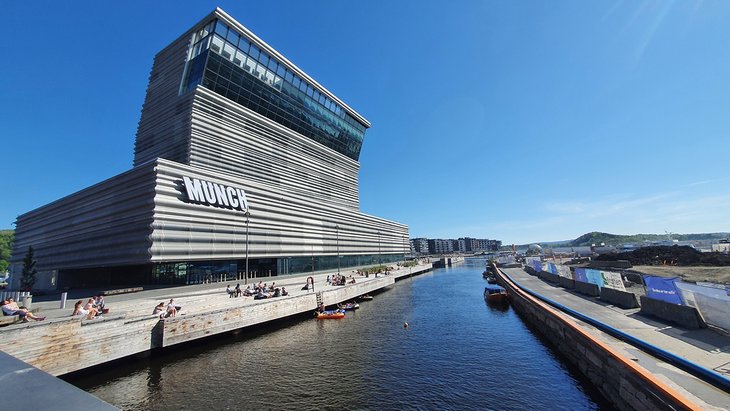
Dedicated to the life and work of Norway's greatest painter, Edvard Munch (1863-1944), the Munch Museum (Munch-museet) contains a vast collection of paintings, graphic art, drawings, watercolors, and sculptures from the great artist's life.
Containing almost 28,000 works of art in addition to personal effects and tools - even his private library - the museum also puts on special exhibits devoted to particular aspects of Munch's work through film screenings, concerts, guided tours, and lectures.
Please note: The Munch Museum is relocating to a new facility near the city's opera house. While the move is expected to be complete by the end of 2021, be sure to check first for information on their official website, below.
Address: Tøyengata 53, 0578 Oslo
Official site: http://munchmuseet.no/en
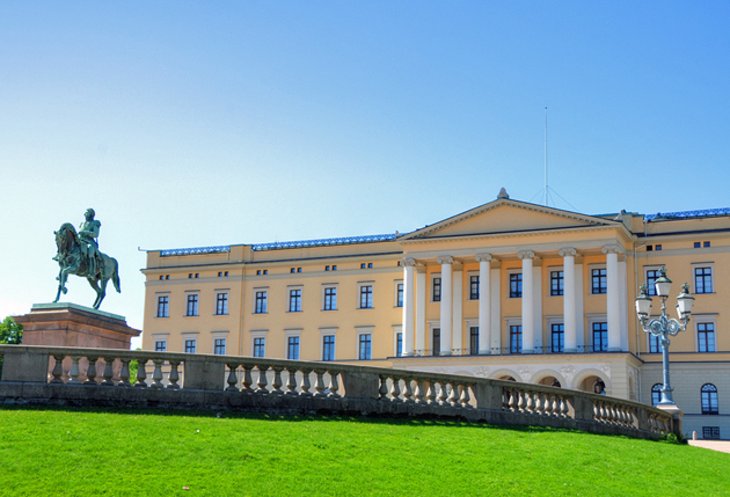
Located high up on the northwest end of Karl Johansgate , the Norwegian Royal Palace (Slottet) was built in 1825 and dominates the cityscape. The impressive 173-room building is open to the public for guided tours during the summer only, with English-language guides available four times daily.
Tours include the Cabinet Parlour and Cloakroom, the White Parlour, Mirror Hall, Great Hall, Banquet Hall, and other significant rooms in the palace. Visitors are also free to wander the grounds and gardens or watch the regular changing of the guard year-round. Just to the south of the palace sits the Norwegian Nobel Institute (Det Norske Nobelinstitutt) where the Nobel Peace Prize is presented.
Address: Slottsplassen 1, 0010 Oslo
Official site: http://www.kongehuset.no/seksjon.html?tid=28697
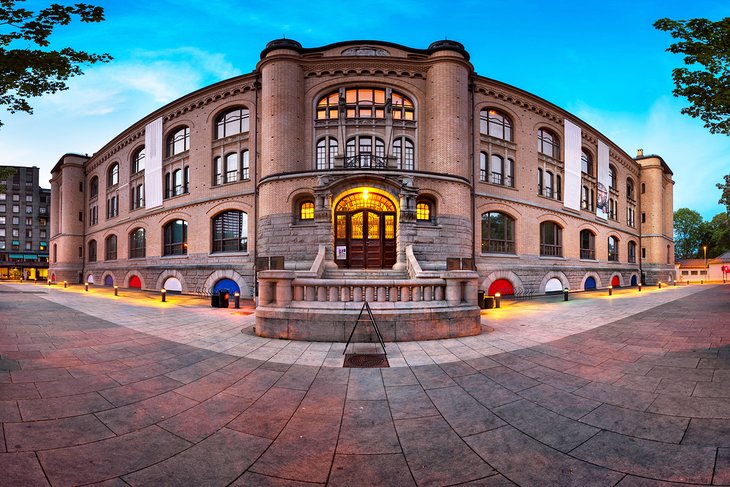
The Museum of Cultural History (Kulturhistorisk museum) oversees the city's Historical Museum , which explores various aspects of human history. It houses the largest assembly of Egyptian artifacts in Norway, including mummies and funerary objects.
The museum's Medieval Gallery is also extensive, exhibiting an impressive collection of daily items, as well as several examples of church art and religious artifacts. There is also a large exhibit dedicated to the history of gold coinage, including examples of coins from the past 2,600 years.
Other areas of the museum focus on looking at people, exploring the lives of indigenous peoples, as well as a thought-provoking exhibit about humanity's ability to overcome threats and challenges beyond its control. The museum also hosts a variety of temporary exhibits and continues to add to its Viking Age Exhibition , which contains rare items, like a preserved Viking helmet.
Address: Frederiks gate 2, 0164 Oslo
Official site: www.khm.uio.no/english
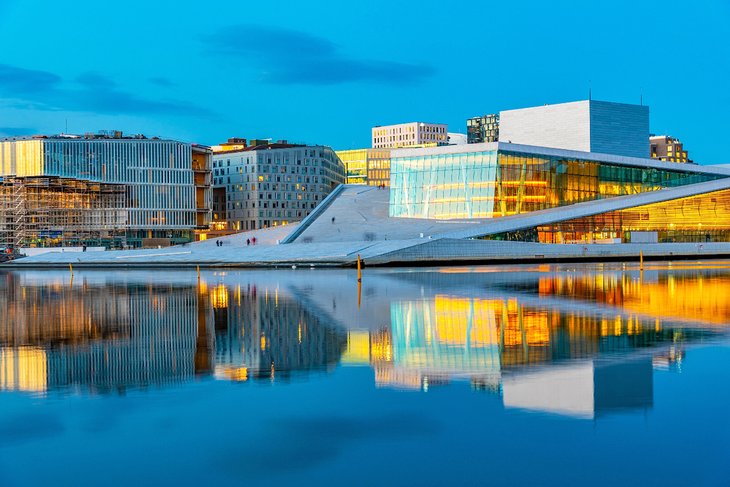
Olsofjord connects the city of Oslo to the North Sea , providing over 750 square miles of protected waterway to enjoy. There are a wide range of cruise options, from fully guided tourist boats with full amenities to more rustic options featuring sailboats.
If you are short on time but still want a chance to see the city's landmarks from the water, consider booking a dinner cruise; some float passively in the Inner Olsofjord around the Bygdøy Peninsula , while others set sail to explore the many islands beyond. Most of these can be found at or near the piers by City Hall .
More adventurous travelers can rent a kayak or canoe and explore the water on their own or hop aboard a less formal "cruise" by riding one of the many ferries that regularly connect to various surrounding towns.
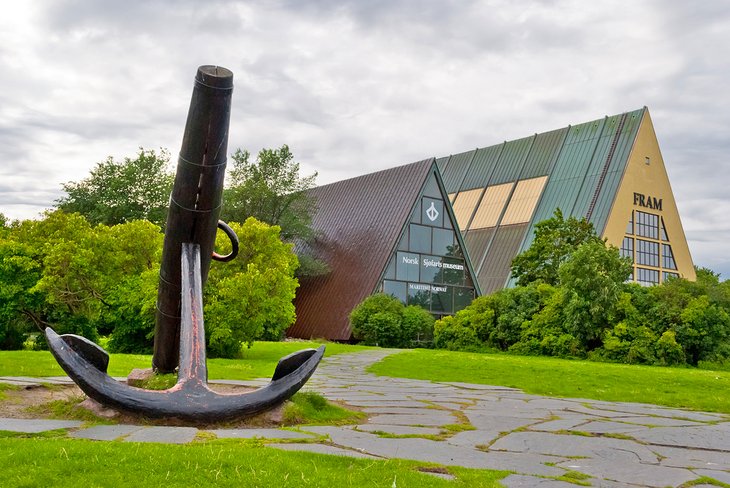
Named after the first Norwegian ship built specifically for polar research, the Fram Museum ( Frammuseet ) is a must for anyone with an interest in Arctic exploration. The museum's star attraction is the Fram , an icon due to its many successful polar voyages, as well as Gjøa , the first ship to navigate the Northwest Passage .
Visitors can board the Fram and explore its engine room, crew cabins, and other areas which have been preserved and restored to accurately depict life aboard the ship.
Exhibits throughout the museum include information on the voyage, as well as items of interest, including navigational instruments and the ship doctor's medical equipment. Other exhibitions explore topics including the life of Fram Captain Fridtjof Nansen, as well as the efforts and accomplishments of the pioneers who paved the way for him.
Address: Bygdøynesveien 39, 0286 Oslo
Official site: http://frammuseum.no
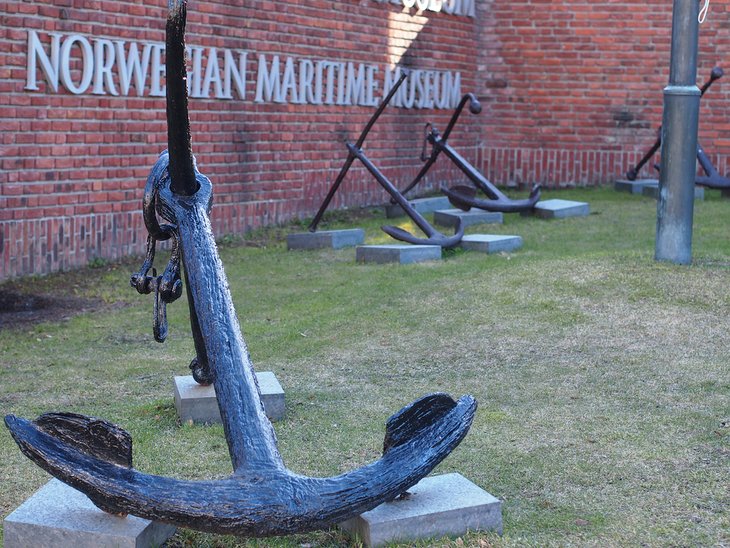
The Norwegian Maritime Museum (Norsk Maritimt Museum) features exhibits geared for all ages, which encourage visitors to step back in time to imagine the lives of seafaring Norwegians over the past thousand years. This includes an expansive section dedicated to Vikings, as well as exhibits dedicated to maritime life during later centuries when pirates roamed the sea.
Kids will love the fully interactive Queen of Congo exhibit, where they can board the ship, play with instruments, and even play supper time in the galley. With its fascinating exhibitions about fishing, shipbuilding, and marine archeology, as well as an impressive collection of models and paintings, a visit here is time well spent.
Address: Bygdøynesveien 37, Oslo
Official site: https://marmuseum.no/en

Set in an adjoining building to the Fram Museum stands t he Kon-Tiki Museum (Kon-Tiki Museet), with its displays dedicated to Thor Heyerdahl. This Norwegian sailor, explorer, and adventurer captured the hearts and minds of the world when, in 1947, he sailed from Peru to Eastern Polynesia on a raft made entirely of balsa wood to demonstrate how he believed the Pacific region was settled.
Opened in its present location in 1957, this fascinating attraction offers plenty of details both about Heyerdahl and his famous ship. In addition to seeing the famous Kon-Tiki up close, other vessels used by the legendary Norwegian are also on display, including the 14-meter-long Ra II, made of papyrus and in which he sailed across the Atlantic Ocean in 1970.
English language guided tours are available, and be sure to catch a viewing of the Academy Award-winning documentary that propelled Heyerdahl to fame.
Address: Bygdøynesveien 36, 0286 Oslo
Official site: www.kon-tiki.no
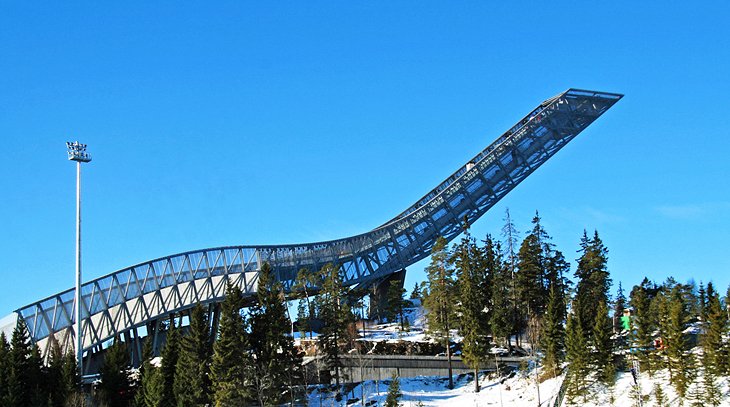
Located at the base of Holmenkollen Ski Jump (Holmenkollbakken), the Ski Museum is the oldest of its kind in the world, open since 1923. Here, ski enthusiasts will find exhibits and artifacts chronicling nearly 4,000 years of ski history and exploring various related topics, including weather and polar exploration.
The oldest ski on display here dates back to AD 600, and there are several other examples, including skis from the 8th, 10th, and 12th centuries. Other skis in the collection represent a wide variety of terrain and uses, from mountain skis to fast skis, and even the longest skis.
The museum also has a Hall of Fame dedicated to great Norwegian skiers, interactive exhibits about modern skiing and snowboarding, and information about Fridtjof Nansen's polar explorations on the ship Fram. Guided tours include the Ski Jump and its Jump Tower Observation Deck, which has excellent views over the city.
Address: Kongeveien 5, 0787 Oslo
Official site: www.skiforeningen.no/en/holmenkollen
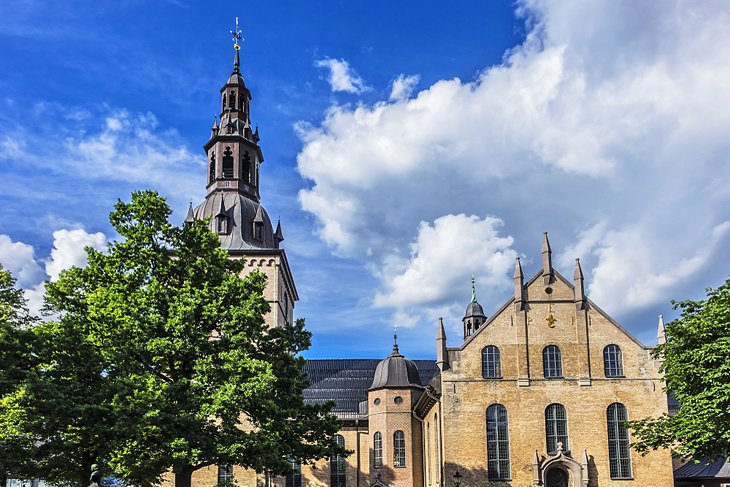
Although consecrated in 1697, Oslo Cathedral (Oslo domkirke) has been rebuilt and renovated numerous times. Its tower was rebuilt in 1850, while its interior was renovated soon after the end of WWII.
Notable features include the main doorway with its decorated bronze doors, as well as the ceiling paintings by H. L. Mohr, the Baroque pulpit and altar (1699), and the stained glass by Emanuel Vigeland. Afterwards, be sure to visit the Oslo Bazaar along the old church walls. Dating back to 1841, these fascinating halls are now occupied by galleries, cafés and antique dealers.
Address: Karl Johansgt. 11, 0154 Oslo
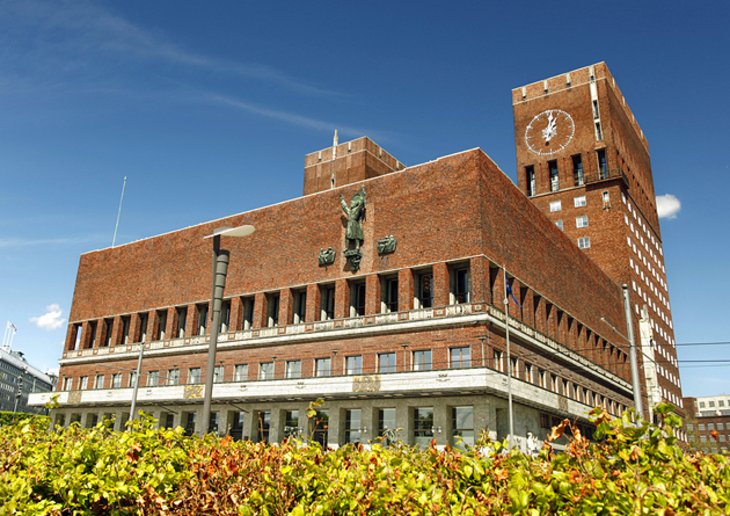
Oslo's enormous City Hall (Rådhuset) is undoubtedly one of the city's great landmarks. This imposing square building, built of concrete faced with brick, was designed by Arnstein Arneberg and Magnus Poulson and has two towers, one of them adorned with a huge clock face. One of the towers houses the 38 bells that can be heard chiming throughout the harbor area.
As well as its fascinating facade with its sculptures and reliefs, the interior is also worth a visit. Here, you'll see a rich fresco created by Henrik Sørensen, Per Krohg, Edvard Munch, and other famous Norwegian artists.
Address: Rådhuset, 0037 Oslo
Official site: www.oslo.kommune.no/oslo-city-hall/
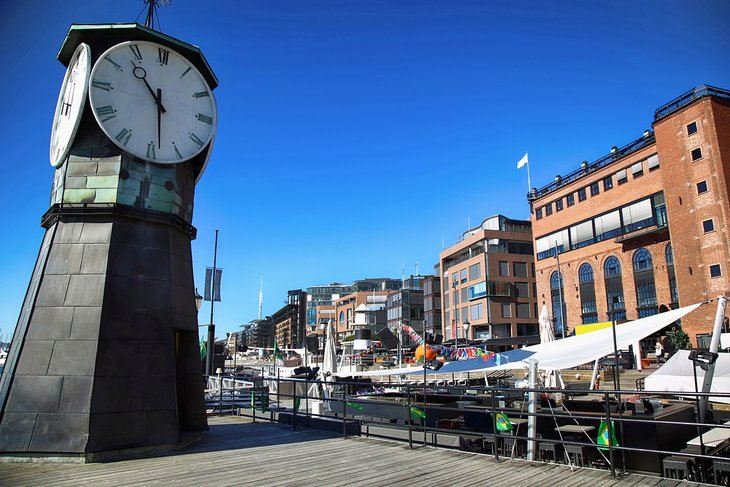
Built around an abandoned shipyard, Oslo's Aker Brygge area is the heart and soul of the city. Bustling and vibrant day and night, its stunning architecture - that magnificent blend of new and old that perfectly compliments Norway's stunning natural beauty - is everywhere on display, and everywhere breathtaking.
It's estimated that 12 million visitors find their way to Aker Brygge every year, drawn by its sea-front boardwalk, fine shopping, great restaurants, and cozy year-round patio bars with their snug rugs and fireplaces.
While visiting, be sure to pop into the newly opened Astrup Fearnley Museum of Modern Art . The museum consists of two buildings: one for its own collection of works by such greats as Andy Warhol, Damien Hirst, and Jeff Koons, the other for rotating exhibitions.
Address: Bryggegata 9, 0120 Oslo
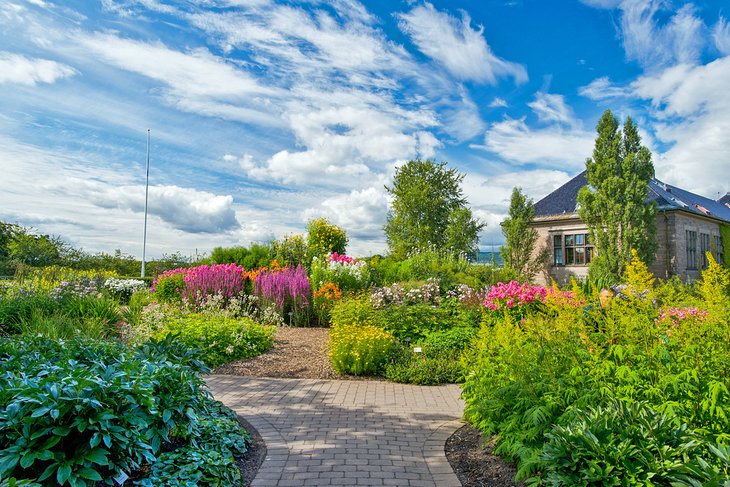
Oslo's Natural History Museum (Naturhistorisk museum) - consisting of the Geological Museum , the Zoological Museum , and Botanical Gardens - is Norway's largest natural history collection. The Geological Museum includes minerals, precious metals and meteorites, plus an impressive collection of dinosaur skeletons, while in the Zoological Museum you'll find dioramas of Norwegian fauna. Best of all, however, is the exquisite Botanical Garden.
Founded in 1814, the garden features 7,500 different plant species from Norway and other parts of the world, 1,500 of them located in the beautiful Rock Garden with its waterfalls.
Address: Sars gate 1, 0562 Oslo
Official site: www.nhm.uio.no/english/
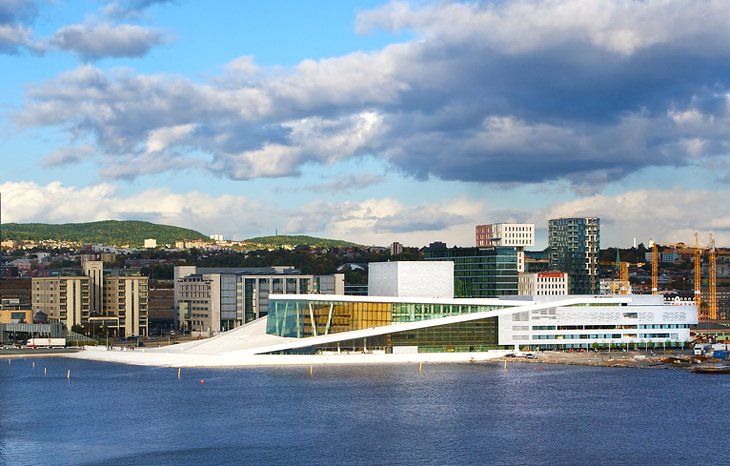
Home to the Norwegian National Opera and Ballet , as well as the National Opera Theatre , the 1,364-seat Oslo Opera House (Operahuset) seems to almost want to slip into the city's harbor, an effect exaggerated by its angled exterior surfaces. Clad in Italian marble and white granite, the Opera House is the largest cultural building constructed in Norway since Trondheim's Nidaros Cathedral in the 14th century.
In addition to its many performances, visitors can also participate in a variety of interesting public programs and behind-the-scenes tours, as well as enjoy the views from a stroll on the building's roof.
If you are visiting Oslo during August, be sure to spend some time enjoying the month-long Festival of Chamber Music , which includes dozens of chamber music concerts drawing internationally acclaimed musicians from around the globe. Performances take place in the spectacular Akershus Fortress , with the stunning Oslofjord as a backdrop.
Taking place in the same month and in the same location, the Oslo Jazz Festival is another huge draw for musicians and fans alike. Oslo also hosts the Ultima Contemporary Music Festival in mid-October, which features a competition for new orchestral works.
Address: Kirsten Flagstads Plass 1, 0150 Oslo
If you're visiting Oslo for the first time, the best place to stay is in Central Oslo, preferably close to Karl Johans gate, the city's main street. Here, you'll find attractions such as the Royal Palace, National Theatre, and Oslo Cathedral, as well as an impressive array of museums and galleries. Most of the city's top attractions are within walking distance of each other. Below are some highly rated hotels in this central location:
Luxury Hotels:
- Minutes on foot from some of Oslo's top museums and galleries, central station, and the Royal Palace, the eco-conscious Thon Hotel Rosenkrantz Oslo sports bold, contemporary decor, and the good-value rates include a breakfast.
- Within walking distance of Aker Brygge, the National Gallery, and Royal Palace, the family-run Hotel Continental Oslo is adorned with distinctive works of art and elegant furnishings. Each room is unique.
- The pet-friendly Clarion Collection Hotel Bastion is also in a handy location, near Central Station and the opera house. Rates include an organic breakfast and a light buffet dinner.
Mid-Range Hotels:
- In the heart of the city, near central station and the National Gallery, Clarion Collection Hotel Folketeateret sits at the top-end of the mid-range hotels, with its cozy, contemporary rooms and a free breakfast.
- The earthy, textural decor is a standout feature of the eco-friendly Oslo Guldsmeden , 100 meters from the Royal Palace, near Aker Brygge. Rates include breakfast made with produce from local farms.
- On a quiet side street in the city center, Thon Hotel Munch has crisp white rooms with bold splashes of color and an organic buffet breakfast.
Budget Hotels:
- Central Oslo has few budget options, but the Cochs Pension is one of these. Set in a great location near the Royal Palace, rooms come with fridges, and some have kitchenettes.
- Smarthotel Oslo is another central option. The rooms are small, but the hotel lies just around the corner from Oslo's main shopping street .
- About 20-minutes away from the city center by tram, Oslo Hostel Haraldsheim is also budget friendly. Rates include breakfast and parking.
Hopping around Town:
- The City Sightseeing Oslo Hop-On Hop-Off Tour is the perfect way to visit Oslo's top tourist attractions and includes an on-board commentary by a knowledgeable guide. This 24-hour pass allows access to 18 major sights, including the National Theater , Vigeland Sculpture Park , the Viking Ship Museum , and Oslo Cruise Ship Terminal , ensuring that you are able to get the most out of your trip.
All-Access Pass:
- Especially handy for those who want to visit multiple tourist attractions, the Visit Oslo Pass is a fantastic way to ensure you don't go over budget with admission fees and transportation costs. The pass is valid for admission to a staggering 36 attractions, and entitles the bearer to significant discounts at additional attractions. It also includes sightseeing tours and restaurants, and grants unlimited use of public transportation within zone 2, including tram, boat, bus, and trains. Those who opt for the 72-hour pass will also get a complimentary pass for the Hop-On Hop-Off Tour .
The Best of Oslo in One Day:
- Tourists with limited time in Oslo will appreciate the Oslo Combo Tour with a Grand City Tour and Oslo Fjord Cruise . This seven-hour experience includes photo-op stops at Vigeland Park and the Holmenkollen Ski Jump , as well as visits to several top museums, including the ship museums at Bygdøy Peninsula . To finish a perfect day, passengers will transfer to a boat and enjoy the last two hours on the water of Oslo Fjord while learning more about the area from the knowledgeable guide.
More Related Articles on PlanetWare.com
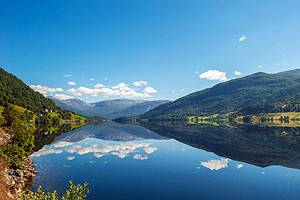
Norway's Biggest Fjords: Located on the western coast of Norway, Sognefjord is the country's largest fjord, stretching for 204 kilometers. Sognefjord is a three-hour drive from Bergen, a picturesque city with plenty of attractions and activities for tourists . Just south of here is the Hardangerfjord area , home to Norway's second-largest fjord. This was Norway's first international sightseeing destination, enjoyed by Victorian travelers as early as 1875.
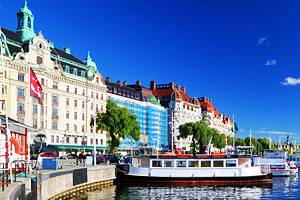
Exploring Sweden: Although it is a six-hour train ride to Stockholm, those staying in Oslo for an extended time may want to plan a day exploring all the highlights of this city , which is often called the Venice of the North. Sweden is also home to many fascinating sites, including Kansen , the world's oldest open-air museum.
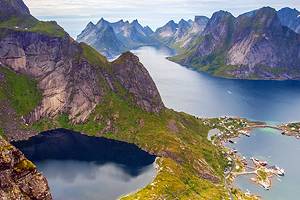
Norwegian Islands: If you are feeling adventurous and have the time, consider visiting the Lofoten Islands , which have an amazingly mild climate despite being inside the Arctic Circle. The country's northernmost city is Tromsø , a major port city, which is visited by tourists hoping to see the aurora borealis , or northern lights, because if its location in the Arctic Circle.
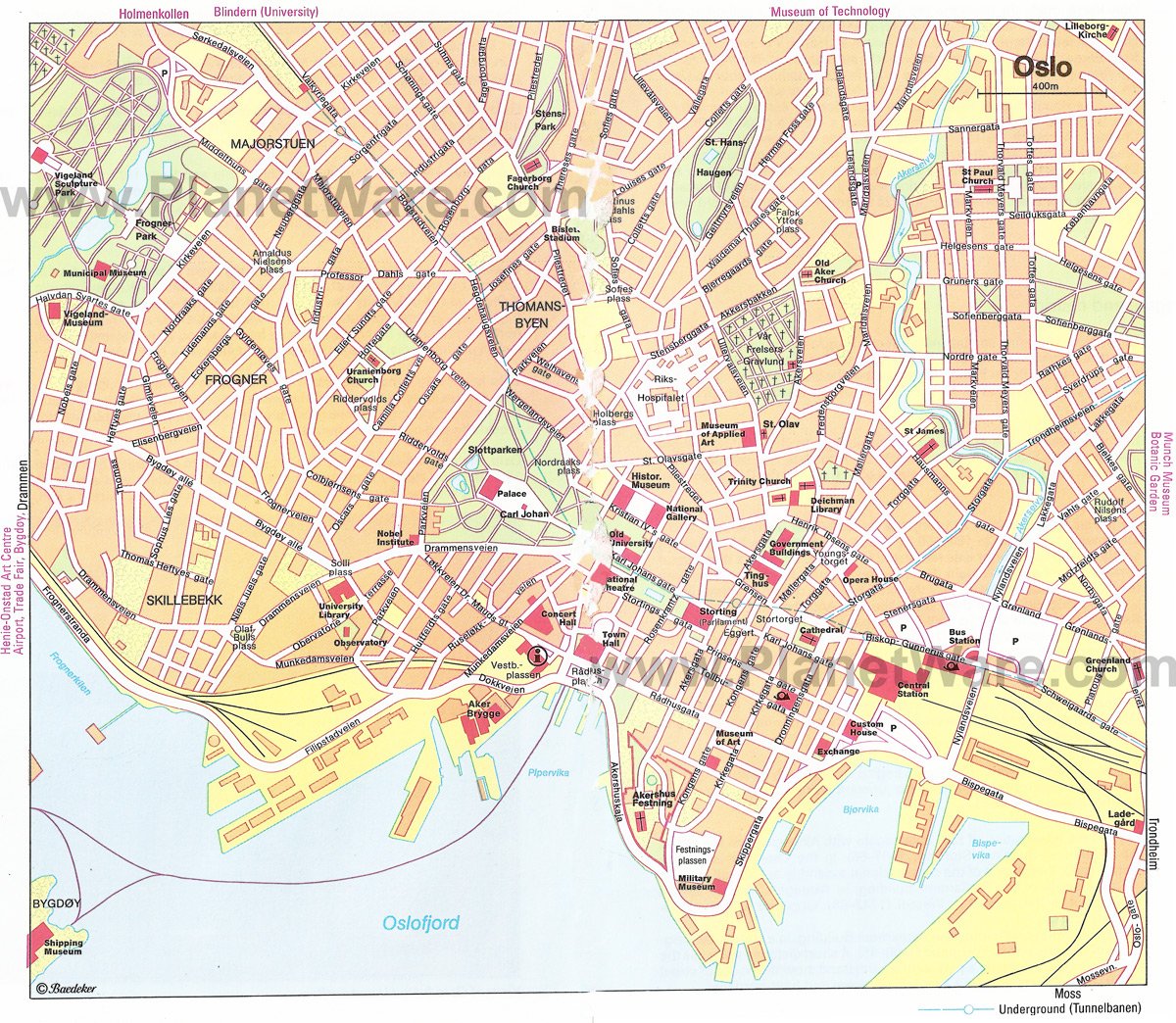
More on Norway
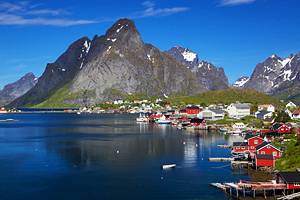

3 Days In Oslo: The Ultimate Oslo Itinerary
Last Updated: August 31 2024
If you want to spend 3 days in Oslo, the capital city of Norway, you’ve come to the right place! We recently visited Oslo and quickly fell in love with everything about this amazing city.
From the historic architecture and Oslofjord to the popular shopping districts and bustling street food markets, this destination stole our hearts. Today, we want to share everything we know about Oslo so that you can plan the perfect trip!
Oslo is regarded as one of the most expensive cities in Europe, so in this itinerary, we’re going to show you how to spend 3 days in the city without spending a fortune. We’ll show you the very best things to do, how to get around, how to eat on a budget, and so on!
Let’s get started…
Some posts on this site contain affiliate links. If you buy or book something through these links, we earn a small commission, but at no extra cost to you! If you want to learn more, you can take a look at our privacy policy!
Table of Contents
The Cheapest Way to See Oslo’s Top Sights
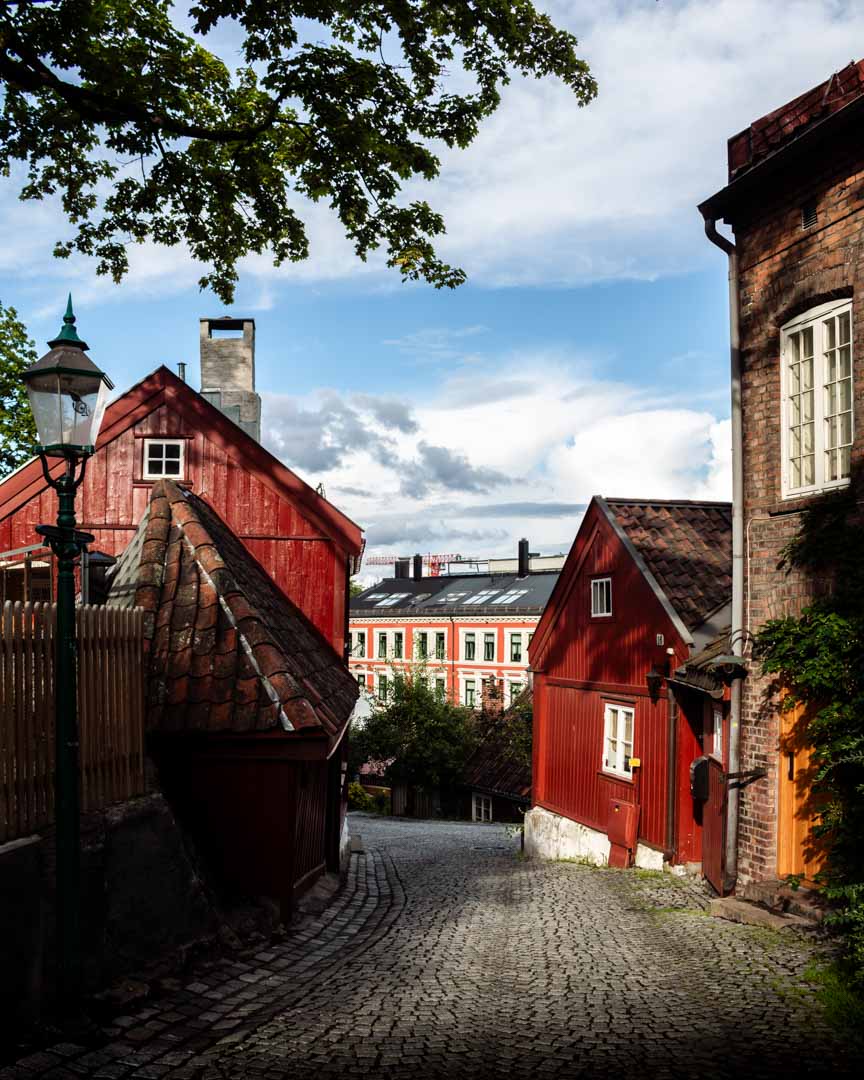
If you’re spending 3 days in Oslo, then you’ll likely part with a fair amount of cash. It’s an expensive city for sure, and there’s plenty to do. As such, you’ll be spending a lot on attractions as well as food and accommodation. Not to worry though, there’s a solution!
We’d recommend checking out the Oslo Pass to save your hard-earned cash. With this pass, you’ll have unlimited free public transport and free entry to 30 different attractions and museums.
Some of the attractions that are free with this pass include the Fram Museum, the Munch Museum, and the Kon-Tiki Museum (all of which are discussed in this guide). Not to mention, you’ll get discounts on other attractions, restaurants, shops, and entertainment venues.
You can purchase the pass online or at several locations within the city, and there are three different options available; 24 hours, 48 hours, and 72 hours.
A Quick Overview of Your 3-Day Oslo Itinerary
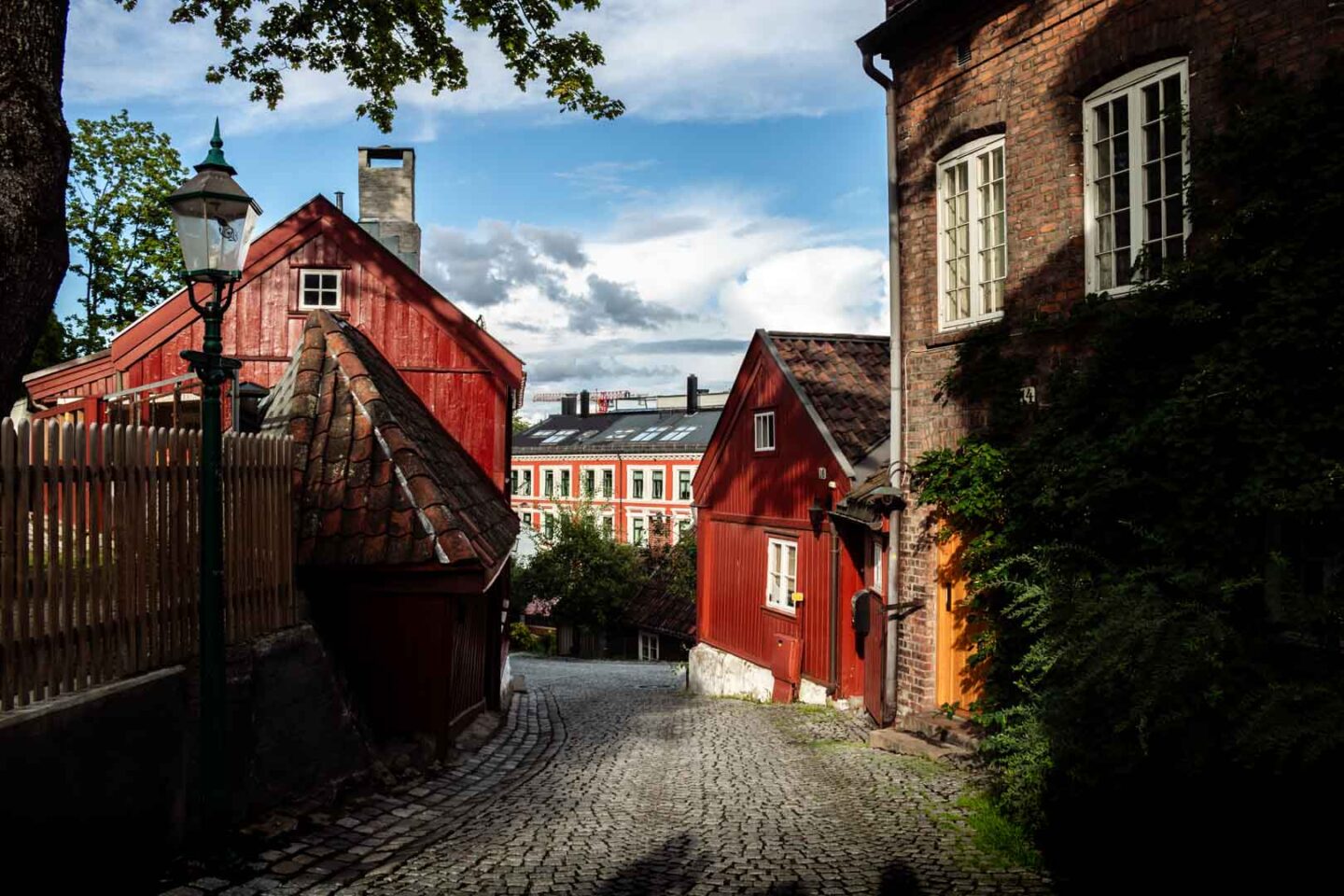
The Fram Museum, The Kon-Tiki Museum, The Norwegian Museum of Cultural History, Frognerparken, Vigeland Sculpture Park, Eat at Oslo Street Food
Oslo Fjord Tour, The Royal Palace, Akershus Fortress, The Munch Museum, Oslo Opera House, Eat at Barcode Street Food
Explore the Oslo archipelago, Visit one of Oslo’s Pubs
*We also would have included the Viking Ship Museum in this itinerary but it’s shut until 2025/2026.
Your 3 Days in Oslo: Day One
The first day of this Oslo itinerary allows you to explore some of the most famous and iconic sights in the city. So be prepared for a busy day packed with history and tasty street food. You’ll spend most of the day in Bygdøy, which is best known for its lush scenery, walking trails, and museums!
The Fram Museum
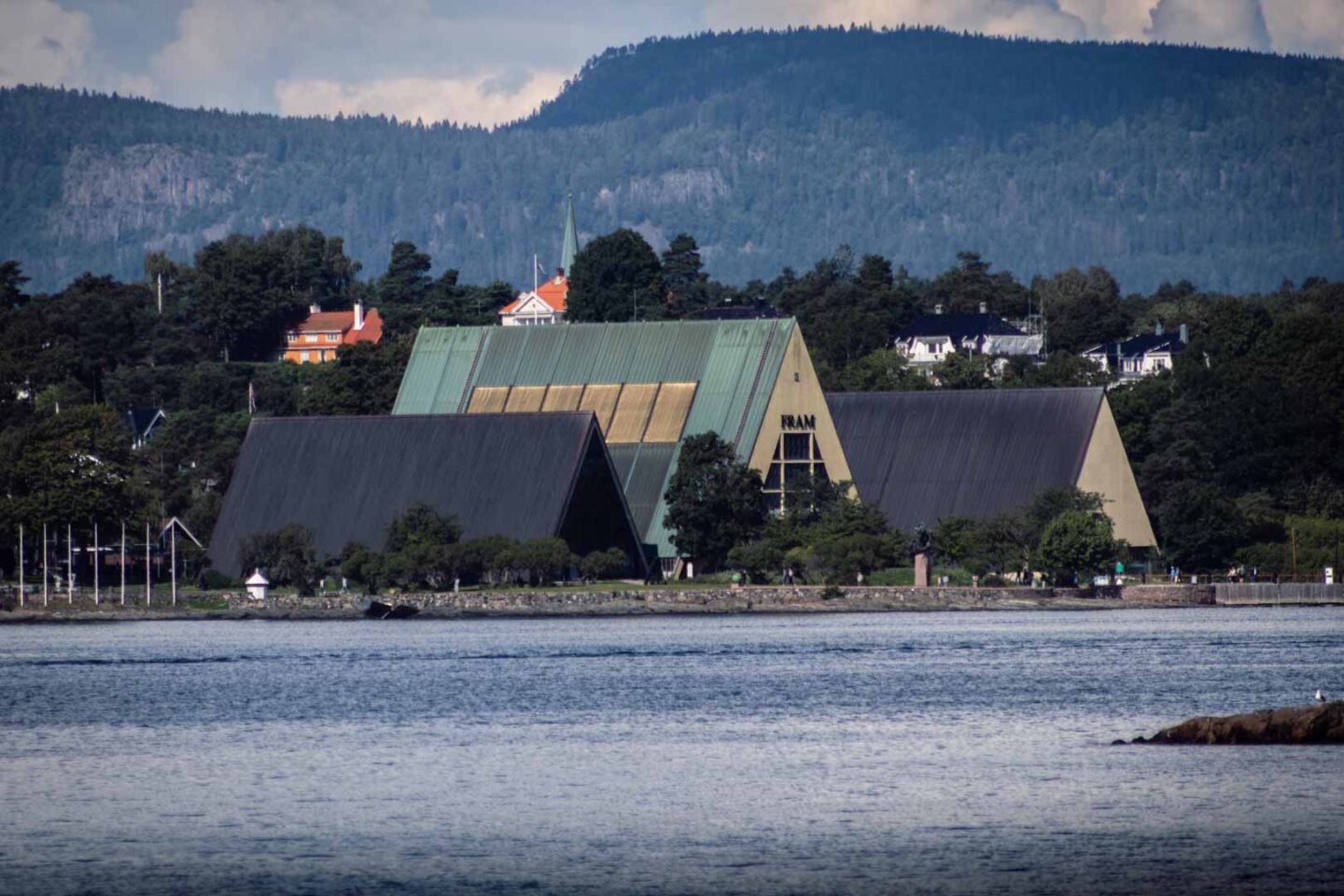
The first stop on your 3 days in Oslo should be the Fram Museum . This world-famous museum tells the story of Norwegian polar exploration, which we must say, is incredibly interesting!
Aside from detailing Norway’s impressive polar expeditions, this museum displays exhibitions from some of the most famous voyages in the world. Open every day of the year from 9:30 am until 6 pm, the Museum’s centrepiece is the strongest wooden ship in the world – the Fram.
First launched in 1892, the Fram was used in Arctic and Antarctic expeditions for almost 20 years by famous Norwegian explorers such as Otto Sverdrup, Roald Amundsen, and Fridtjof Nansen. Today, visitors can climb aboard the ship, explore the cabins, and walk through the engine room – pretty cool huh?
It costs adults around £10.40 (140 NOK) and children £3.70 (50 NOK) to enter the museum. Alternatively, you can enter for free with an Oslo Pass .
The Kon-Tiki Museum
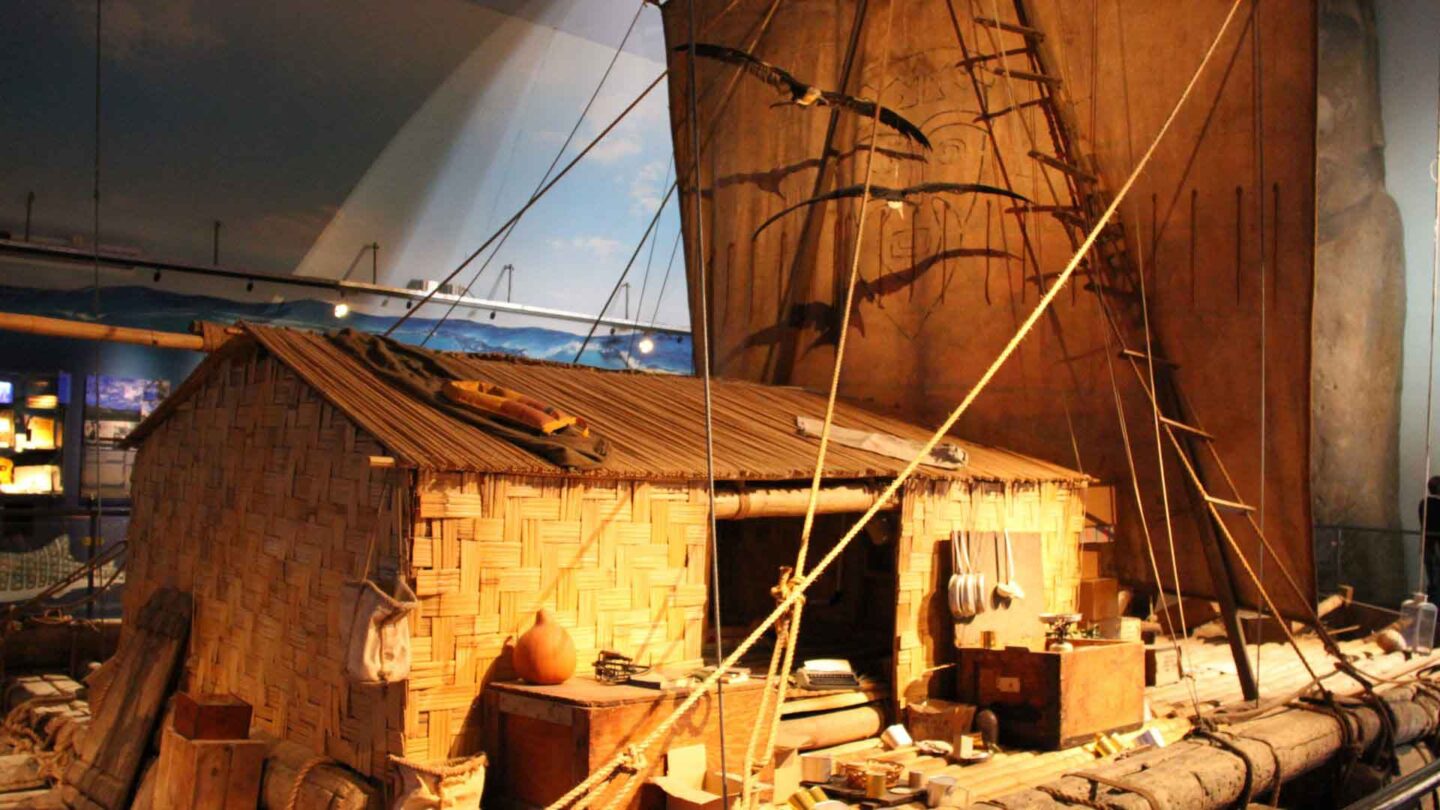
The Kon-Tiki Museum is just a 1-minute walk from the Fram Museum, so you should visit both places in one day. This museum isn’t too different from the Fram Museum, but it’s still well worth visiting, especially if you love maritime history!
The Kon-Tiki Museum is home to vessels and maps from the Kon-Tiki expedition. This expedition saw Norwegian writer and explorer Thor Heyerdahl journey across the Pacific Ocean from South America to the Polynesian Islands on a raft.
Inside, you’ll find a wide range of interesting artefacts and a library that contains more than 8,000 books. However, the main attraction here has to be the old wooden Kon-Tiki raft that Heyerdahl used to sail across the Pacific.
Named after the Inca God Viracocha, the Kon-Tiki is a spectacular sight. You’ll be left wondering how on earth Heyerdahl travelled so far on a vessel that looks so fragile. We certainly were!
The Norwegian Museum of Cultural History
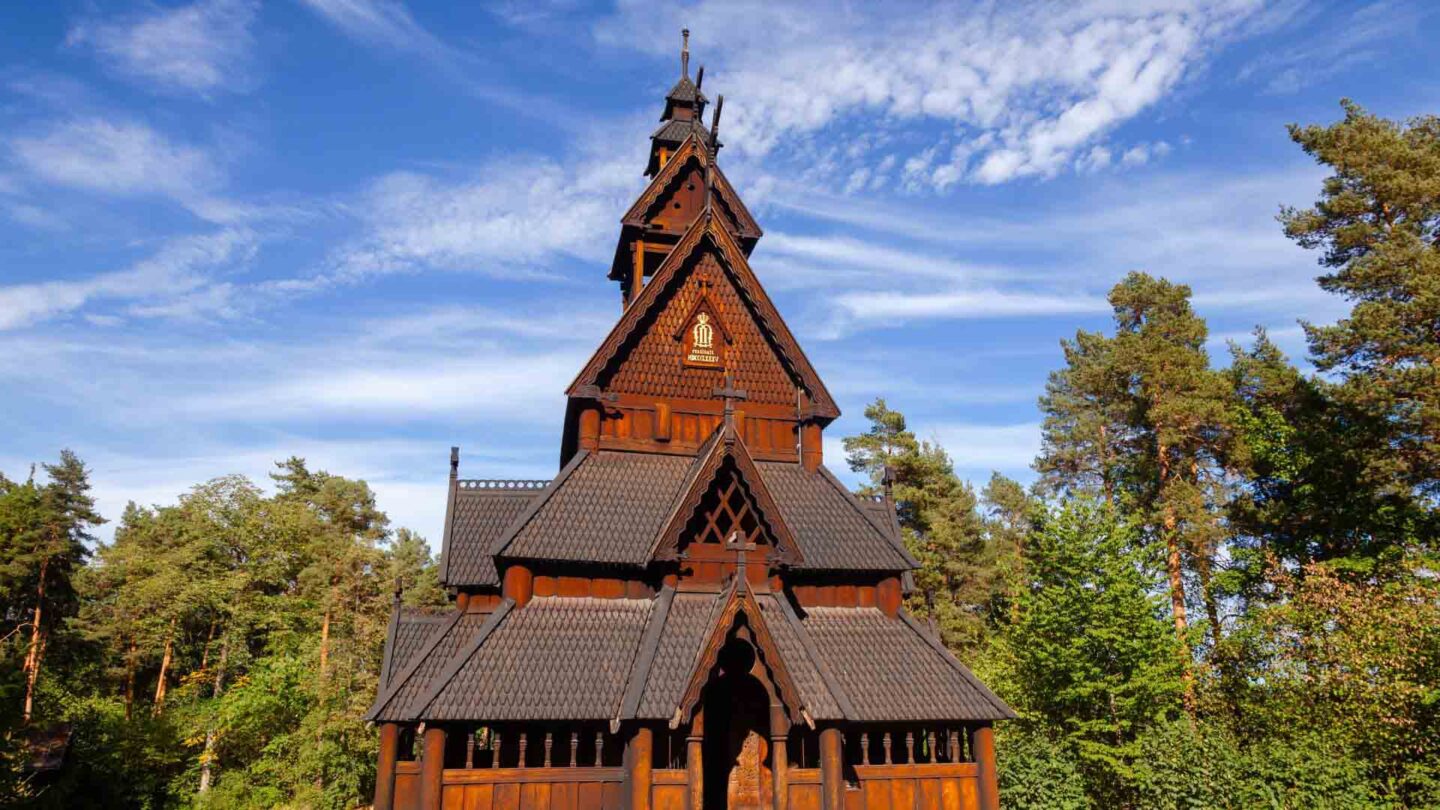
Another attraction you can visit on the Bygdøy Peninsula is the Norwegian Museum of Cultural History , which is a 20-minute walk from the Fram Museum. This fascinating museum houses exhibitions that focus on Norway’s history from the 1500s to the present day.
Some of the indoor exhibitions display Norwegian folk costumes, church art, and folk art, while the Open Air Museum takes visitors through an Old Town, complete with traditional Norwegian architecture. The Old Town features buildings from when Oslo was called Christiania!
The Timescape exhibition is well worth a look too, because it gives visitors an insight into the city’s history from 1600 to 1914. It’s worth noting that an audio guide for most exhibitions is available upon request.
The Norwegian Museum of Cultural History also hosts weekly events, so check the website before your visit. The museum is usually open between 10 am and 5 pm.
Frognerparken
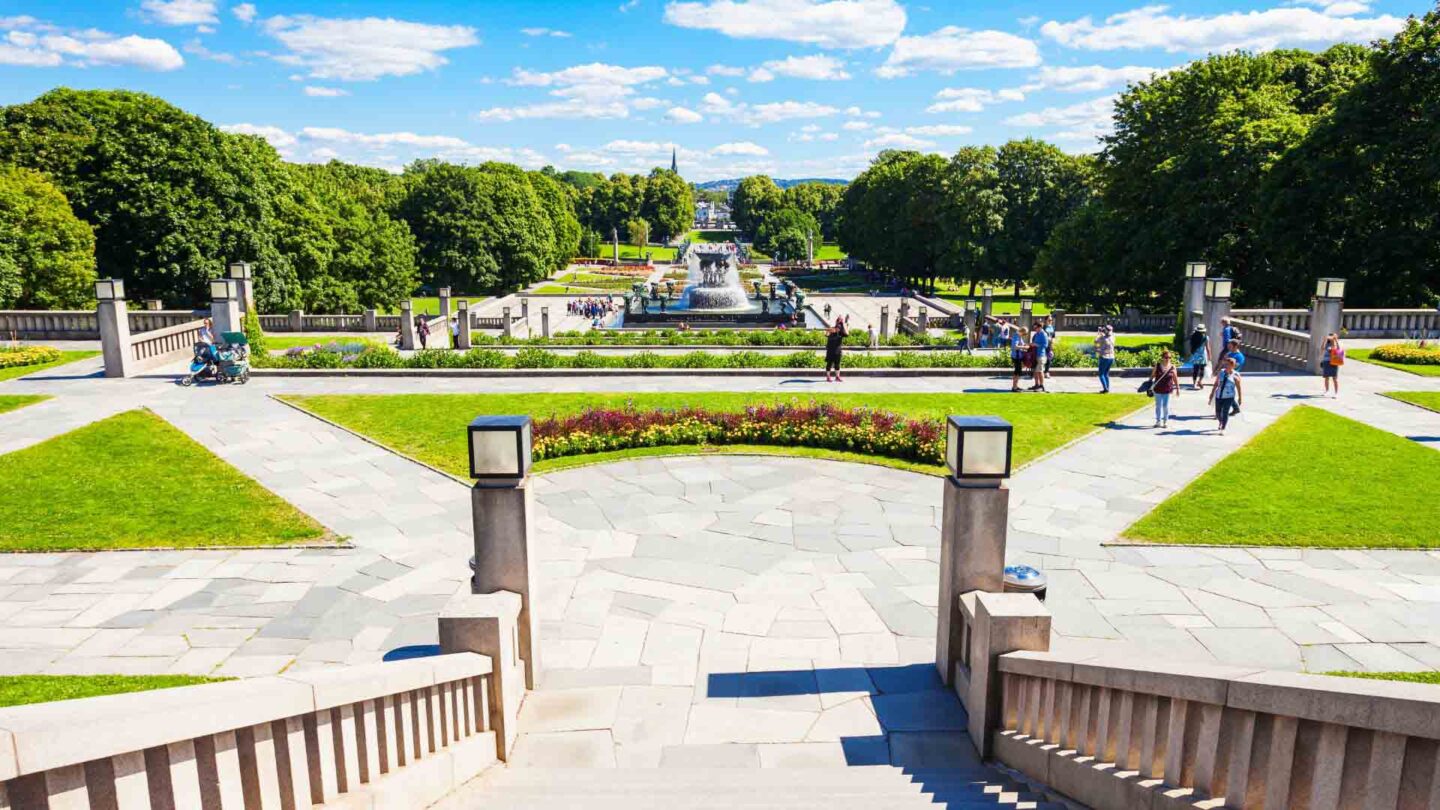
We love how green Oslo is! Honestly, there are lots of lush parks to visit if you want to escape the hustle and bustle of the city.
One of the best is Frognerparken, so make sure you stop by when visiting Oslo. Frogner Park is a public park that you can reach in less than 20 minutes from the Fram Museum via tram.
Home to a huge range of attractions, large lawns, and 14,000 plants, you could easily spend a couple of hours walking around the park. However, we can’t say we’d blame you if you just spent an hour watching the world go by!
We recommend looking for the Manor House and the Henriette Wegner Pavilion. If you explore Frogner Manor, you will find the Oslo Museum , which first opened in 1902. Here, you can learn a great deal about Oslo’s history and culture, and admire the impressive architecture.
Vigeland Sculpture Park
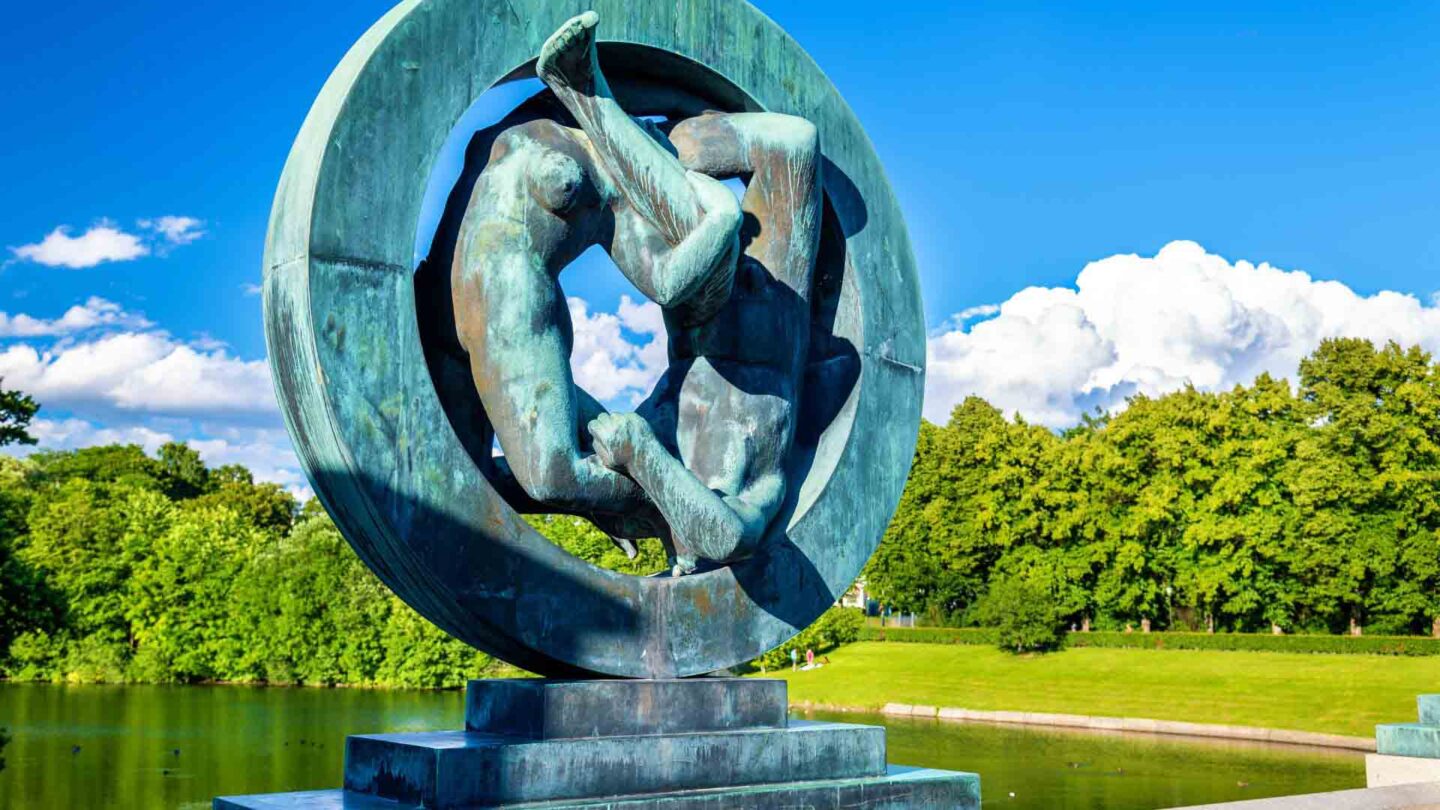
Next up is Vigeland Sculpture Park, which can be found in Frognerparken. Vigeland Sculpture Park is a popular attraction that displays the work of the famous Norwegian sculptor Gustav Vigeland.
Vigeland was born in 1869 and he died in 1943. During his life, he made a name for himself by creating sculptures from cast iron, granite, and bronze. He was responsible for the architectural layout and design of the park, which is now home to more than 200 of his sculptures!
Most of his sculptures depict people. However, the most popular are arguably the Monolith and the Wheel of Life. We found both of these sculptures to be very impressive.
Other popular sculptures found in the park include the Angry Boy, the Clamouring Babies, and the Ring. Most of the sculptures are quite strange, but the park is very intriguing. Free to the public, the park is open 24/7.
Eat at Oslo Street Food
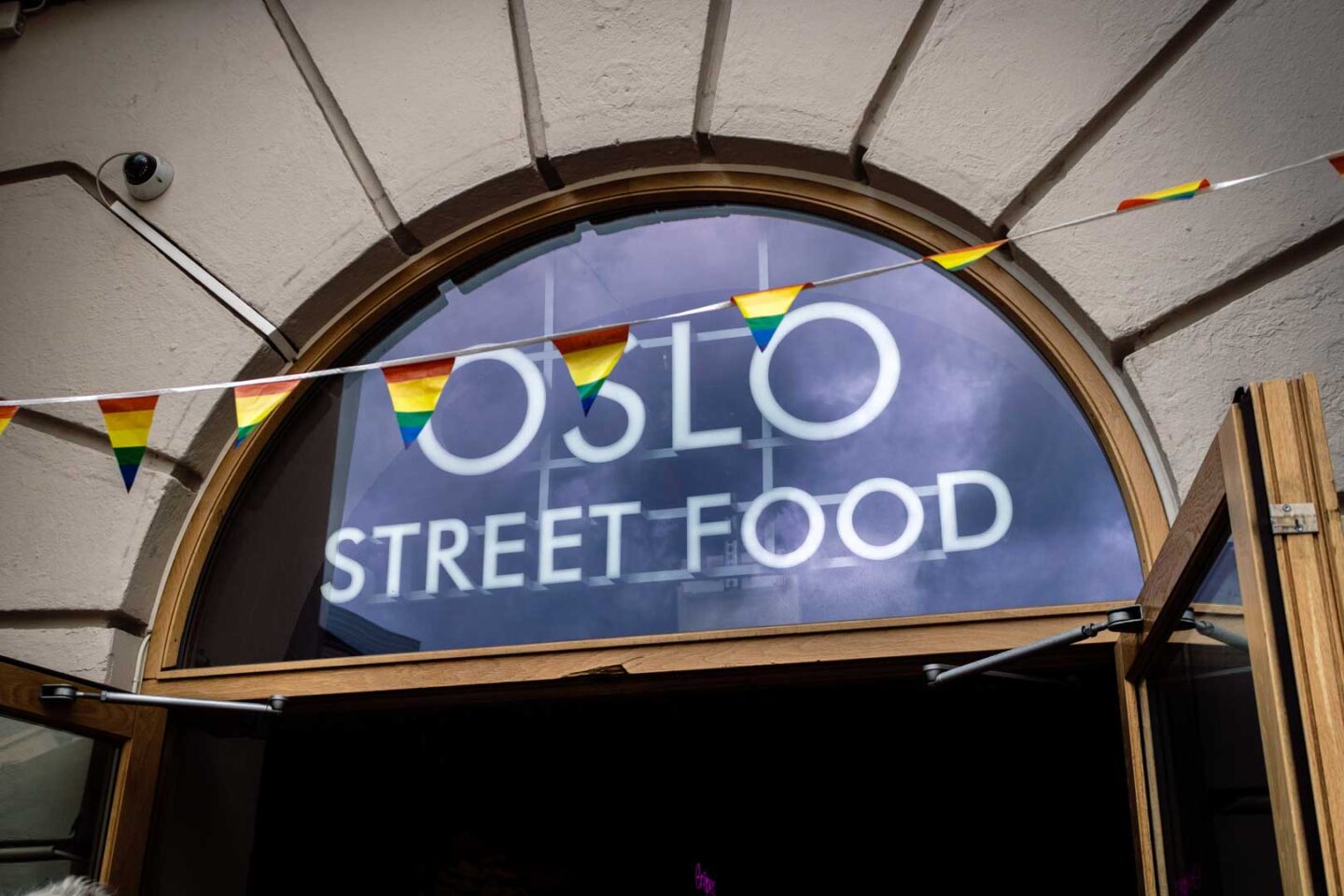
During your 3 days in Oslo, you’re going to eat some of the best food you’ve ever had. To keep costs down, we picked up pastries and sandwiches from bakeries and chose to eat at street food markets, where food is much more affordable!
One of the best street food markets in the city is Oslo Street Food . Found less than 10 minutes away from Oslo Cathedral, this lively street market is packed with tasty options from around the world.
There are food stalls serving Japanese, Korean, Thai, Indian, American, and even Hawaiian food. As you would expect, there are also stalls serving traditional Norwegian dishes too!
We highly recommend spending a few hours having a drink and a bite to eat at this food market, at least once during your time in the city. We particularly liked the Norwegian bread bowls with a hotpot filling.
Your 3 Days in Oslo: Day Two
On day two of this Oslo itinerary, you’ll spend a couple of hours exploring the Oslofjord on a sailing ship tour, before checking out more of the most popular attractions in the city. Oh, and you’ll get to finish the day at another delicious street food market!
Oslo Fjord Tour
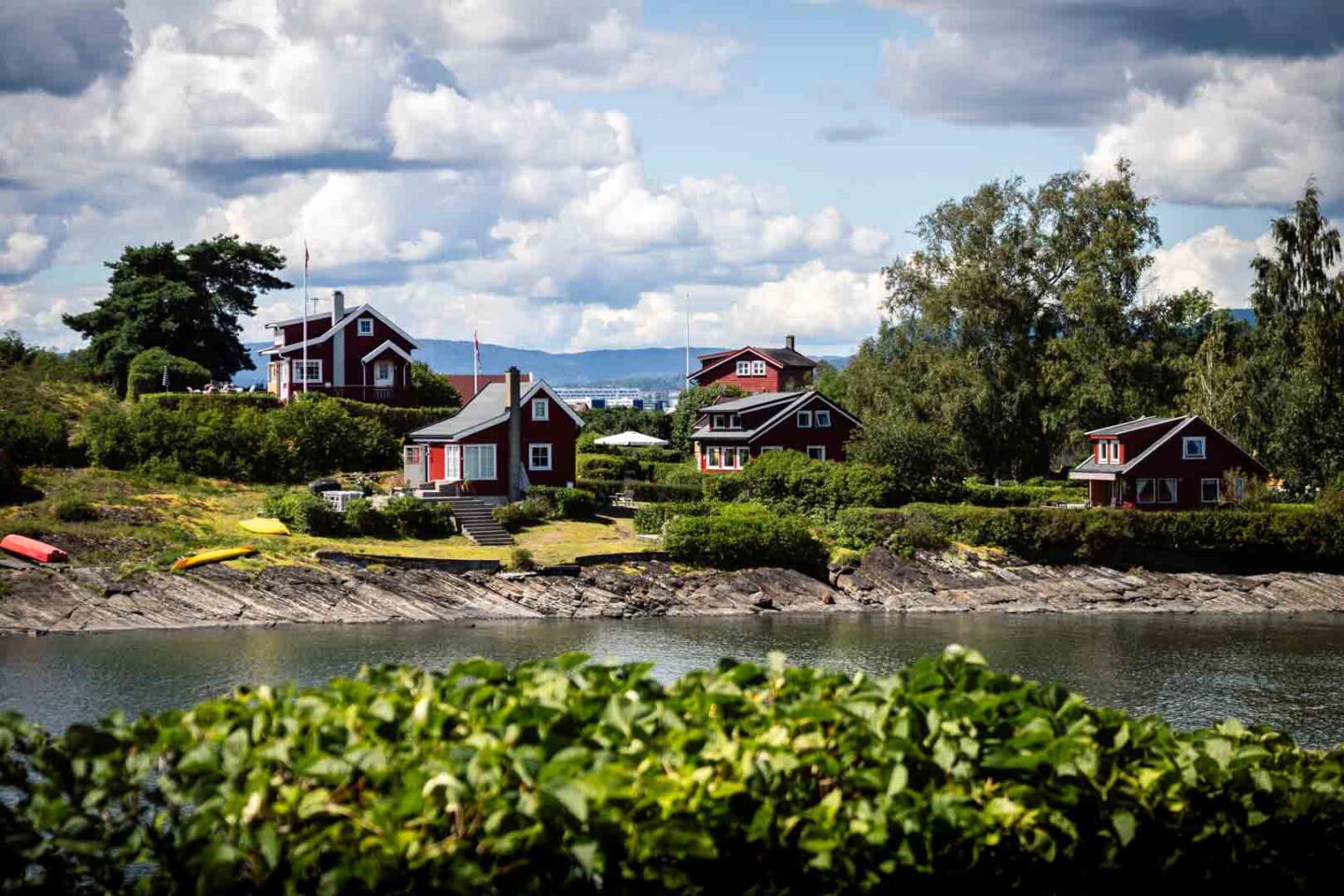
A weekend in Oslo isn’t complete without a trip to the Oslofjord, which is easily our favourite part of the city. The Oslofjord is a large inlet in southeast Norway that’s dotted with vibrant islands, small villages, and beautiful flora and fauna!
You can visit the fjord on your own by jumping on one of the many ferries at Rådhusbrygge 1 (City Hall Pier 1) and Aker Brygge, or you can book a tour. We did both because we had enough time but if you want the most convenient option, you should book a tour.
We chose this Oslo Fjord Sightseeing Cruise and it was epic! Travelling on an authentic sailing ship, we cruised past the fjord’s most iconic islands and historical landmarks.
Highlights included Heggholmen, Heggholmen Lighthouse, Akershus Fortress, and Nakholmen. What makes this tour even better is the audio commentary (that tells you about the fjords) and the onboard refreshments.
Check out our guide to the best fjord tours from Oslo if you don’t fancy that one!
The Royal Palace

Originally built for Norway’s French-born king, Oslo’s Royal Palace is now the official residence of King Harald V and Queen Sonja. It was built in the first half of the 19th century and has a neo-classical style design!
You can find the Royal Palace near Karl Johans Gate in the city centre. What we love most about this place is Palace Park. Of course, the palace looks incredible, but the park that surrounds it is what we enjoyed exploring most.
We can highly recommend spending some time walking around the lush gardens around the palace before heading to the Palace Square, which you can find at the front. The square offers the best views of the palace, but it can get quite busy!
If you arrive early in the morning, you’ll have a much more pleasant experience and you won’t struggle to find a quiet photo spot.
Akershus Fortress
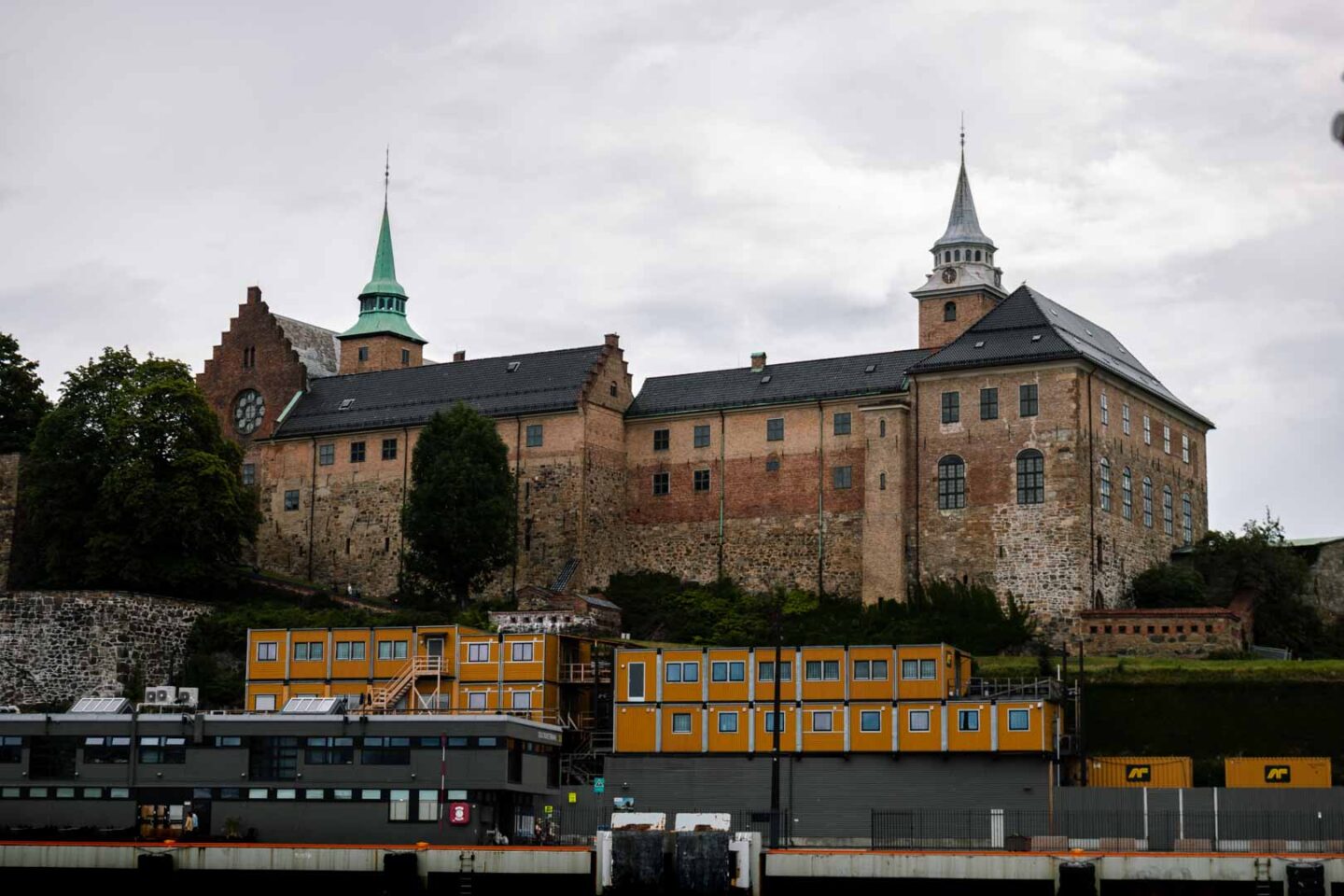
Akershus Fortress is one of the most famous landmarks in Oslo, so you definitely don’t want to miss it. Construction of this impressive castle and fortress began in 1299 during the rule of King Håkon V and it wasn’t completed until the 1300s.
Sitting along the shores at the end of the city’s headland, Akershus Fortress was once a strategic location. Today, it dominates the city skyline and welcomes thousands of visitors every year!
Visiting Akershus Fortress is probably one of the best things to do in Oslo , Norway during the summer because guided tours run every day. On a guided tour, you’ll walk around the grounds, explore the corridors, and learn everything about its history.
If you time your visit right, you might even be able to watch one of the concerts and holiday celebrations that take place too. The fortress is open from 6 am to 9 pm every day.
The Munch Museum

The next location on this Oslo itinerary is the Munch Museum , which is a 20-minute walk from Akershus Fortress. Alternatively, you can reach the museum by tram. However, you’ll only get there 5 minutes quicker!
The Munch Museum is one of the newest museums in Oslo, opening in October 2021. If you love art, it’s the perfect place to visit in the city as it’s home to the life’s work of world-famous artist Edvard Munch.
For those of you who don’t know who Munch is, he’s the man behind the Scream, which can actually be found in the National Museum. Edvard Munch died in 1944, but not before giving his possessions to the city of Oslo!
Inside the museum, you’ll find a huge collection of Munch’s work and other interesting art exhibitions. Munch Museum tickets cost £12 (160 NOK) for adults and £7.50 (100 NOK) for children.
Oslo Opera House
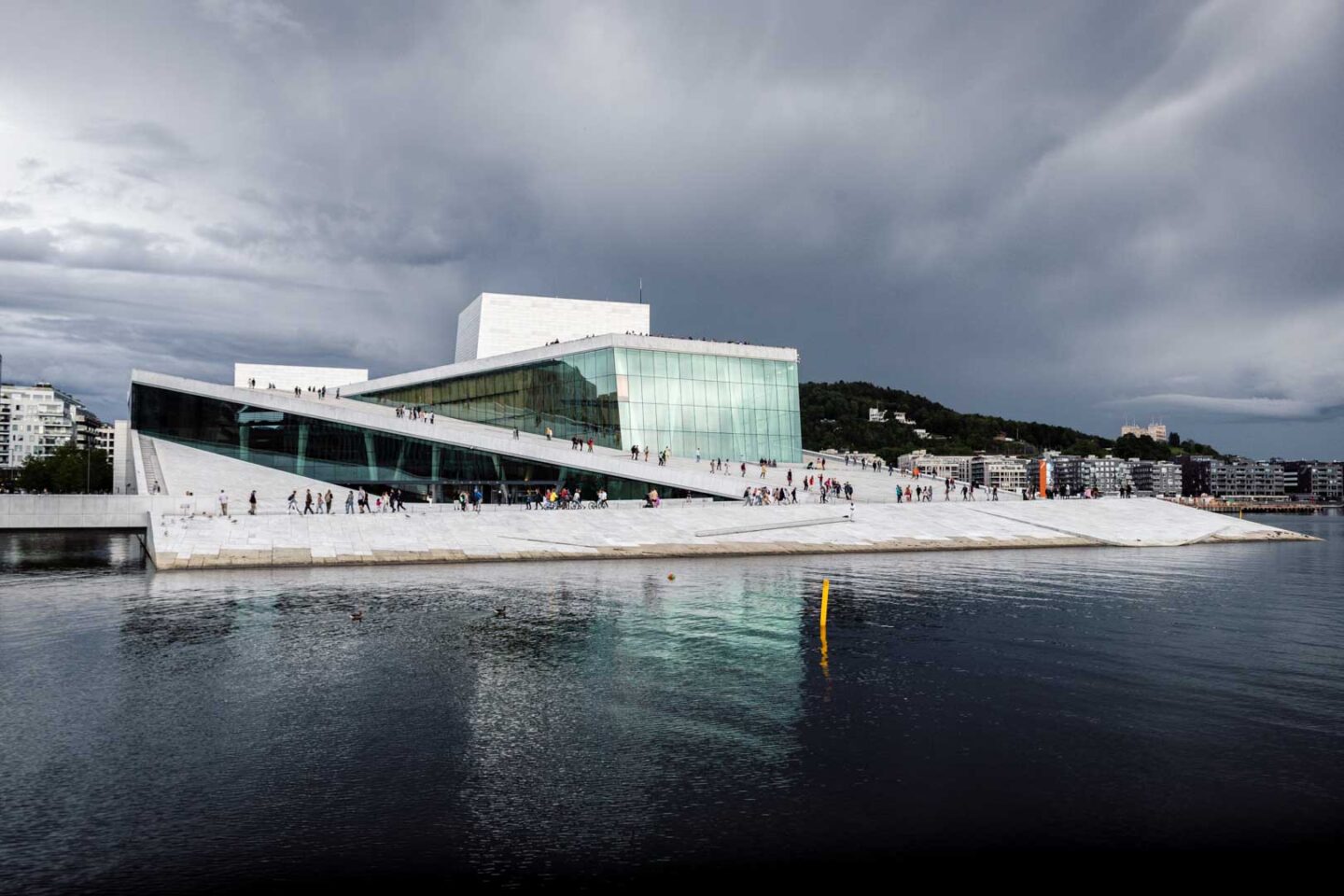
If you’re looking for the best views in the city, Oslo Opera House is well worth a visit. Of course, it’s also a great place to go if you want to watch a performance or show.
Situated in the Bjørvika neighbourhood, the Opera House is home to Norway’s National Opera and Ballet, but most tourists visit for the views from the rooftop. The 1,100-room structure features a unique angled exterior made from Italian marble and white granite.
The Opera House itself looks spectacular but the views from the roof are unparalleled! You can access the roof via a staircase that runs up both sides. Hold onto the handrail though because it can be quite slippery, especially if it’s been raining.
From the top, you can expect impressive views of the city and its wonderful architecture. Key things to look out for include the floating saunas, the fjords, and the ‘She Lies’ iceberg sculpture.
Eat at Barcode Street Food
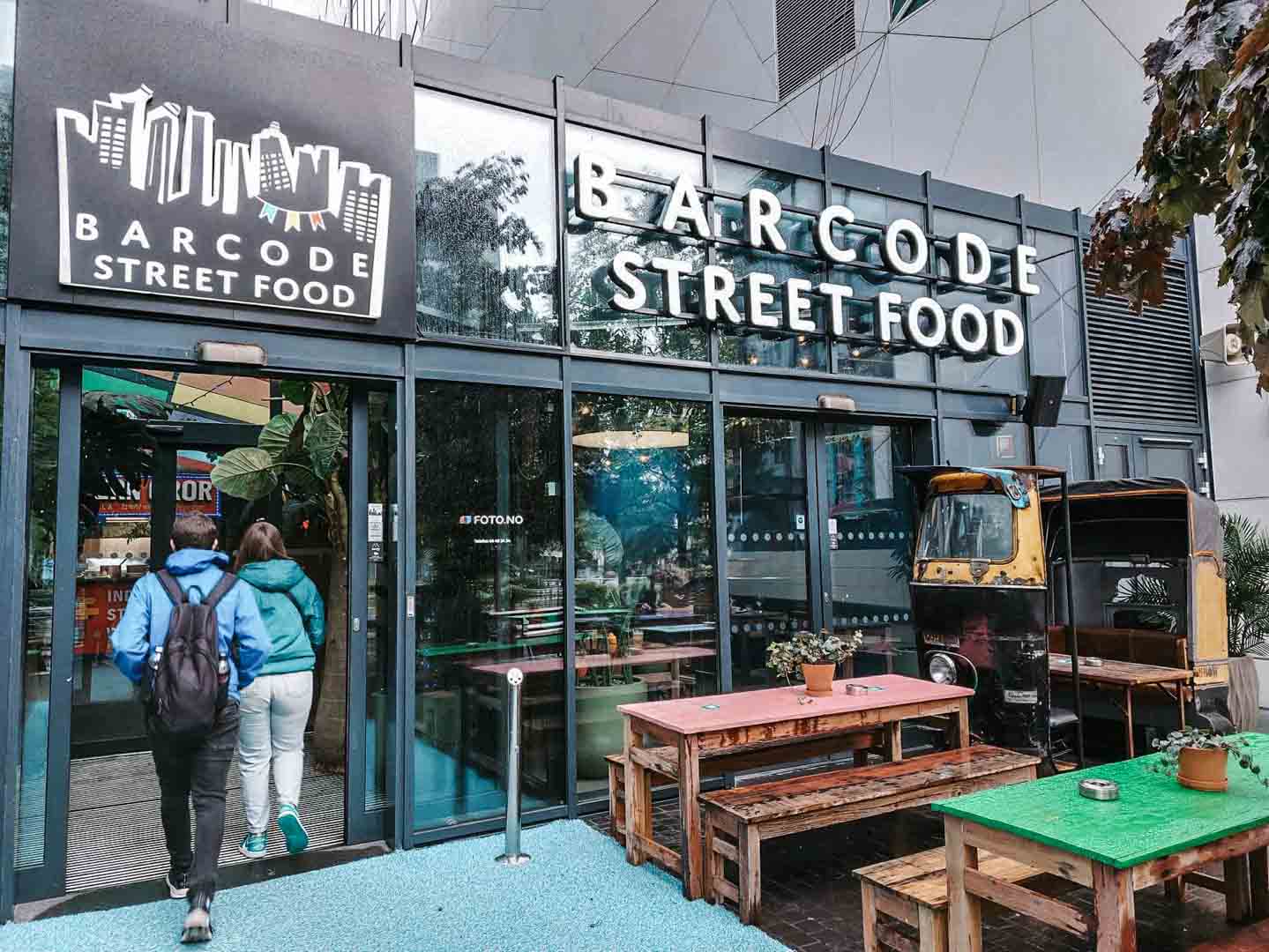
Day two of your 3 days in Oslo should end at Barcode Street Food , where you’ll find 14 stalls serving cuisines from around the world. Although Oslo Street Food was good, we enjoyed our time at Barcode even more!
This was mainly because it was cosier and offered better vibes. The food stalls here serve Mexican, Indian, Korean, Indonesian, Vegan, Norwegian food, and so on…
We ate at Dirty Vegan and it was absolutely immense. We can’t recommend it enough, especially the chicken-loaded fries!
One thing we need to mention about the street food markets in Oslo is how easy it is to order! After having a look at the different options you can simply order your food from Favrit.
The QR code at your table will take you to Favrit (which is a website). All you have to do then is place an order and pick up your food when you get a notification!
Your 3 Days in Oslo: Day Three
If you decide to stick to our Oslo itinerary, you’ll spend your last day in the city exploring the Oslofjord. While a sailing trip to the fjords allows you to see the main highlights, nothing beats exploring the region on your own!
Explore the Oslofjord

Although you can visit the Oslofjord on a tour, we also strongly recommend leaving a whole day free in your Oslo 3-day itinerary to explore the islands in more depth. We did, and it was absolutely fantastic!
The Oslofjord is made up of multiple islands, so you can’t visit them all on a two-hour tour. However, you can visit most of them if you spend the day island-hopping.
On almost every island you visit, you can expect to find picturesque hiking trails, vibrant Norwegian houses, swimming spots, and historical landmarks.
We advise picking a few islands you definitely want to see first. That way, you can see more of the best locations. Oh, and pack a picnic to enjoy by the sea too!
We visited the most popular islands, including Heggholmen, Hovedøya, Gressholmen, and Nakholmen. Highlights you shouldn’t miss include Heggholmen Lighthouse, Nakholmen village, and the monastery ruins on Hovedøya.
How to get around the Oslofjord
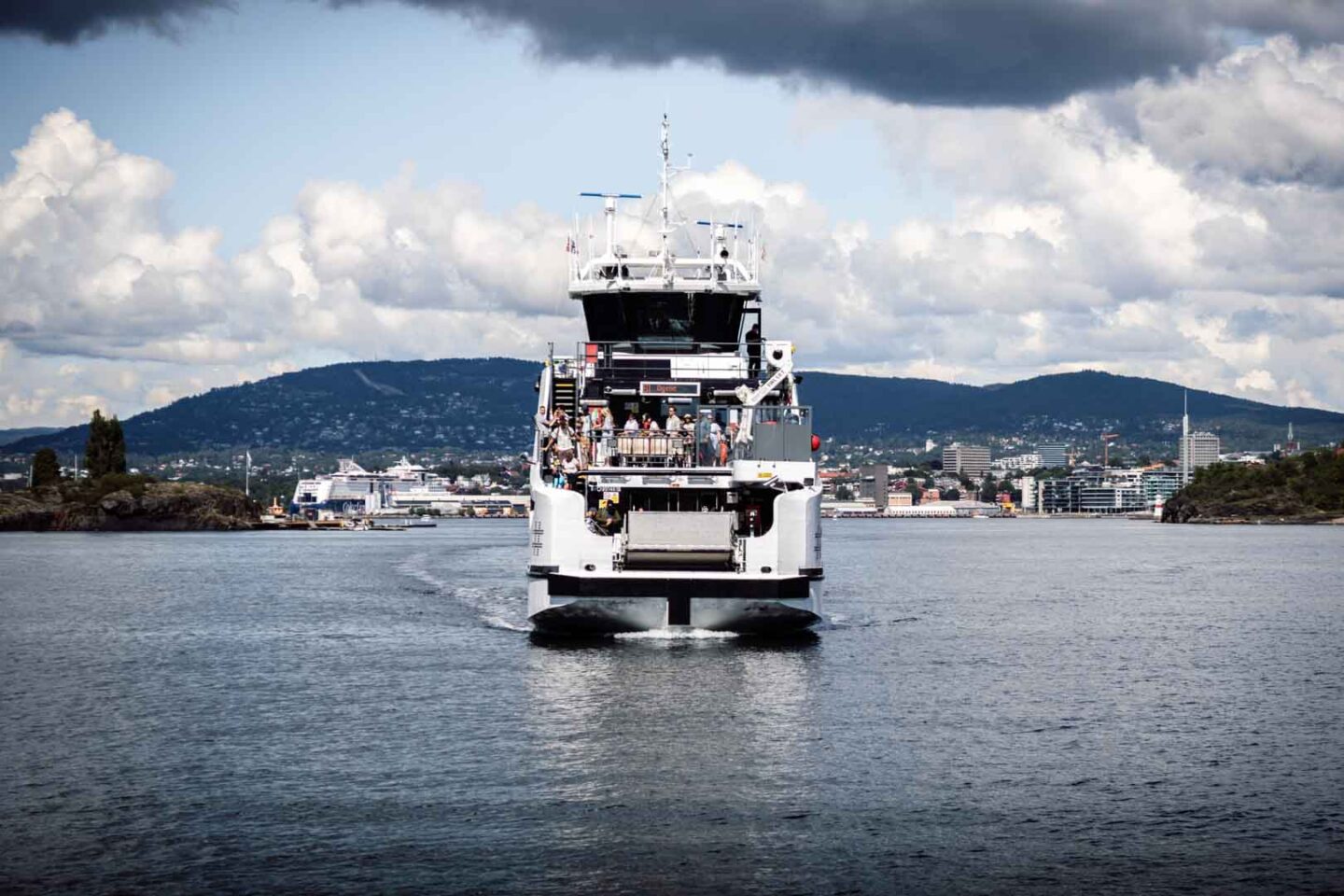
The best way to get around the Oslofjord is by using the ferries that leave Aker Brygge. For less than £9 (125 NOK), you can purchase an all-day ferry ticket from Ruter.
This ferry ticket will allow you to use any ferry service in the Oslofjord, which as you would expect, makes things super easy when it comes to hopping from island to island. We used this ferry pass all day and we never had to wait more than 10 minutes for a ferry!
We found that most ferries travel in a loop. This means you can visit each island by simply getting off the ferry, exploring, and then catching another ferry to the next island.
What’s also handy is that the Ruter app has a neat route planner and map that shows the live locations and times of every ferry in the fjords. It doesn’t get much easier than that!
Visit one of Oslo’s Pubs

After a day exploring the Oslofjord, you’ll likely want to spend the evening relaxing. Although we had a fabulous day wandering around the islands, we certainly were pooped after a full day of hiking, swimming, and sightseeing!
Luckily, there are plenty of awesome pubs in the city where you can grab a drink, listen to some live music, and spend some time reminiscing about the beauty of Oslo’s archipelago.
Here are some of the best options:
- The D ubliner Folk Pub – This quirky establishment is known for its Irish bands, fantastic atmosphere, and delicious food. Make sure you try a Guinness or two during your visit!
- Dr. Jekyll’s Pub – This awesome bar is home to one of the largest whisky selections in Oslo (over 600 bottles in fact). You’ll also find a great selection of cocktails and beers at Dr. Jekyll’s Pub.
- The Scotsman – Arguably one of the most popular pubs (and nightclubs) in Oslo, The Scotsman has a lot to offer. Whether you’re after live music, a quiz, or tasty food, this place has something for everyone.
Helpful Information for Your Oslo Itinerary
How to get to oslo.
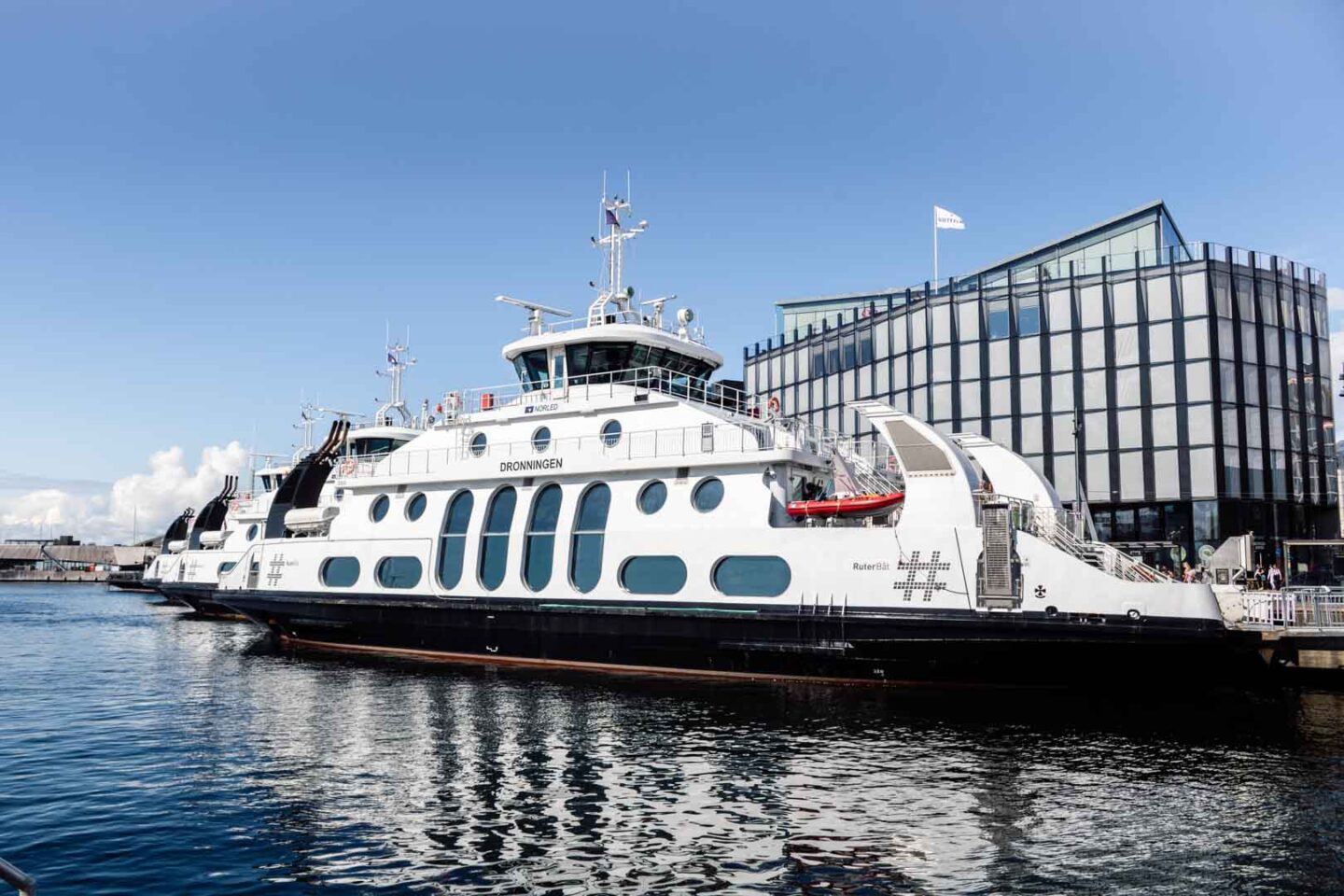
The best way to get to Oslo is by flying. There are currently two airports near the city; Oslo Airport and TORP Sandefjord Airport.
Every airport has convenient transport options such as buses, trains, and taxis. The most affordable way to reach Oslo from one of the airports is by bus!
We landed at Sandefjord Airport Torp which is around 110 km (68 miles from Oslo city centre). From there, we took the Express Bus. It cost us approximately £20 (260 NOK) per person and the journey took roughly 1.5 hours.
What’s great about this service is that it corresponds with most international flights, you can pay when you get on, and the bus stop is at the main entrance/exit.
The closest airport to the city is Oslo Airport which is located around 52 km (32 miles) from the city centre. Transport options are very similar, but you’ll get to Oslo much quicker!
How to get around Oslo
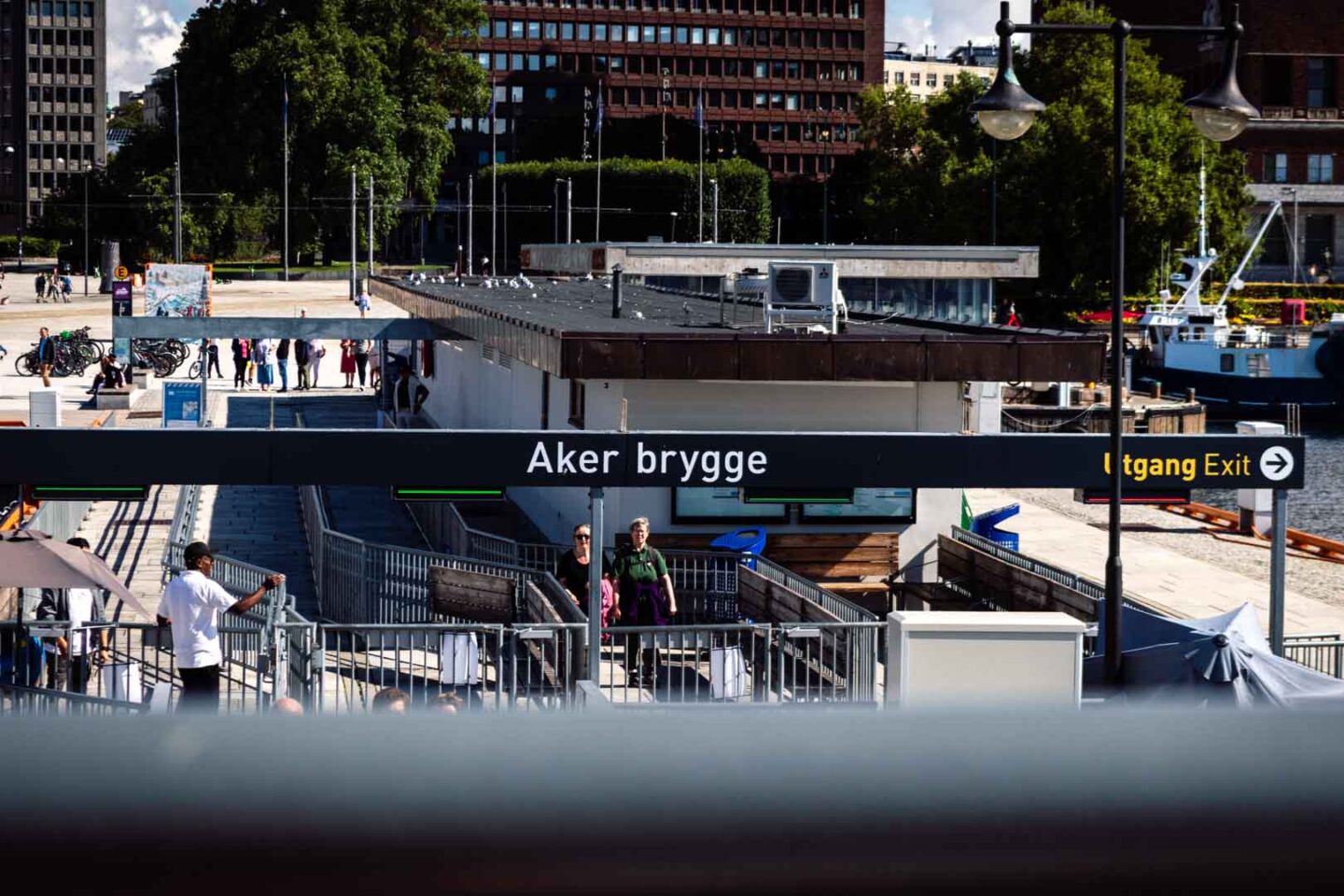
You’ll be pleased to hear that Oslo is a super easy city to get around. There’s a wide range of public transport services on offer and you can reach most of the main attractions on foot.
The quickest way to get around the city is on the metro. The metro covers most of the city and the surrounding area. The tram system is pretty fast and reliable too!
Oslo also has bus services that operate throughout the city, so that’s a good way to get around as well. However, in all honesty, we didn’t use any of them.
We had no trouble walking around the city all day every day. The only time you’ll have to use public transport is when you visit the Oslo Fjords. Then, you’ll have to jump on one of the ferries. The ferries operate regularly from Aker Brygge and travel to the most popular islands!
The best time to visit Oslo
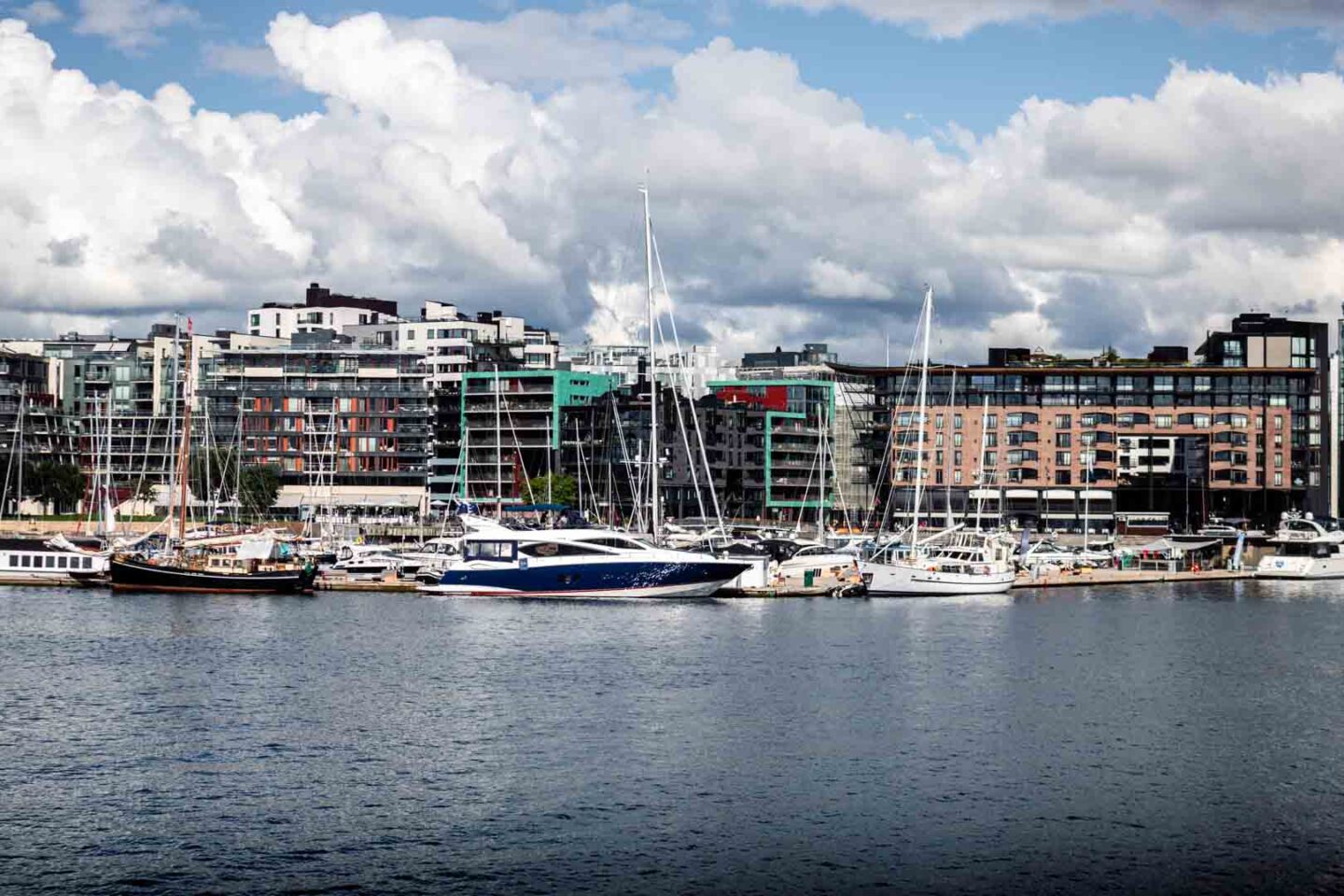
If we’re being totally honest, there isn’t one particular time that’s best to visit Oslo. That’s because there are perks to visiting the city in every season!
For example, winter in Oslo (December to March) might be cold and wet, but it can also be magical because of the snow, Christmas markets, and festive vibes.
However, in the summer (June to August) the weather is much better, so exploring the city is easier and of course, warmer.
Fewer tours are cancelled too (as there’s no ice), and you’ll even have the chance to swim in the sea. However, the summer is the busiest time of year, so you should take that into consideration.
If you plan to visit Oslo when it’s the most affordable, we recommend visiting in July because this is when hotel prices are at their lowest. The quietest months to visit Oslo are January, February, March, and April.
Exploring Oslo by tour

If you’ve only got 3 days in Oslo then you’ll want to cram in as much as possible. We tend to explore on our own, but we must admit that tours are a great way to see a lot in a short amount of time. You can also get a fantastic insight into the local area, as you’ll have an expert guide with you.
Here are some of the most popular tour options in Oslo:
- Oslo Highlights 3-Hour Bike Tour – This bike tour will see you explore the city more quickly, and you’ll get to visit plenty of landmarks including the Royal Palace and the City Hall.
- Oslo: Grand City Tour and Fjord Cruise – This 7.5-hour tour includes a bus tour of the city, a sightseeing cruise on the Oslofjord, museum entrance fees, and a guided walking tour.
- Oslo: Hop-On Hop-Off Sightseeing Bus Ticket – You can opt for a 24-hour or 48-hour pass and you’ll see a ton of sights along the way while benefiting from an audio guide.
Where to Stay in Oslo
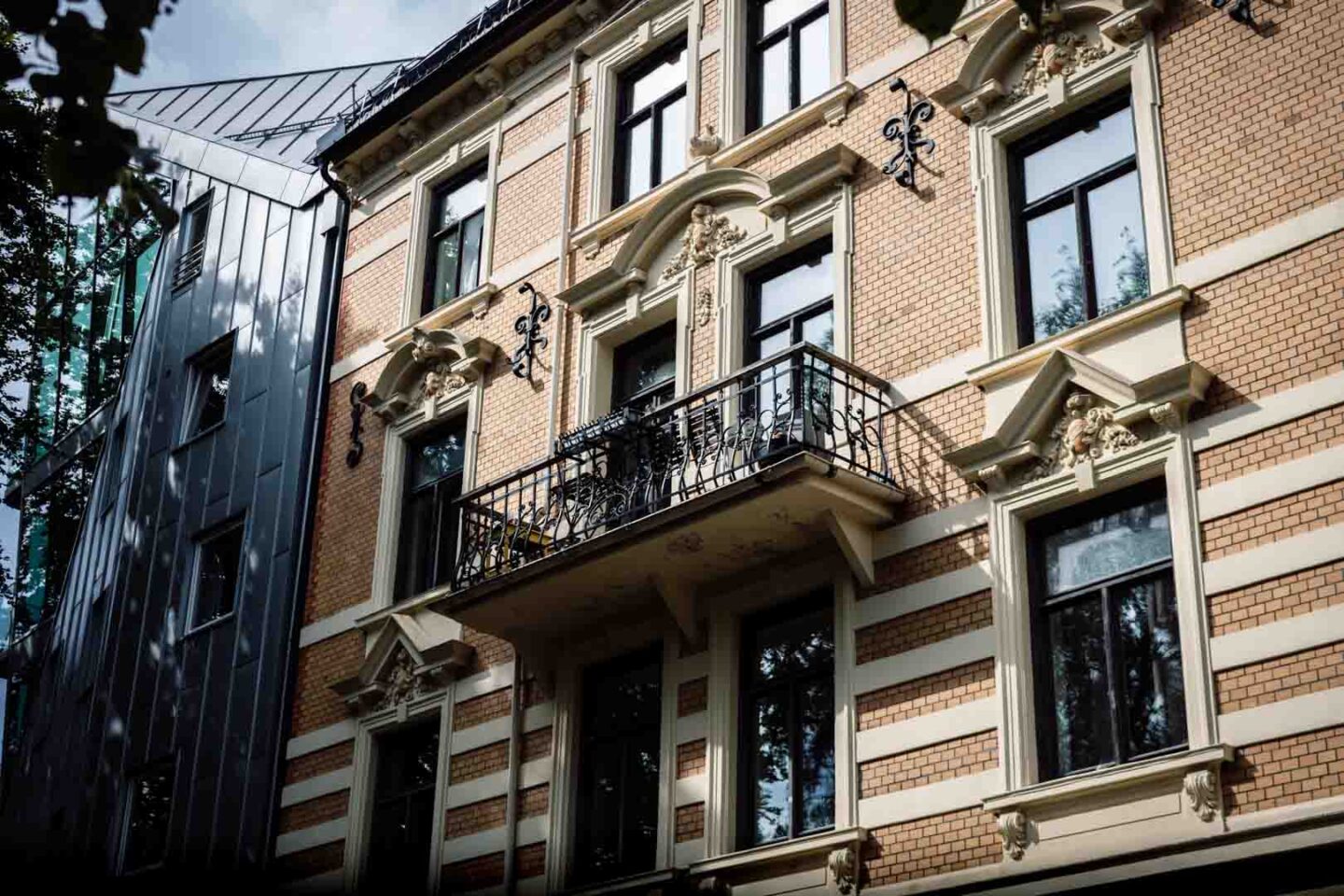
Now it’s important to note that Oslo is very expensive when it comes to accommodation. That’s why we opted for an Airbnb (which we’ll link below). However, there are some fantastic hostels and hotels in the city. Just be prepared to part with some serious cash!
Here are some of the best accommodation options:
Budget: Citybox Oslo
Citybox Oslo is a brilliant budget-friendly option that’s less than 300 metres (984 feet) away from Oslo Central Station. The rooms are great, and they come with all the amenities you need to have an enjoyable stay.
All the rooms at Citybox Oslo have a private bathroom, shower, an armchair, and WiFi. There are also simple amenities such as a microwave and vending machines, which you can use to save money on food and drinks.
Mid-range: Hotell Bondeheimen
If you’re looking for somewhere in the mid-range, you can’t go wrong with Hotell Bondeheimen. This hotel has spacious rooms that feature televisions, double beds, tables, and chairs. There’s even a restaurant on-site that serves traditional Norwegian food.
This hotel’s location makes it a top choice. It’s less than 100 metres (328 feet) away from the National Gallery and Karl Johans Gate, and only 1.3 km (0.8 miles) away from the Opera House.
Luxury: Hotel Continental
Those of you seeking a more luxurious experience should check out Hotel Continental, which is 150 metres (491 feet) away from Oslo’s main street. This 5-star hotel features stunning rooms equipped with a minibar, a safe, a TV, and Wi-Fi.
Hotel Continental also has a 24-hour gym and a fine dining restaurant called Restaurant Eik Annen Etage. The hotel is even home to the historic Theatercaféen which has been open for more than 100 years.
Airbnb: Urban Apartments Grünerløkka Loft
Urban Apartments in Grünerløkka is where we stayed during our trip to Oslo and we can’t recommend it enough. This two-bedroom apartment is super clean, modern, spacious, and to be honest, quite beautiful.
Situated in the loft of a fantastic apartment building, this accommodation option is near lots of popular attractions, shops, cafes, and restaurants too, which is always a bonus. For Oslo, we found the loft very affordable!
Frequently Asked Questions about Oslo
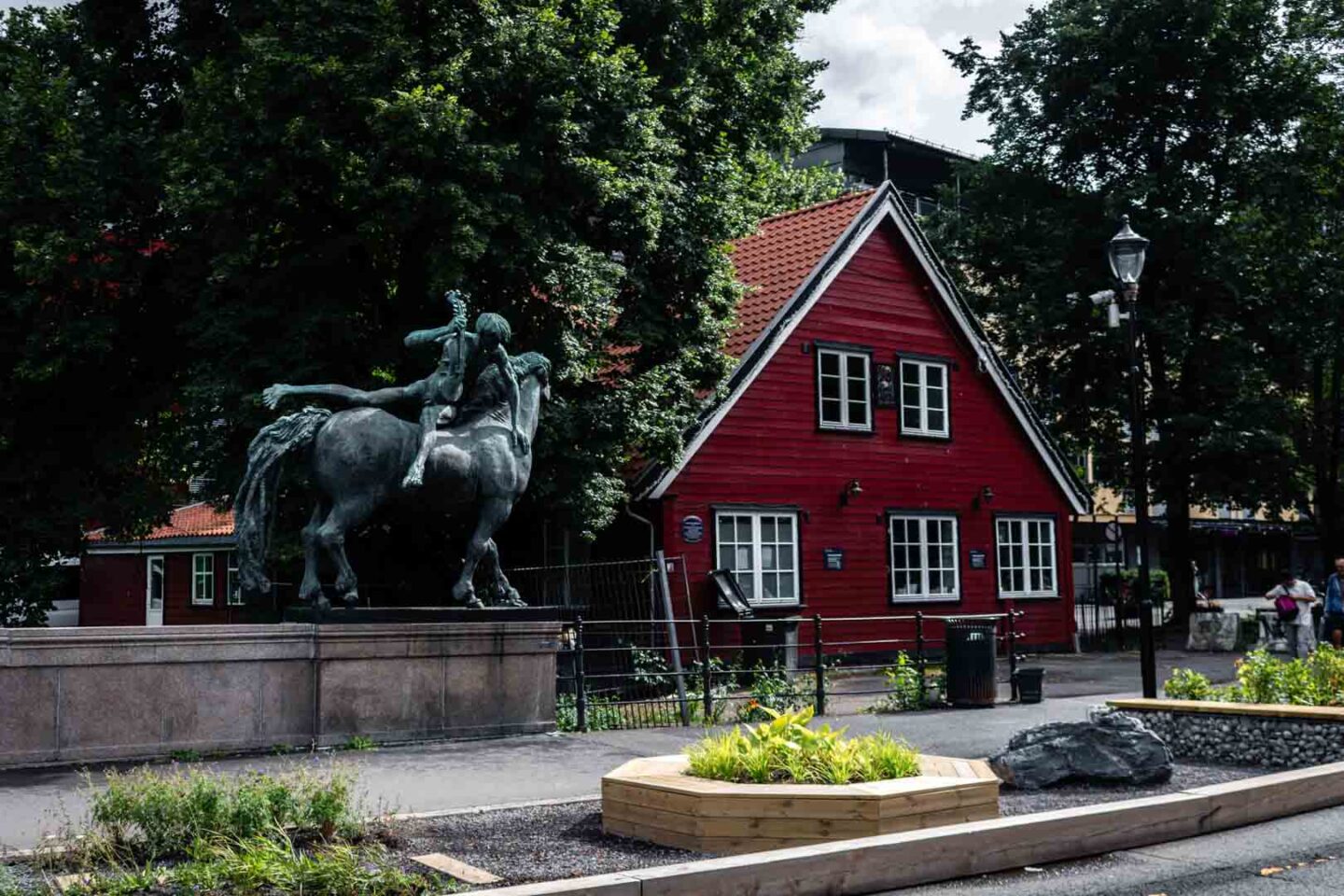
How many days do I need in Oslo?
If you want to see everything Oslo has to offer, you need to spend 2 to 3 days in the city. 2 days gives you enough time to see the major sites, but we recommend planning for 3 days.
This will give you extra time to visit the Oslofjord, which you need at least half a day to explore. You’d also have time to go on a day trip!
What is a good budget for Oslo?
We recommend a budget of at least £80-£120 per person per day for Oslo. Although you may get by on less than this, we feel like that would be pushing it as accommodation is costly in Oslo.
Of course, if you’re travelling as a couple or in a group, then you can easily split costs. However, for those travelling on their own, just be aware, that even hostels can be on the pricey side!
Is Oslo very expensive?
Yes, Oslo is a very expensive city, however, that doesn’t mean you can’t still stick to a budget. While Oslo might be one of the most expensive cities in Europe, if not the World, you can cut down your spending by choosing more affordable accommodation, cutting transport costs, and choosing cheaper places to eat.
We kept our costs down by eating at food markets every night instead of in restaurants, which are very overpriced, and by staying in an Airbnb rather than a hotel.
Is Oslo a walkable city?
Yes, absolutely! Oslo is certainly a walkable city, so don’t worry about spending lots of money on public transport. Oslo does have metro and tram services, but you don’t have to use them.
Most attractions are relatively close together or just a short walk apart. The only transport we paid for in Oslo was the bus ride from the airport to the city and the ferry for the Oslofjord. We easily walked everywhere else!
Where to Go After Oslo

After spending 3 days in Oslo, you have a few different options when it comes to onward travel, so why don’t you continue your trip somewhere else?
When we visited the city, we didn’t have enough time to carry on travelling after Oslo. However, we found lots of places we wanted to go!
One onward travel option that stood out to us was a ferry ride to Copenhagen. DFDS operates an affordable ferry crossing that takes passengers from Oslo all the way to Copenhagen in Denmark for as little as £27.
You could also fly to other popular destinations in Scandinavia such as Stockholm in Sweden. Alternatively, you could stay in Norway and head to places like Bergen or the Lofoten Islands.
You can reach Bergen and the Lofoten Islands from Oslo via a plane and ferry! A cheap way to reach Lofoten is by flying into Bodø and jumping on a ferry to Moskenes.
Final Thoughts on this Oslo Itinerary
There’s so much to love about Norwegian city breaks and Oslo is one of the best destinations you can visit. Although this place is considered one of the most expensive cities in Europe, it’s possible to spend 3 days in Oslo without breaking the bank.
This city is easily one of our favourite destinations in the world, and we’re sure it will quickly become one of yours too. Now we’ve shown you our Oslo itinerary, all you have to do is book your flights, choose your accommodation, and pack your bags!
If you have further questions about your 3 days in Oslo then don’t hesitate to contact us via Instagram, Facebook, or in the comments below!
Here are some other guides that you may find helpful:
- One Day In Stockholm: How To Spend 24 Hours In The City
- Free Things To Do Stockholm, Sweden
- 3 Days In Stockholm: The Ultimate Itinerary
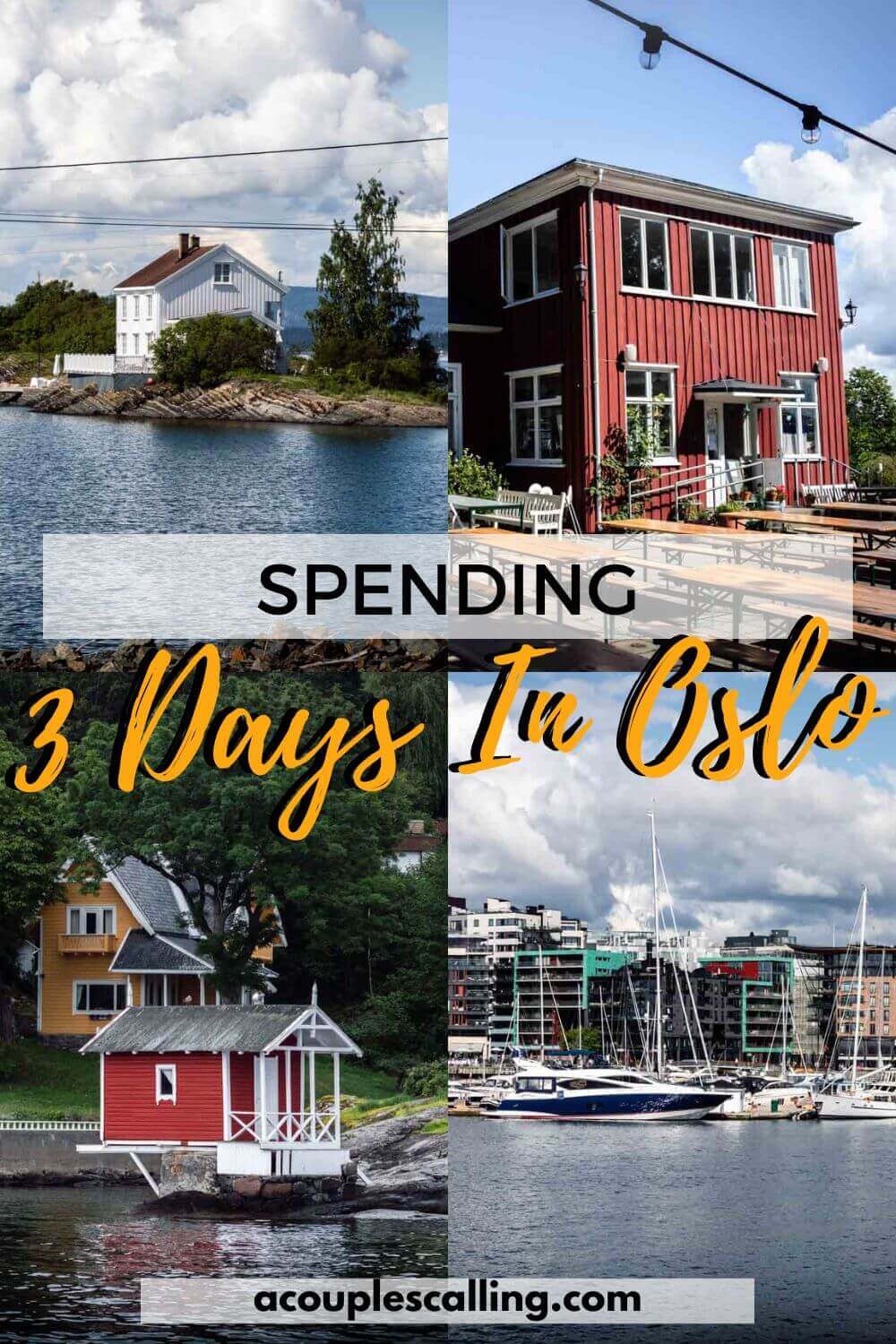
Jack Bolton
I’m one half of Acouplescalling. I'm passionate about all things travel and photography and I love sharing my experiences with others. I've seen a lot of the world already and I want to help as many people as I can do the same thing!
Similar Posts
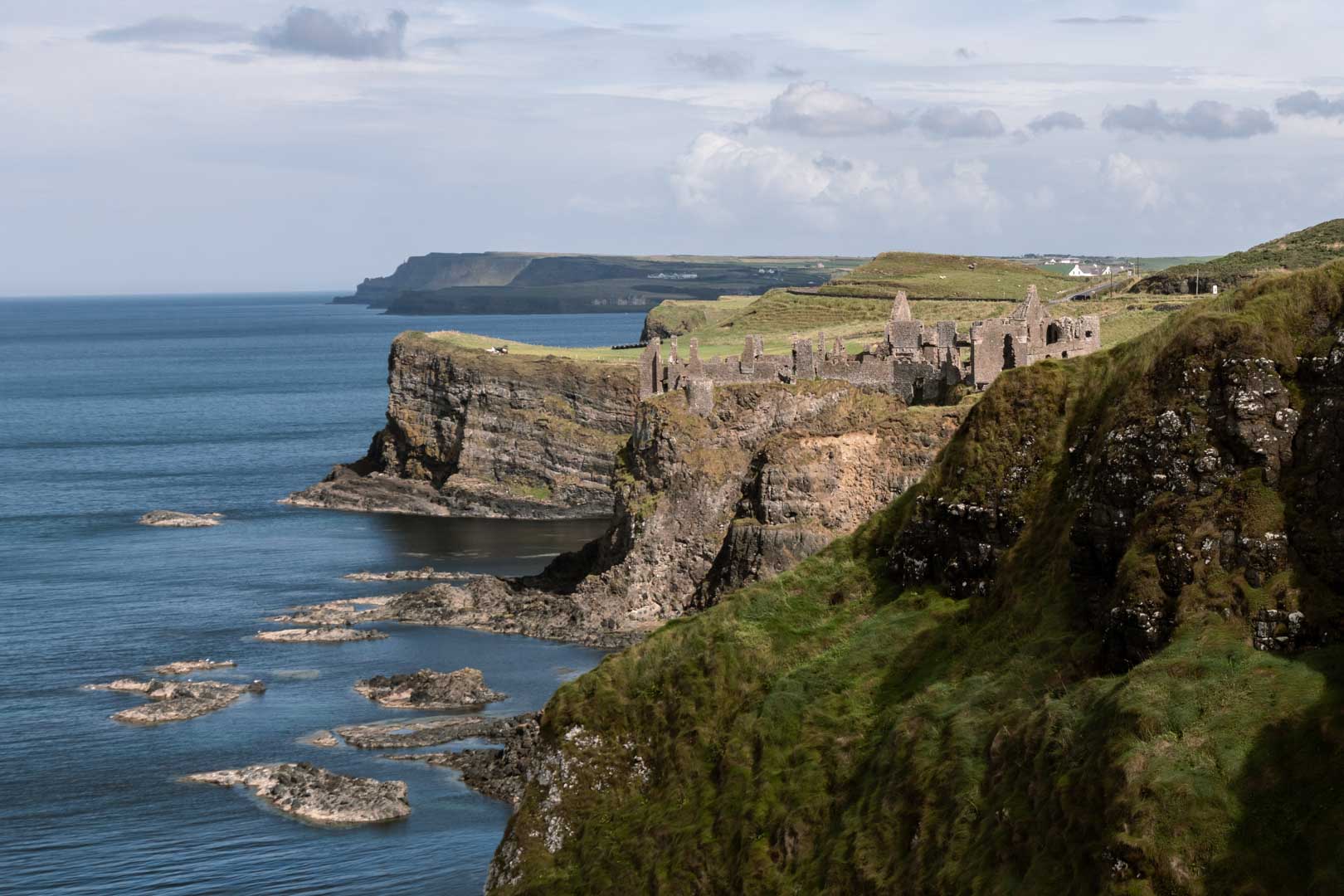
Causeway Coastal Route Itinerary (30 Stops For The Ultimate Trip)
Last Updated: December 19 2023 There’s no denying that Ireland is a beautiful country, but the question is which…
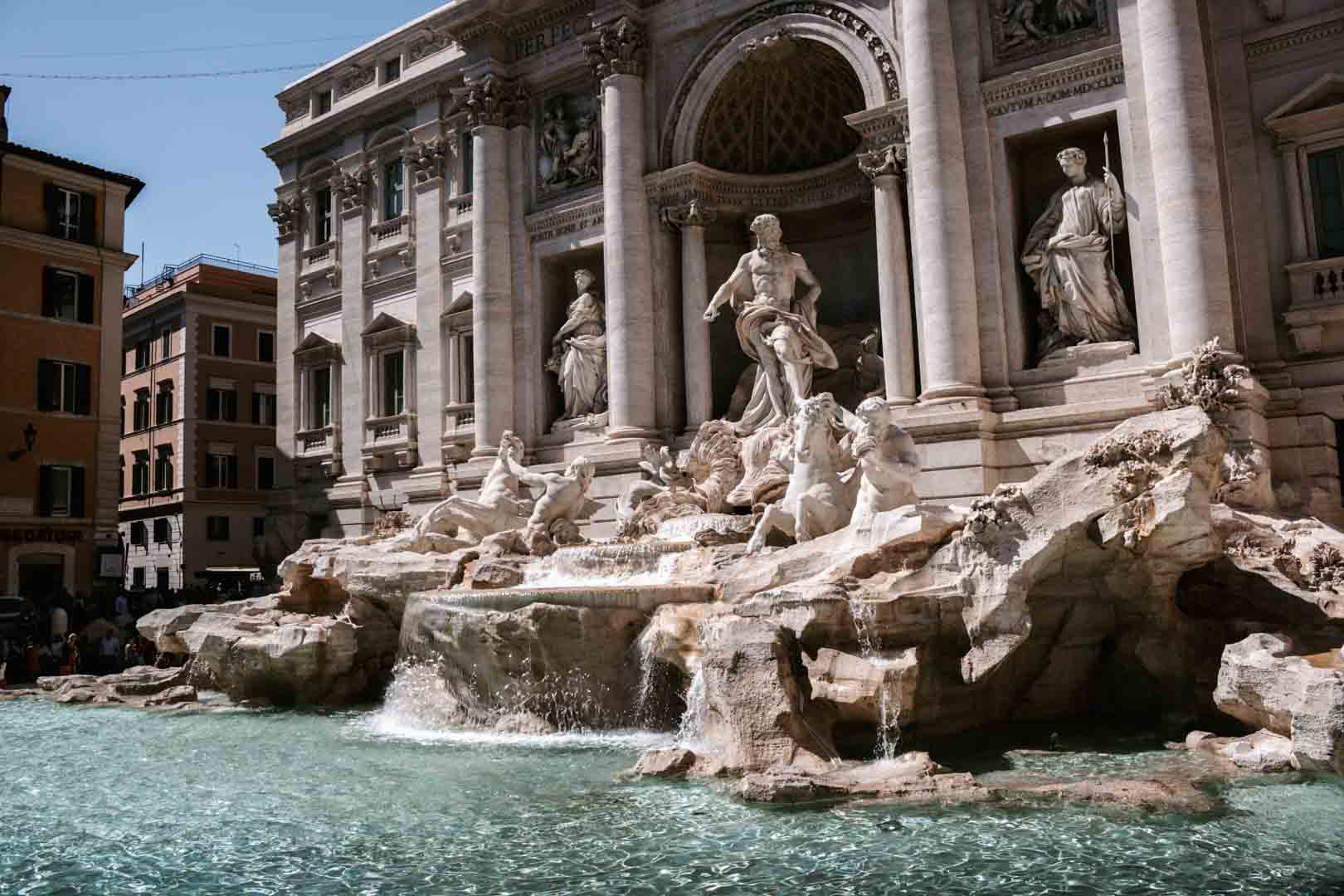
The 19 Best Photo Spots In Rome, Italy
Last Updated: August 31 2024 If you’re a keen photographer, there’s a good chance Rome is high on your…
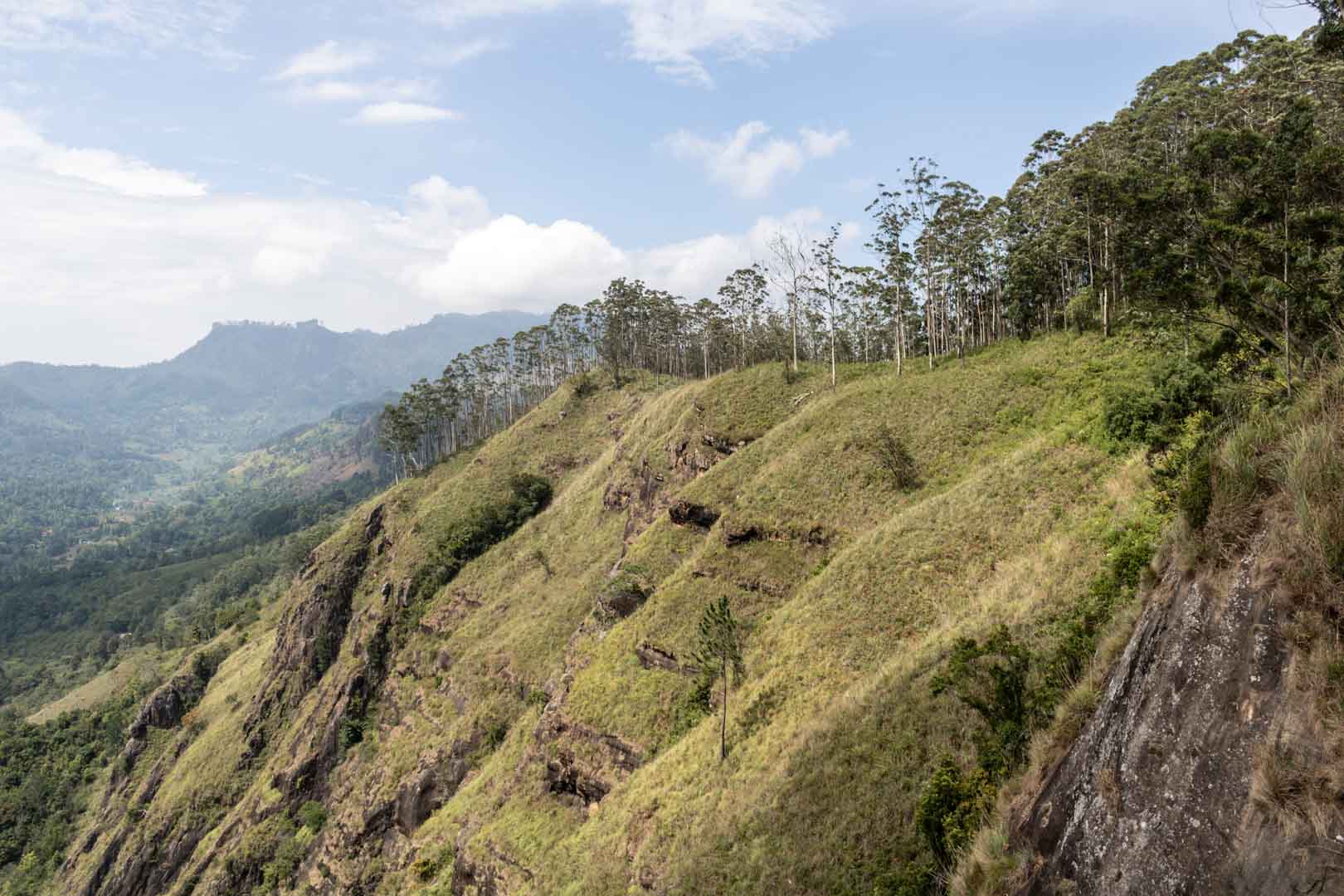
The 22 Best Things To Do In Ella, Sri Lanka
Last Updated: August 31 2024 Sri Lanka is famous for its exotic beaches, diverse wildlife, and rich culture. However,…

Chuncho Lodge Review: Where To Stay In Tambopata National Reserve
Last Updated: August 31 2024 In our opinion, no trip to Peru is complete without visiting the Amazon Jungle,…

A Months Budget Travel Breakdown For Bali – It doesn’t Have To Be Expensive!
Last Updated: August 16 2019 Bali is a gorgeous part of Indonesia and is a must visit for any…
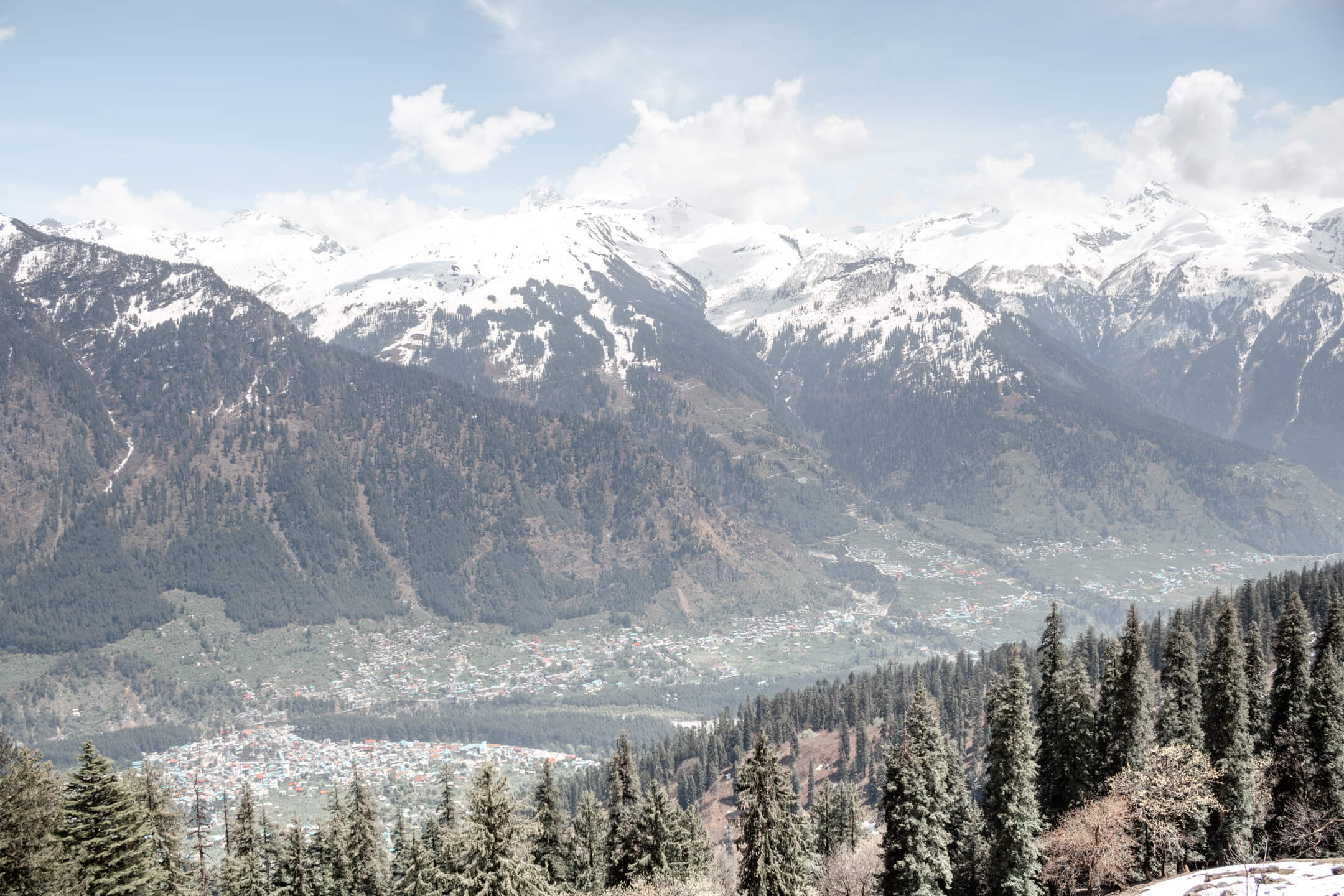
10 Photos That Will Make You Want To Visit Manali
Last Updated: December 10 2020 Manali quickly became our most enjoyed destination in India and the one we would…

Things To Do In Norway In July (Norway Travel Guide For July)
July is the peak of summer for Norway, so this is a great time to visit the fjords, mountains and forests of this counrty. This is without a doubt the most popular months for tourism in Norway, both by Norwegians who want to explore their own country, as well as foreigners who want to visit Norway. This means that there’s a lot of people around in most places, so it’s a bit difficult to find accommodation unless you book it well in advance.
The big selling point of visiting Norway in July is the incredible weather. While there will be some rainy days, you have a high probability of getting quite a few warm, sunny days in July, and the temperature will be nice and comfortable at 20 °C or more.
So, let’s take a closer look at what you can do in Norway in July and what to expect when visiting at this time.

July is a great hiking season
Many people consider July to be the very best month for hiking the mountains in Norway , and you are in for a treat if you decide to go hiking during July. The chance if rain is the lowest for the summer season, the sun is up for most of the day (even for the entire day in the northern part of Norway), and there is obviously no snow cover on most mountain trails.
Pretty much all the hiking trails are open and operational at this time, so it’s a great time to visit Preikestolen, Trolltunga or just any other hike in Norway.
The warm weather and strong sunlight makes it more important to bring sunscreen than warm clothes, but keep in mind that it can get very windy in the Norwegian mountains – even in the middle of July! So bring a jacket just in case.

Hitting the Norwegian beaches in July
The warm July weather heats up both freshwater lakes as well as the ocean, and July is a great time to go swimming in Norway . You can take a dip in one of the thousands of lakes, in the fjords, in the ocean by a beach, or in one of the many rivers and streams in the forest.
July is also the time when the Norwegian beaches gets crowded . The long summer days attracts thousands of Norwegians and tourists to the many beaches in the country, and you will find that chilling on the beach during the summer days to be a popular choice.
So make sure to spend a few hours tanning at one of Norway’s many beaches if you are visiting in July and want a break from all the hiking.
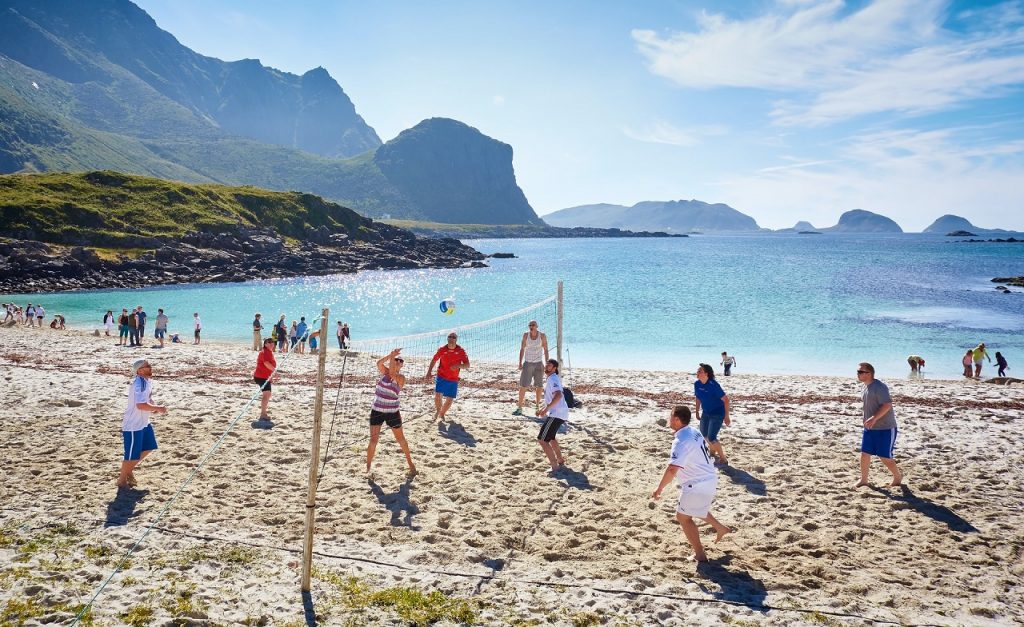
Experience the midnight sun in Northern Norway
The northern part of Norway has midnight sun all July, and the sun will never set in these regions. Instead, the sun will go low in the sky, stay there for a few hours, then begin to rise again. During the peak of night during the midnight sun, you get incredible sunsets where most of the sky turns red . It’s an incredible sight, and a very unique experience!
We do not get midnight sun in the southern half of Norway, so be prepared to visit Bodø or a city further north to experience it.
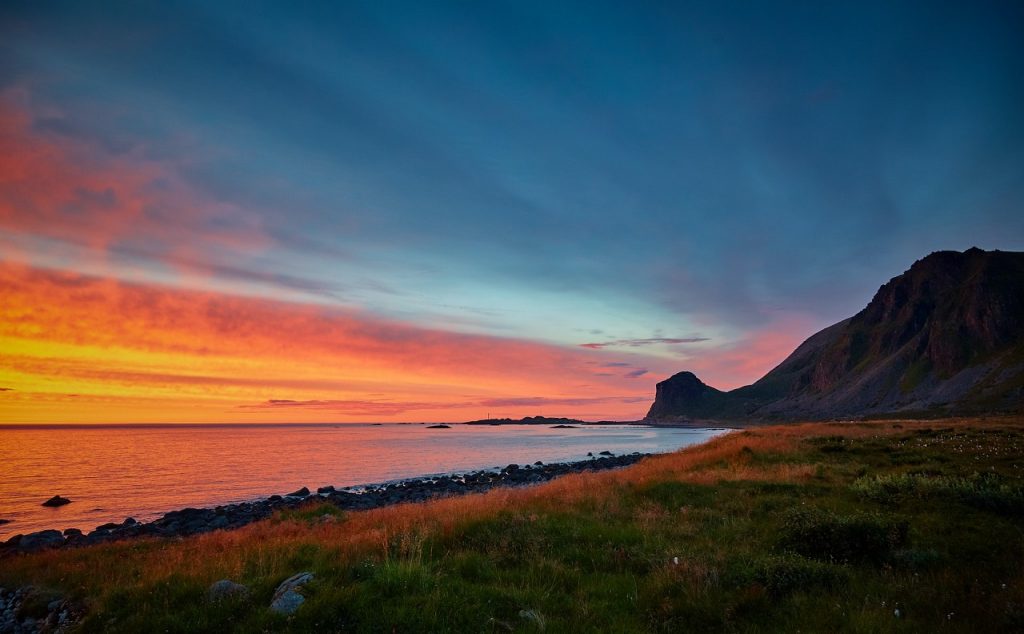
Norwegians usually have a joint holiday in July
July is the month when the joint summer holiday is in place. This is a 3 week period where most of the Norwegian workers get their summer vacation , so it will be absolutely crowding with people at this time. The exact date changes from year to year, but it’s usually in the the middle of July to the first week of August.
There are some pros and cons to visiting Norway during the joint holiday. The pro is that most Norwegians are on vacation, so we are pretty happy and more friendly towards strangers than what we usually are. It’s a great time for social tourists who want to be chatting with the otherwise cold Norwegians .
The downsides to visiting during the joint holiday is that some specialty places are closed. You won’t find that any stores are closed, but it will take much longer to get an appointment at a bank, the tax office (Skatteetaten) or any government official. This is mostly a problem for people who are moving to Norway or Norwegians, but you might find that it can cause some issues for tourists as well.
The other downside is that everything is super crowded. Pretty much 70 % of all Norwegians will use July as their main holiday period, so places like zoos , theme parks, tourist attractions and pretty much anywhere else will be crowded. Expect long queues at popular restaurants or even at food trucks, because everyone is out and about.

The July weather in Norway
The July weather in Norway is as good as it gets, and it’s not uncommon to see over 20 sunny days during July in a good year. That said, it’s still Norway, so there will always be a chance of rainfall or just cloudy weather.
On sunny days, expect temperatures in the range between 20 to 25 °C during the day, and 10 to 13 °C during the night . Some nights will be warmer, and there will usually be a few nights with 18 °C during July.
And as with the rest of the year, the further north you get, the lower the average temperature will be. That said, most of Norway has a July temperature of 20 °C or more during July.
When it rains in July, it really pours down . This can be a bit overwhelming if you are outside, and we have seen more and more cases of flash floods in the last few years. So make sure to keep an eye out on the weather forecast before leaving for a long hike. It can get pretty difficult to hike in heavy rainfall.

Visit a “summer city” in Norway
Norway has plenty of “summer cities” that really flourish during the summer season, and has its peak in July. This is when these small cities turn into super crowded and cozy cities that is bustling with life. It’s really something special to walk the narrow streets of these cities in the middle of July when there are people all around, enjoying the sun and eating ice cream.
Some of the most popular summer cities in Norway are Kristiansand, Arendal, Grimstad, Risør, Stavern and Kragerø . All of these cities will have thousands of tourists during the summer season, and there will be plenty of attractions and entertainment opportunities for anyone who visits. If these summer cities by the ocean are not enough in themselves, be ready for concerts, festivals, food trucks and other fun things that makes the visit even better.

July is a perfect time to visit Lofoten
Many people consider July to be the best time to visit Lofoten , so if you want to see Lofoten from its best side, consider booking a trip in July. This is when the water is warm enough that you can comfortably swim at the incredible beaches on the island archipelago, and the hot sun makes it nice to just lie and sunbathe after you are done with your swim.
There’s also few rain days and no snow cover in July, so it’s a prefect time to tackle on the amazing hiking trails in Lofoten . And let’s not forget that there’s midnight sun as well!
The only big downside is that Lofoten is super crowded in July, so be prepared to share this natural wonder with a lot of other tourists. The municipalities have also recently introduced a wild camping ban , so you can no longer camp on or close to the beaches. They are also considering to implement a tourism tax , but that has yet to take effect.
But despite all this, July is a great time to visit Lofoten , and I urge everyone to experience the lazy summer nights in Lofoten at least once in their lives!
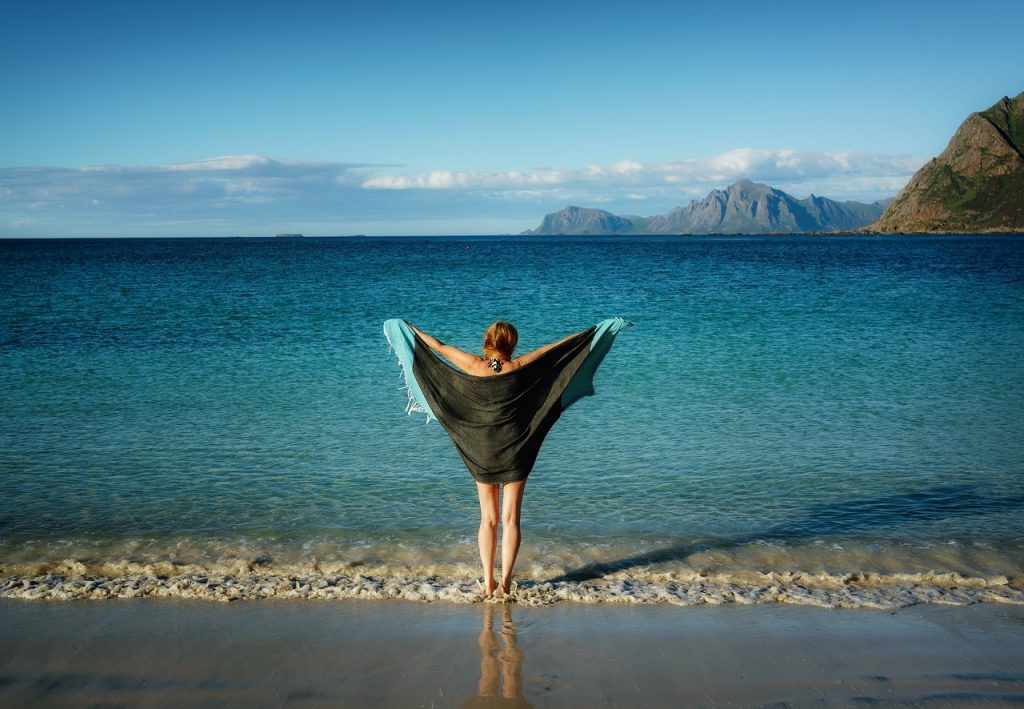
Finding accommodation in Norway in July
Since July is the most popular month for tourism in Norway, expect to plan your visit ahead of time. Many hotels are fully booked several months in advance for stays in July , and this is especially true to hotels in popular tourist areas. You won’t have an easy time finding an available room in Odda, Lofoten, Vesterålen or any place like that in July if you just drop by.
The other side of this story is that most hotels, AirBNBs and other places that rent out rooms tend to have higher prices in July. Norway is pretty expensive to begin with, and it’s even more expensive in July. It might not make that much of a difference to some, but it’s worth keeping in mind that finding a place to sleep is going to be more expensive and more difficult.
July is probably the best months for wild camping , so if you want a free place to stay, consider bringing a tent and put it up in the forest . This might not be for everyone, but it’s absolutely a viable option if you are comfortable spending your nights at a campsite.
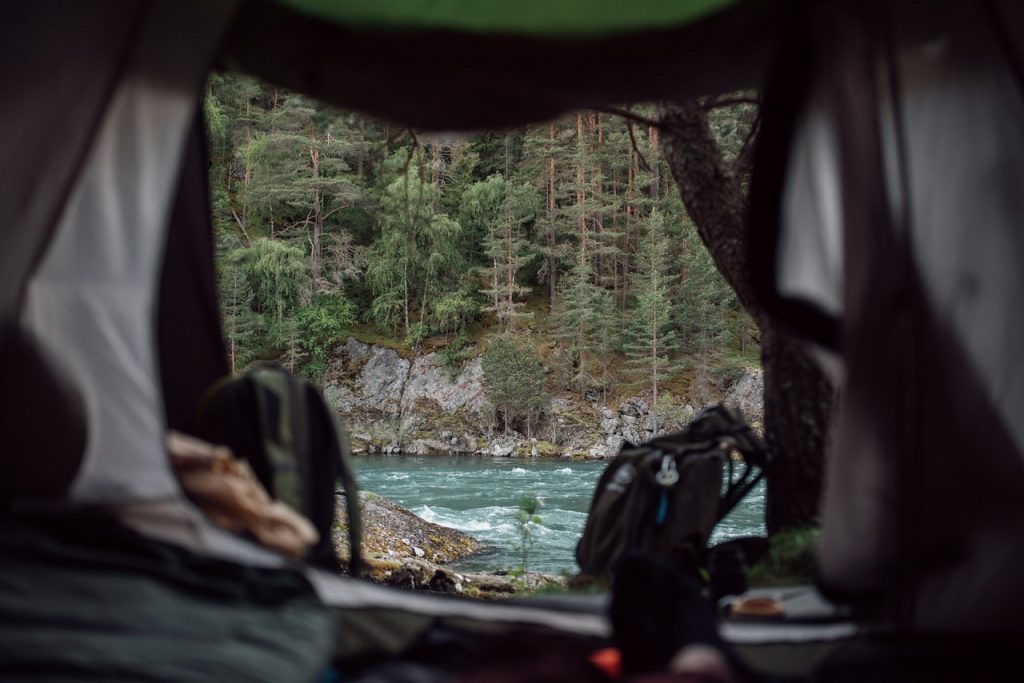
Norway monthly travel guides
This is far from the only monthly guide to Norway we have in store, so check out the other months below if you are interested in visiting Norway in the future.
- Norway in January (Coming soon).
- Norway in February (Coming soon).
- Norway in March (Coming soon).
- Norway in April (Coming soon).
- Norway in May .
- Norway in June .
- Norway in July .
- Norway in August .
- Norway in September .
- Norway in October .
- Norway in November .
- Norway in December .
Leave a Comment Cancel reply
Save my name, email, and website in this browser for the next time I comment.
- Norwegian Fjords
- Northern Norway
- Eastern Norway
- Itineraries & Inspirations
- Plan Your Trip
Oslo Christmas Markets: Things to Do & Practical Guide
The Oslo Christmas Markets bring the city to life in the dead of winter, making it a must-see attraction for families , locals and tourists alike. If you are thinking of visiting Oslo in December and wondering if the city has any Christmas markets , where they are located and when they are open, this practical guide will provide you with all the information and tips you need, brought to you by the locals !
Christmas in Norway is a truly special occasion, with a magical atmosphere. Long nights, snowy landscapes, and cold days create everything you’d imagine for a perfect Christmas setting. Even though Oslo is a big city and may lose a bit of charm and poetry, this is largely compensated by the fact that it is the most vibrant city in Norway , offering a wide choice of shops, restaurants, museums, a cosmopolitan atmosphere, and plenty of things to do.
So, if you’re gearing up for a thrilling winter escapade in Norway , prepare to immerse yourself in the enchanting ambiance of the winter season. Seek out the hidden gems , the serene spots away from the tourist throngs, and bask in the awe-inspiring beauty of the natural landscapes . And, to truly savor the essence of the season, make sure to include a visit to the Oslo Christmas Markets in your itinerary. It’s undoubtedly the ultimate destination for procuring traditional souvenirs, artisanal crafts, delectable biscuits, sweet treats, and other delightful local delicacies.
What you will find in this guide to the Oslo Christmas Markets:
Oslo Christmas Markets: A Practical Guide
You may be wondering if Oslo has Christmas Markets , and the answer is not so obvious. This seems to be a long-standing tradition in Central Europe, but less rooted in Scandinavia , where usually the Christmas markets tradition has had more modest and less blatant dimensions. However, Oslo has a few Christmas Markets scattered throughout the city centre, as well as others scattered in the surrounding region, which is a good excuse to take a car and explore the surroundings.
The Oslo Christmas Markets are concentrated in the Sentrum and Gamle Oslo neighborhoods, near the central station, alongside Karl Johans Gate , which is the city’s primary shopping street, but the Christmas events are scattered throughout the city center, extending into the major parks citizens. But the Christmas atmosphere is almost everywhere, especially in the city’s cozy cafés and restaurants.
Jul i Vinterland: The Best Oslo Christmas Market
Nestled in the heart of Oslo, the Christmas Market at Spikersuppa along Karl Johan Street – known as “ Jul i Vinterland ” – stands as the crowning jewel among the city’s festive celebrations. This enchanting market is more than just a traditional gathering of wooden stalls, it’s a captivating winter wonderland that transforms the main shopping street into a joyful amusement park.
As you step into Jul i Vinterland , you’ll be transported into a world of Christmas enchantment. Explore the charming stalls, each offering an array of delights, from gourmet treats to beloved traditional sweets like gingerbread and pepperkaker biscuits. Handmade gifts and decorations await your discovery, ensuring that you find the perfect memento of this magical season.
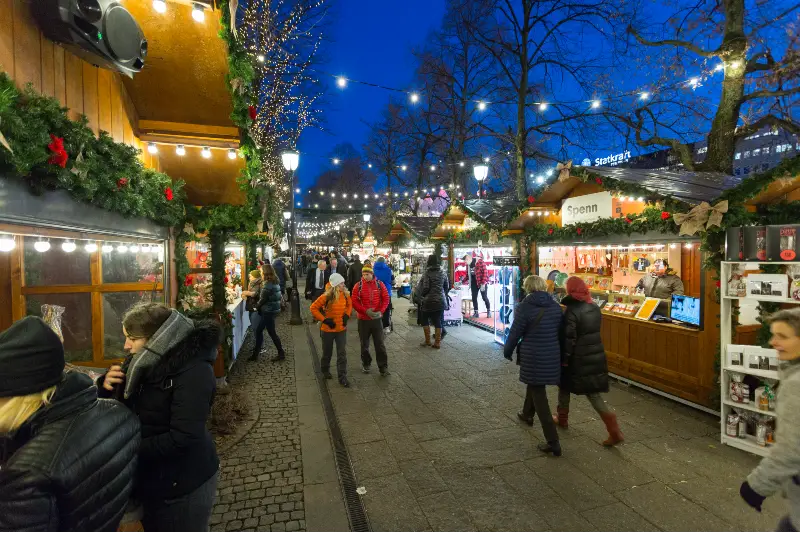
Walking through Jul i Vinterland , you’ll be greeted by a symphony of sounds and a tapestry of colors that ignite the senses. The crisp winter air is filled with the scent of roasted chestnuts and mulled wine, inviting you to warm your hands and hearts. Carolers serenade visitors with traditional Norwegian Christmas songs , adding a melodious layer to the festive atmosphere.
Embrace the cold Norwegian winter by savoring local cured meats and wrapping yourself in cozy Norwegian sweaters, keeping you warm as you wander through the market’s festive offerings. For those with a sweet tooth, be sure to try the warm, fluffy lussekatter (saffron buns) and krumkake (thin waffle cookies) that are a beloved part of Norwegian Christmas cuisine. And let’s not forget the gingerbread – it’s not just for making houses but also a canvas for edible art. Jul i Vinterland has something for everyone, especially the little ones. Children can get creative at gingerbread workshops , where they decorate their cookies with colorful icing and sprinkles, sparking their imaginations.
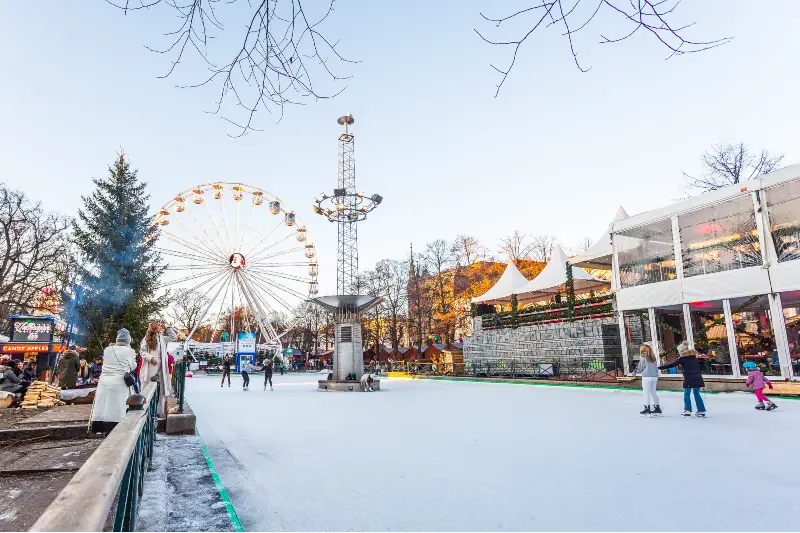
Jul i Vinterland is a paradise for families. Little ones can meet Santa Claus himself, sharing their Christmas wishes and receiving a small gift to cherish. The Santa residence is a picture-perfect backdrop for holiday photos, creating lasting memories. The grand Ferris wheel is a highlight of the market. Ascend into the winter sky for panoramic views of Oslo’s sparkling cityscape. It’s a romantic experience for couples and an awe-inspiring adventure for children. And for those who love to glide gracefully on ice, the ice rink offers an opportunity to twirl and glide under the open winter sky.
Jul i Vinterland is not only Oslo’s but Norway’s most visited Christmas market , drawing visitors from all around the world. In addition to the enchanting market stalls, there are amusement park rides that are sure to delight both you and your children. While the park itself is free to enter , you’ll need to purchase tickets for these thrilling rides. Mark your calendar from mid-November to early January to experience the sheer magic of Jul i Vinterland . It’s a place where cherished holiday traditions come to life, and every corner is filled with the spirit of Christmas.
Planning your trip? Check out our definitive guide to the best THINGS TO DO AND SEE IN OSLO .
Christmas Market at Youngstorget
When the weather outside is less than inviting, seek refuge at the indoor Christmas Market at Youngstorget (Julemarked på Youngstorget) . This beloved Christmas tradition has been gracing Youngstorget for over a decade, and it’s a true holiday gem. What sets this market apart is its enchanting Sami theme, where visitors can immerse themselves in Sami culture and find unique treasures like dried reindeer meat , exquisite horn products, soulful Sami music and handcrafted jewelry infused with Sami charm. The market is hosted within heated lavvu tents, ensuring a delightful shopping experience no matter the weather.
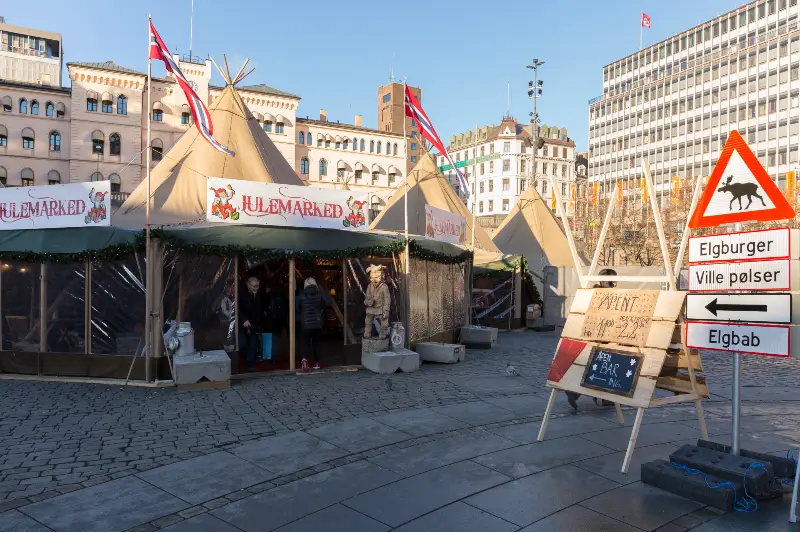
What makes this market truly special is its semi-indoor setting , allowing you to savor an authentic Norwegian atmosphere while staying cozy on a chilly winter day. Wander through the stalls, brimming with an extensive assortment of Christmas decorations and handcrafted souvenirs , perfect for capturing the essence of Oslo and Norway to take home.
With over 1,000 square feet of shopping space, not only will you discover unique gifts, but you’ll also indulge in a delectable array of local delicacies . This market is the ultimate destination to savor Christmas specialties and uncover hidden treasures, all while immersing yourself in the rich tapestry of Norwegian tradition. The indoor Christmas Market at Youngstorget runs from mid-November until the end of December , offering ample time to experience the magic of the season.
Norsk Folkemuseum Christmas Fair
As the Christmas season descends upon us, the Norsk Folkemuseum undergoes a mesmerizing transformation, turning into a captivating wonderland where visitors are transported into an unparalleled festive realm. The air is filled with the irresistible scents of freshly baked bread and aromatic spices , permeating every nook and cranny of the museum. Meanwhile, the resonating melodies of traditional Christmas music echo through the air, infusing everyone’s hearts with the warmth and anticipation of the holiday season.
The Norsk Folkemuseum ‘s annual Christmas Fair stands as an extraordinary event that beckons thousands of guests from across the globe. This jubilant Christmas celebration boasts an array of over 100 enchanting Christmas stalls , each offering a chance to discover unique gifts, handcrafted Christmas ornaments, and delectable traditional Norwegian delicacies. Here, you’ll embark on a journey into Norwegian culture within a distinctive Christmas context, fully immersing yourself in the tapestry of tradition and artistry.
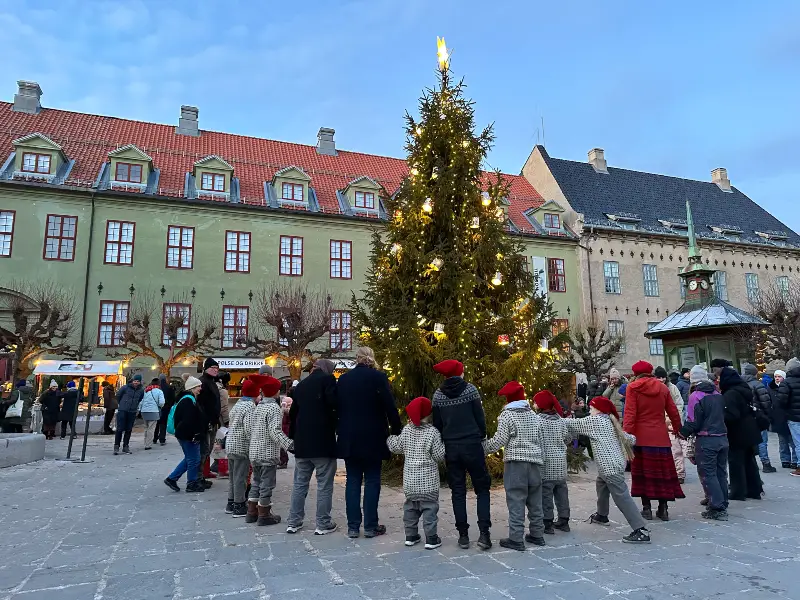
For the younger ones, the Christmas Fair unfolds a realm of enjoyment with delightful pony rides and opportunities to interact with charming farm animals . However, the true magic unfolds within Santa’s workshops , where young visitors can craft personalized Christmas decorations and unlock the secrets of Santa’s timeless craft. Furthermore, the Christmas Fair plays host to an authentic candle factory , where you can witness master craftsmen at work, crafting exquisite decorative candles that will soon grace the homes of countless families as cherished Christmas adornments. Candle artistry is a centuries-old tradition in Norway, and this fair presents a rare chance to witness this craft in action.
In addition to these delights, the Norsk Folkemuseum’s Christmas Fair showcases exhibitions that pay homage to and illuminate Norwegian Christmas traditions. These displays offer a captivating glimpse into the history and customs of Christmas in Norway , allowing visitors to further immerse themselves in the rich holiday atmosphere and cultural heritage of this captivating country. The Norsk Folkemuseum Christmas Fair stands out as one of Oslo’s most charming Christmas Markets , a delightful seasonal tradition. However, it’s important to note that this enchanting fair is only hosted on specific days , typically during the first two weekends in December , running from 11 am to 4 pm.
Nestled in the picturesque setting of Bygdøy , the museum itself is among the finest in Oslo. It’s an open-air treasure that beautifully traces Norway’s cultural heritage, showcasing traditional architecture and locals adorned in traditional Norwegian attire. Reaching the Norwegian Folk Museum from downtown Oslo is a breeze. A quick and convenient 20-minute bus ride from Jernbanetorget , the transportation hub situated just outside Oslo Central Station , will get you there. Additionally, it’s worth noting that entry to the museum and unlimited bus rides are included with the Oslo Pass , making it an even more attractive option for exploring this cultural gem.
The Best Christmas Markets Around Oslo
Bærums verk oslo christmas market.
Nestled just 20 km away from Oslo, the idyllic village of Bærums Verk undergoes a remarkable transformation each year as it blossoms into a captivating Christmas wonderland just in time for the holiday season. This charming yet somewhat hidden gem in the Oslo region is renowned for hosting a traditional Christmas market that stands out as one of the most captivating and beloved in the entire area.
The cobblestone streets of Bærums Verk are adorned with picturesque wooden houses and centuries-old artisan workshops , where age-old crafts such as ironwork, glassblowing, and woodworking spring to life. When Christmas descends upon the village, it comes alive with enchantment, casting a spell with its twinkling lights, festive decorations, and the irresistible aroma of delectable local gastronomic delights sourced from the bustling farmers’ market.
For visitors of all ages, there is a plethora of activities to partake in. Revel in horse-drawn carriage rides , savor the joy of enthralling Christmas tales, engage in hands-on Christmas workshops , and lose yourself in the three-dimensional Norwegian artistry showcased in the village’s exquisite sculpture park. To truly complete your Christmas experience, Bærums Verk offers access to 40 charming shops where you can discover and acquire unique artisanal treasures that make for exceptional holiday gifts.
Reaching Bærums Verk is easy: simply hop on bus 150 from Oslo Central Bus Station and disembark at the Gullhaug Bærums Verk stop. Best of all, entry to the village is free , granting you the freedom to explore this magical Christmas destination at your own pace, creating cherished memories to last a lifetime.
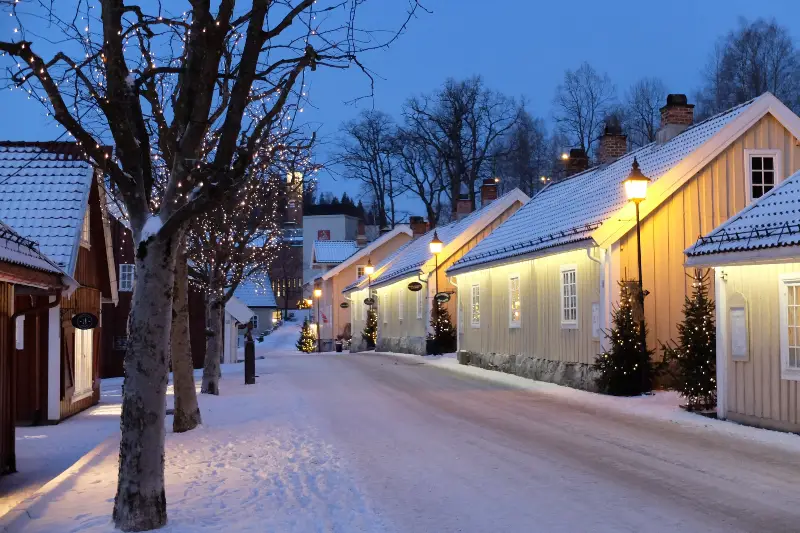
Hadeland Glassverk Christmas Market
Nestled amidst the picturesque Norwegian hills, a mere 40 kilometers north of Oslo, lies the storied Hadeland Glassverk glass factory, a historical treasure dating back to its founding in 1762 . It proudly holds the distinction of being the oldest continuously operating industrial company in Norway. This enchanting location becomes the stage for an extraordinary celebration that ushers in the Christmas season in a truly magnificent manner.
Each year, Hadeland Glassverk undergoes a breathtaking transformation, turning its lovely park and charming old wooden houses into a mesmerizing wonderland. The “ Festival of Lights “, a truly remarkable event, commences as the Governor of the Region illuminates 50,000 lights , casting a spellbinding aura that encapsulates the spirit of Advent. These tranquil yet affectionate weeks leading up to Christmas are ushered in with this awe-inspiring spectacle.
However, the magic of Christmas at Hadeland Glassverk extends far beyond this captivating display. Inside the indoor market, bathed in a warm and inviting ambiance, you’ll discover a wide array of activities suitable for both young and old. Treat your taste buds to the delectable Norwegian Christmas sweets and explore an extraordinary assortment of glassware , ideal for elegant Christmas gifts. For an added dash of excitement, embark on a thrilling sleigh ride through the beautifully adorned Christmas-themed glass village or enjoy some ice skating on an indoor rink.
Blaafarveværket Museum Christmas Market
Nestled just an hour’s drive from the bustling city of Oslo, Norway, lies the hidden gem of Blaafarveværket Museum . This extraordinary institution takes on a magical transformation during the Christmas season, becoming a captivating Christmas village that promises a unique and unforgettable experience. The roots of Blaafarveværket Museum are deeply intertwined with the cobalt mines that played a pivotal role in centuries past, fueling the ceramic and glass industries. Founded in 1773 , these mines were instrumental in the production of cobalt pigments, and the museum now offers a captivating journey into the history of these ancient cobalt mines.
The enchantment of the Christmas spirit permeates the air, especially during the Advent season. Within the museum’s inviting restaurants, visitors can savor an array of locally inspired culinary delights, from delectable biscuits to traditional Christmas sausages and herring , as well as liver pates and cheeses aged in the very heart of the mine. Moreover, the opportunity to discover unique Christmas gifts beckons, including artisanal creations crafted from the mine’s own cobalt blue pigments .
Throughout the Advent period, the museum’s Christmas market is a daily delight, open from 12 pm to 5 pm. On weekends, complimentary workshops await children, where they can craft their own Christmas decorations, contributing to the festive ambiance that fills the air.
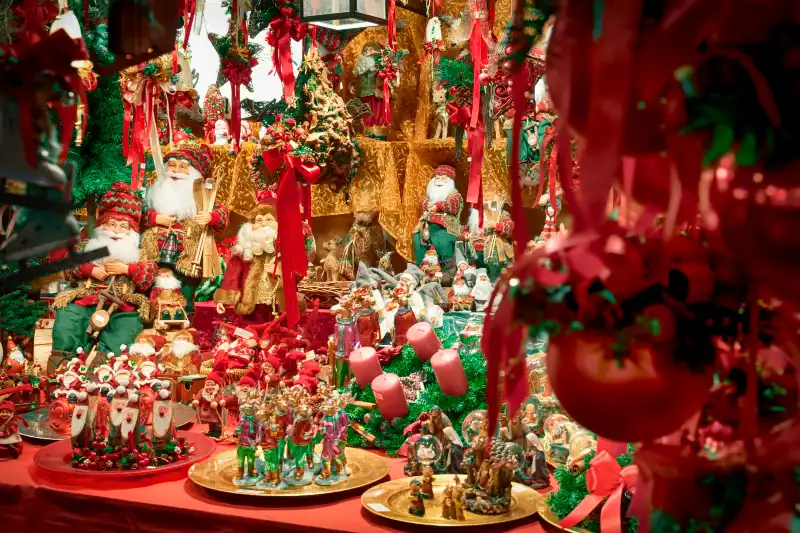
Julehuset – Santa’s House in Drøbak
Nestled in the heart of Drøbak , a scenic one-hour drive from Oslo, you’ll find the enchanting Julehuset , also known as Santa’s House . This magical destination stands as a year-round beacon of Christmas spirit, making it a unique gem in the region. Situated on the charming main square of Drøbak , a mere 35 kilometers away from the bustling city of Oslo, Julehuset is a delightful family attraction.
Step inside, and you’ll be transported to a winter wonderland, complete with a vast Christmas shop offering an extensive array of festive treasures . From ornaments, candleholders, and napkins to whimsical elves, Christmas mice, tablecloths, and candles, this store is a haven for anyone seeking holiday magic. Here, you can uncover hidden gems and one-of-a-kind pieces to adorn your home or share with loved ones during the holiday season.
But Julehuset offers more than just a delightful shopping experience. The festive ambiance extends throughout the premises, making it an unforgettable visit for the entire family. Kids can explore designated areas designed just for them, accompanied by the soothing sounds of Christmas music that fill the air. Don’t forget to visit Santa’s Post Office , where you can have your mail stamped with Santa’s official seal. It’s the perfect place to ensure your letters and wishes reach the North Pole.
To reach Drøbak from Oslo, you can embark on a scenic drive, reveling in the beauty of the stunning landscapes along the way. Alternatively, you can take bus route 500 , which departs from the Oslo Bus Terminal , but there are only a limited number of daily trips (usually 2 per day) available.
FAQs on Oslo Christmas Markets
Does oslo have christmas markets.
Yes , Oslo has some Christmas Markets scattered throughout the city center. The main ones are located right next to the train station and the main shopping street. The Oslo Christmas Markets are designed for the enjoyment of families, especially local families, and are not primarily intended as tourist attractions. They resemble amusement parks with children’s activities, playgrounds, and stalls selling sweets, candies, and gifts.
Does Oslo Have Good Christmas Markets?
Don’t expect anything like the large, picturesque, and extravagant Christmas Markets of Central Europe. The Oslo Christmas Markets are certainly more modest and therefore less renowned. However, if you are thinking of visiting Oslo in December , they are worth a look.
The Oslo Christmas Markets are still enjoyable, offering many family attractions and opportunities to purchase souvenirs and local specialties. You will find good food and hot drinks, including mulled wine. Furthermore, the Christmas atmosphere in Norway is truly magical , and this is a time of year that deserves to be experienced. I wouldn’t plan a trip to Oslo specifically to see its Christmas markets, but rather to enjoy its beautiful attractions, museums, and trips to the wonderful surrounding regions. Additionally, Oslo is less crowded and more authentic in winter.
When do the Oslo Christmas Markets open?
Oslo Christmas Markets usually open from mid-November to early January . Those in the center are open well beyond New Year’s Eve , while the smaller ones last until the end of December. It may, therefore, be worth planning your winter holiday in Oslo so you can fully enjoy what Southern Norway has to offer: a paradise for skiers and winter sports enthusiasts , world-class museums and attractions, fabulous snowy landscapes, and villages with irresistible charm in the hinterland around the city and along the Bergensbanen railway .
What is open in Oslo on Christmas?
Christmas Day and Christmas Eve are widely celebrated in Oslo. Usually, supermarkets, public and private offices, and most shops are closed on public holidays (25–26 December and 1 January). Christmas Eve and December 31st are not public holidays, but shops usually close early, typically around 3 or 4 pm at the latest.
However, some of the most important museums, such as the MUNCH Museum , usually remain open, as do outdoor attractions like Vigeland Sculpture Park , Akershus Fortress and the Ekebergparken Sculpture Park . As for restaurants, it is advisable to ask the individual establishments, as there is no uniform rule. Public transport operates as usual, and the city is rather quiet and uncrowded. Most Christmas concerts in Oslo theaters are held 1-2 days before Christmas Eve. The Oslo Christmas Markets may be closed on 25 and 26 December.

IMAGES
COMMENTS
VisitOSLO's suggestions for the perfect city summer in Oslo: Guides to rooftop bars and open air dining, city beaches, outdoor art, ... Oslo Convention Bureau Press and media Cruise Travel trade Visitor. Oslo Visitor Centre. OPENING HOURS SEPTEMBER. Monday-Friday: 9-17 Saturday-Sunday: 10-16. The tourist information's call centre
In the month of July, the average temperature in Oslo is around20°C (68°F). Occasionally, the temperature could reach 33°C (90°F). Also, expect rains and the average rainfall in July is 82mm. The summer months are just perfect to enjoy beach activities, swimming, and some other super cool activities . Gladmat.
July is a great time to visit Oslo. The weather is usually mildly cool, humid but cool, with temperatures ranging from 53—70°F (12—21°C). There are plenty of events to check out and activities to try in Oslo during this time. Some of our top recommendations: visit the Norwegian Museum of Cultural History, explore the Vigeland Sculpture ...
Oslo, Norway - Official travel guide
Best Times to Visit Oslo - U.S. News Travel
Why you should visit Oslo in July July is the perfect time to visit Oslo, with long days and pleasant weather. The city comes alive with a variety of outdoor events, festivals, and activities, making it an ideal destination for travelers seeking a vibrant cultural experience. From exploring the natural beauty of the surrounding fjords
For anyone interested in such, its panels and events make it a good time to visit. For me, having spent six years in Scandinavia, and long summers and winters in Norway, Oslo became a base for ...
Discover events happening in Oslo in July and activities that are perfect for a July trip to Oslo.
On the 2nd floor, don't miss Simone Hooymans' Plantenes Stemme (Talking Plants), an immersive, botanically-themed animation and soundscape. 5. Delve deep into the works of Edvard Munch. Looming over the waterfront at Bjørvika, Munch opened in 2021, as the new home dedicated to Norway's most famous artist, Edvard Munch.
The Top 15 Things to Do In Oslo. 1. Walk on the roof of the Oslo Opera House. Even if you're not into classical music, the Oslo Opera House is still home to one of the coolest things to do in Oslo. If you're not in the mood to go inside, take a walk on the roof instead and enjoy some of the best views of the city.
Visit the Open-Air Museum. Oslo's Folk Museum is one of the city's very best. It is at its most entertaining during the summer season, when the museum's old houses and farms come alive with costume-clad inhabitants, farm animals and even schoolchildren who visit the olden days for a week at a time. Though the museum is popular with ...
Oslo travel - Norway
Norway's premier city has always had grand architecture, a subversive artistic undercurrent and unfettered access to pristine nature. But a two-decade-long harborfront glow-up has catapulted Oslo from under-the-radar Scandi city to certified culture capital. Exceptional museums covering art, maritime exploration and ancient and modern history ...
Weeks with ideal weather are listed above. If you're looking for the very warmest time to visit Oslo, the hottest months are July, August, and then June. See average monthly temperatures below. The warmest time of year is generally late July where highs are regularly around 73.9°F (23.3°C) with temperatures rarely dropping below 57.3°F (14 ...
People visit Oslo for its world-famous cuisine, pulsating nightlife, gorgeous forests, icy landscapes, fjords, stunning architecture and world-class museums all year round. Plus, Oslo was named one of Lonely Planet's Top Ten Cities in 2018, and with good reason. The Norwegian capital invites visitors to explore the quaint, historic Gamle Oslo ...
Address: Nobels gate 32, N-0268 Oslo. Official site: https://vigeland.museum.no/en. 2. See the Museums in Akershus Fortress. Akershus Fortress. Rising above the Oslofjord, on the promontory of Akernes, sits the majestic Akershus Fortress (Akershus Festning) built by Håkon V at the end of the 13th century.
3 Days In Oslo: The Ultimate Oslo Itinerary
Nestled in the heart of the Norwegian capital, Jul i Vinterland is a captivating celebration that transforms the city into a winter wonderland right outside of Grand Hotel Oslo by Scandic and Paleet Shopping. Drawing locals and visitors alike, this market is a testament to the magic of the season. The Christmas market is located in the heart of ...
Oslo's oldest and largest market, with furniture, china, glass, kitchenware, paintings, silver, jewellery, clothes, glass and all kinds of collector's items. The bric-a-brac/antiques market is located on the corner of Professor Dahls gate... 09:00-17:00. Amaldus Nielsens plass.
The warm July weather heats up both freshwater lakes as well as the ocean, and July is a great time to go swimming in Norway. You can take a dip in one of the thousands of lakes, in the fjords, in the ocean by a beach, or in one of the many rivers and streams in the forest. July is also the time when the Norwegian beaches gets crowded.
Jul i Vinterland: The Best Oslo Christmas Market. Nestled in the heart of Oslo, the Christmas Market at Spikersuppa along Karl Johan Street - known as "Jul i Vinterland" - stands as the crowning jewel among the city's festive celebrations.This enchanting market is more than just a traditional gathering of wooden stalls, it's a captivating winter wonderland that transforms the main ...
Phone, chat and e-mail. Our call center is open on weekdays between 10:00 and noon, and between 12:45 and 15:00. Call us: (+47) 23 10 62 00. Chat with us by clicking the speech bubble icon in the bottom right corner on our web page. Send us an e-mail to [email protected].
Jul I Vinterland. Dec 2019. The Christmas market called Jul I Vinterland or Julemarkedet I Spikersuppa is located on the most beautiful shopping street in OsLo, closed to the theater . . Many stalls, food, clothing, crafts, carousels. , ice skating rink, hot wine under a heated covered terrace, or around a wood fire. ..